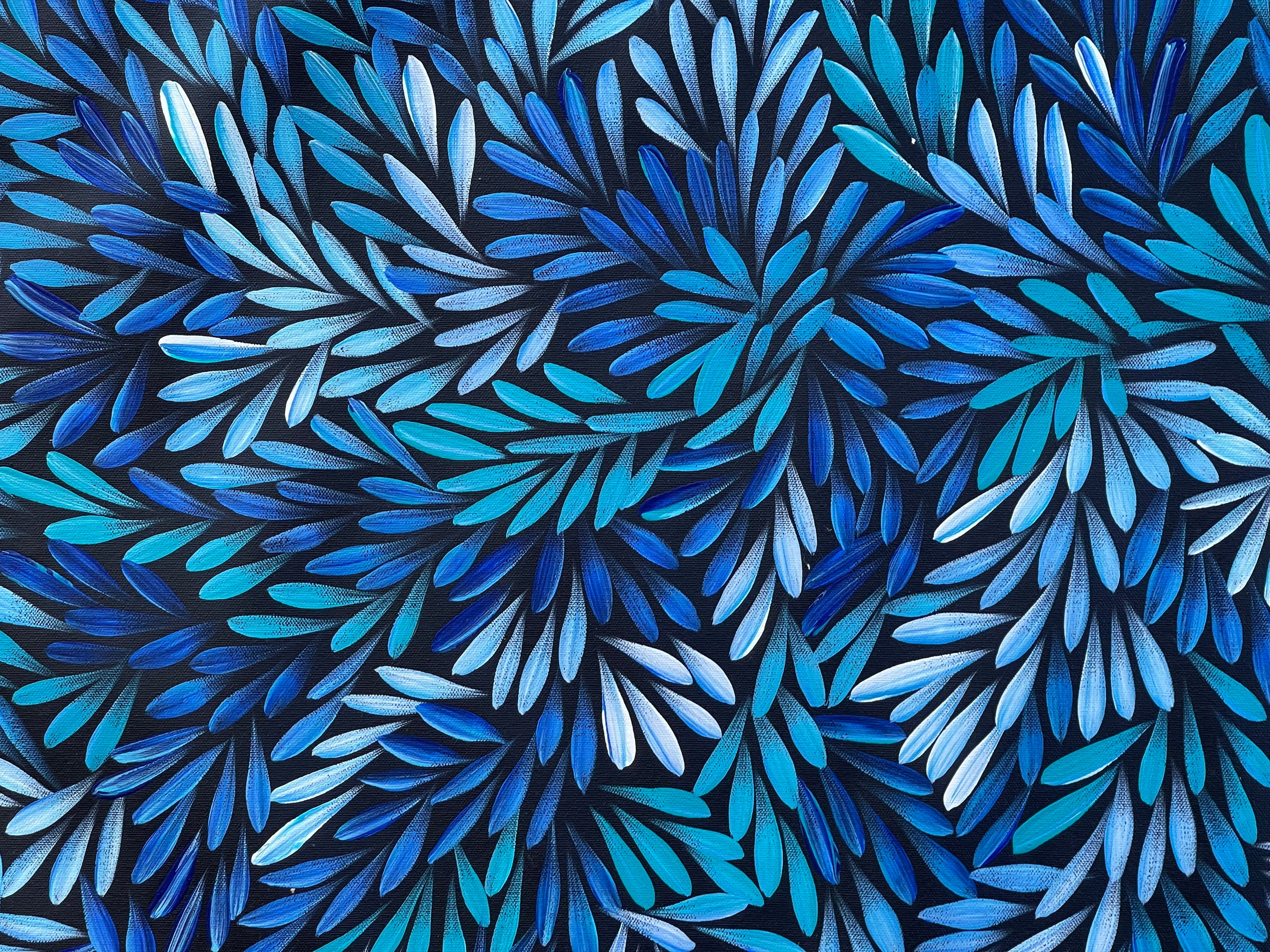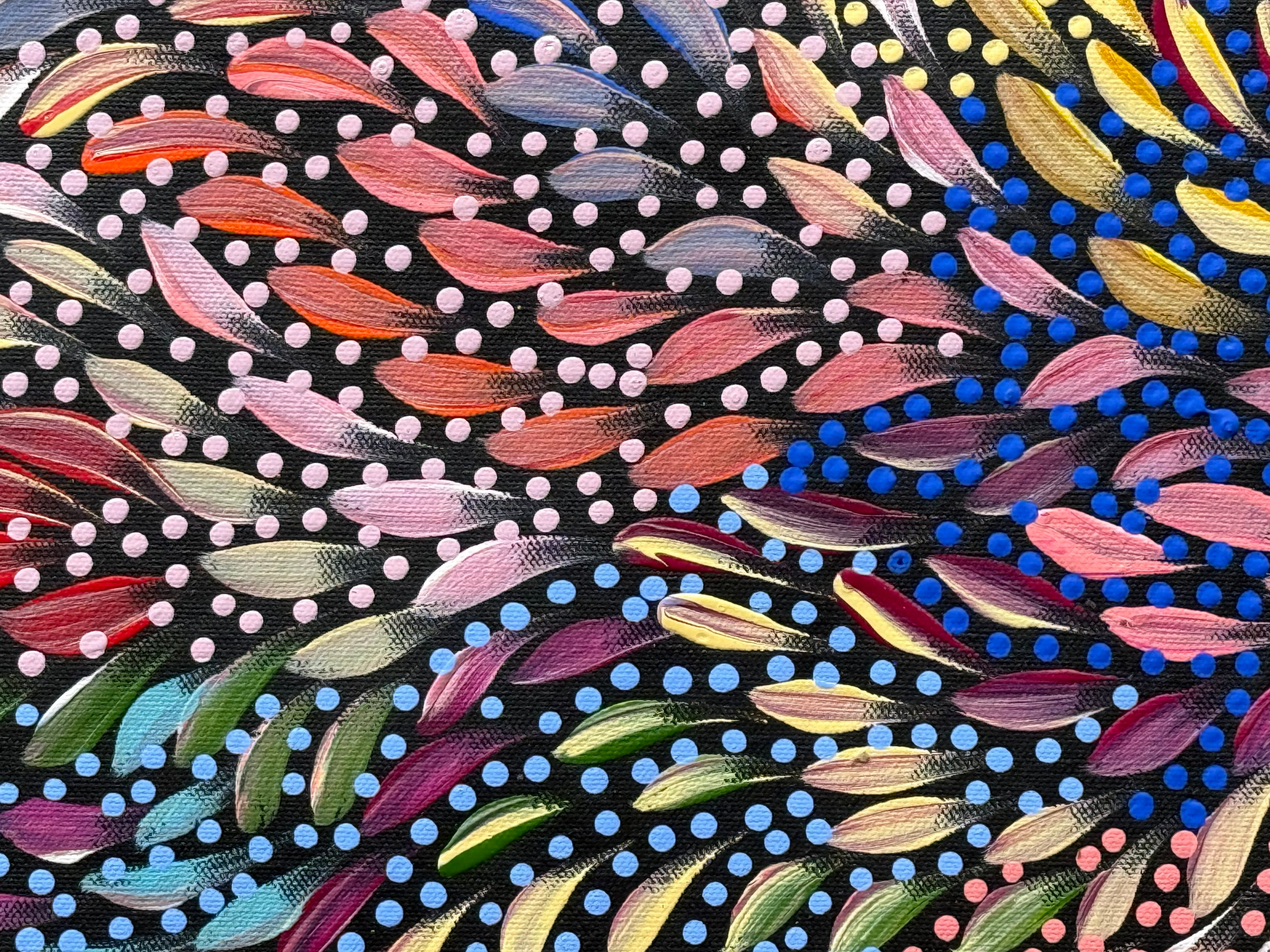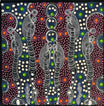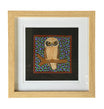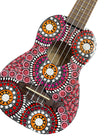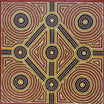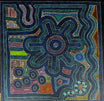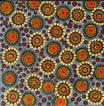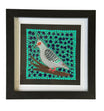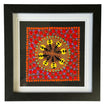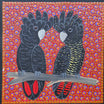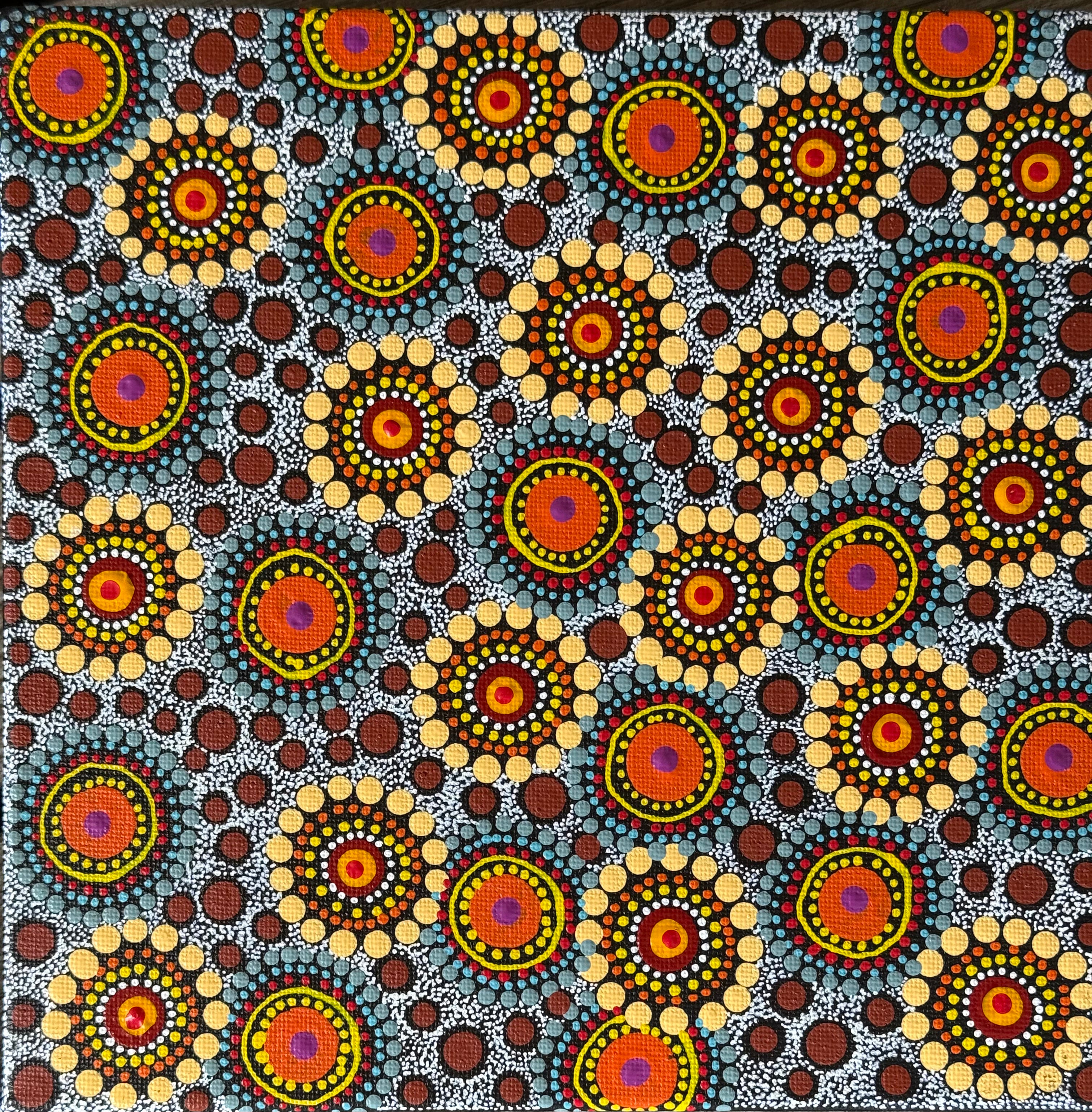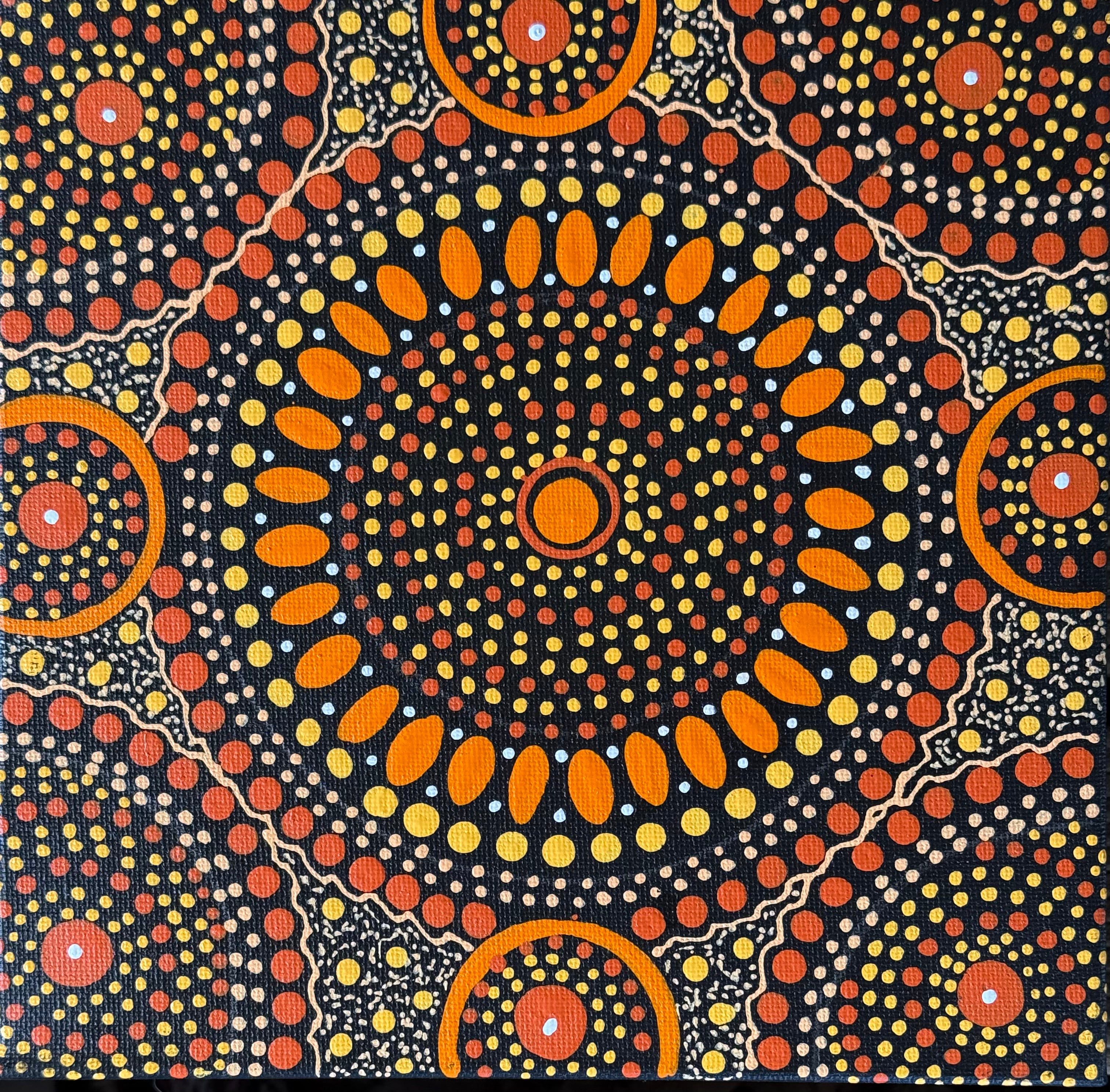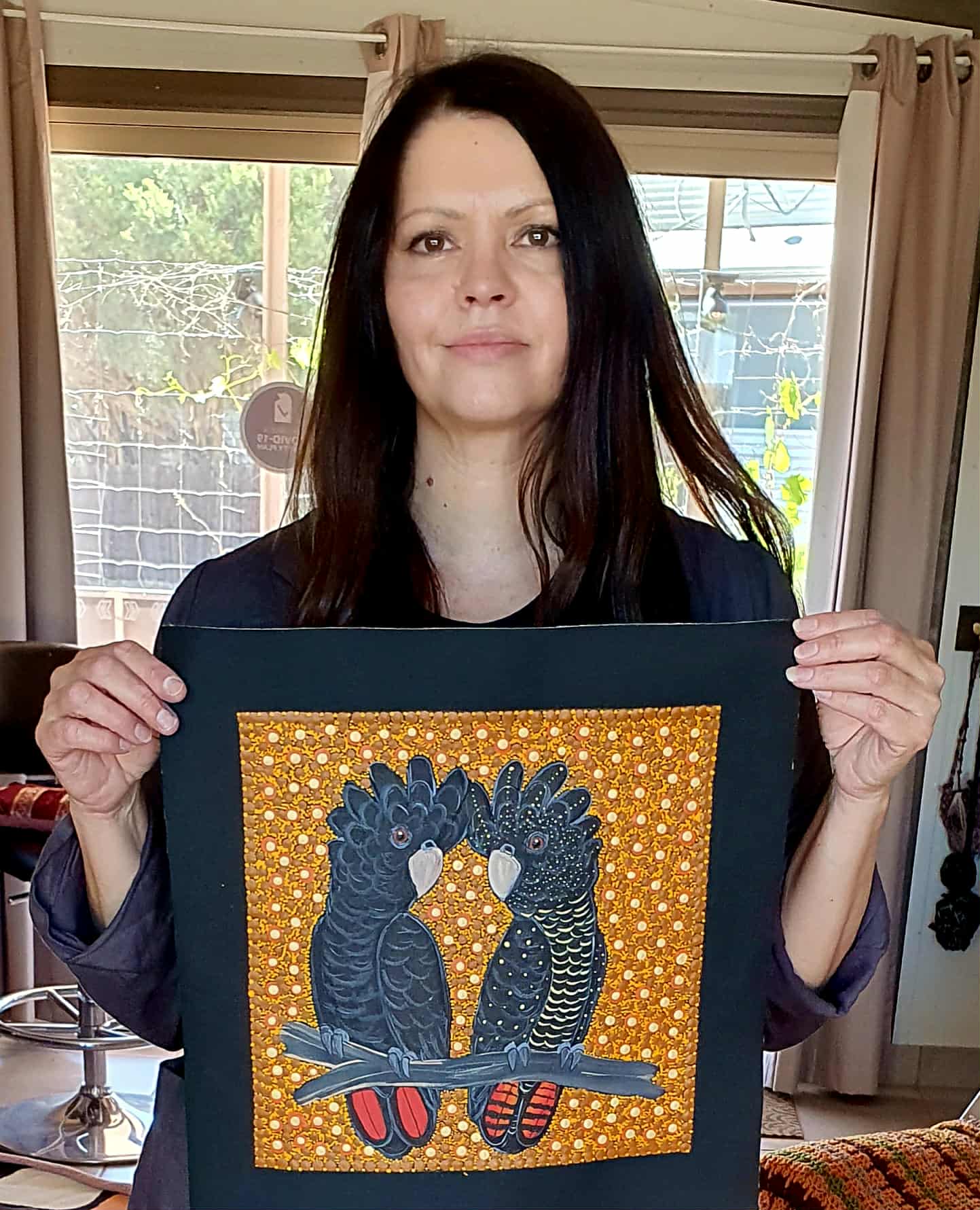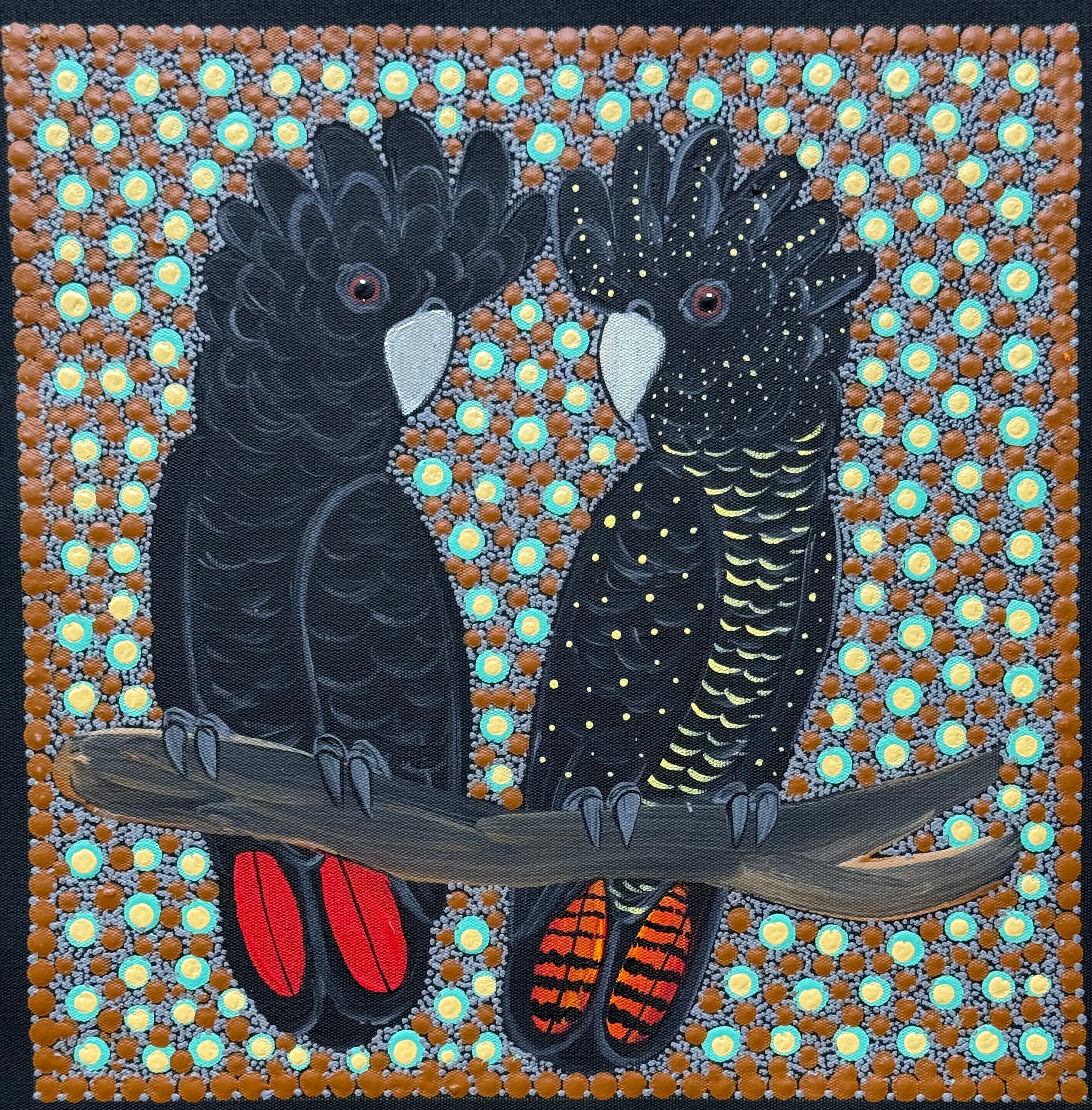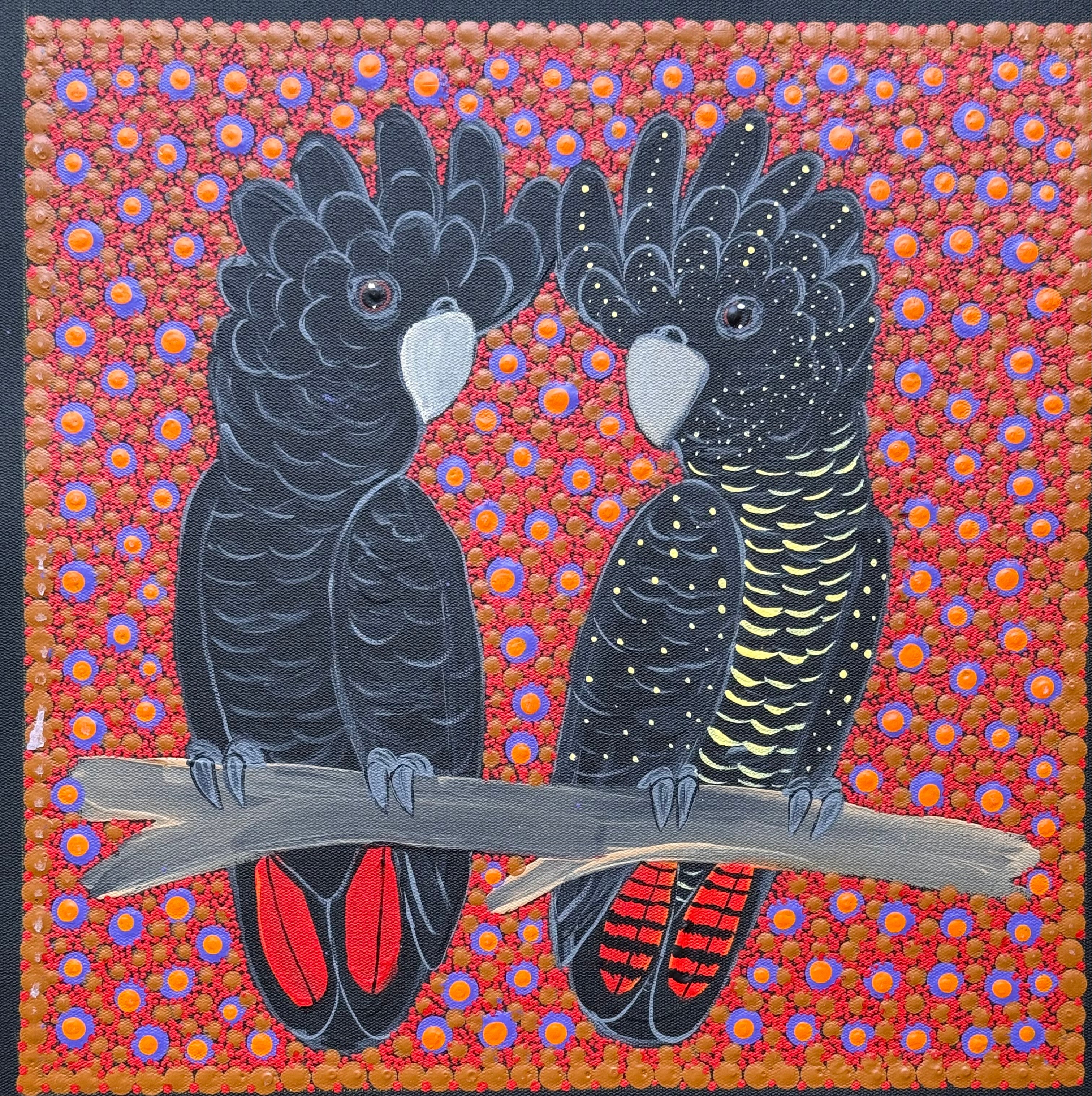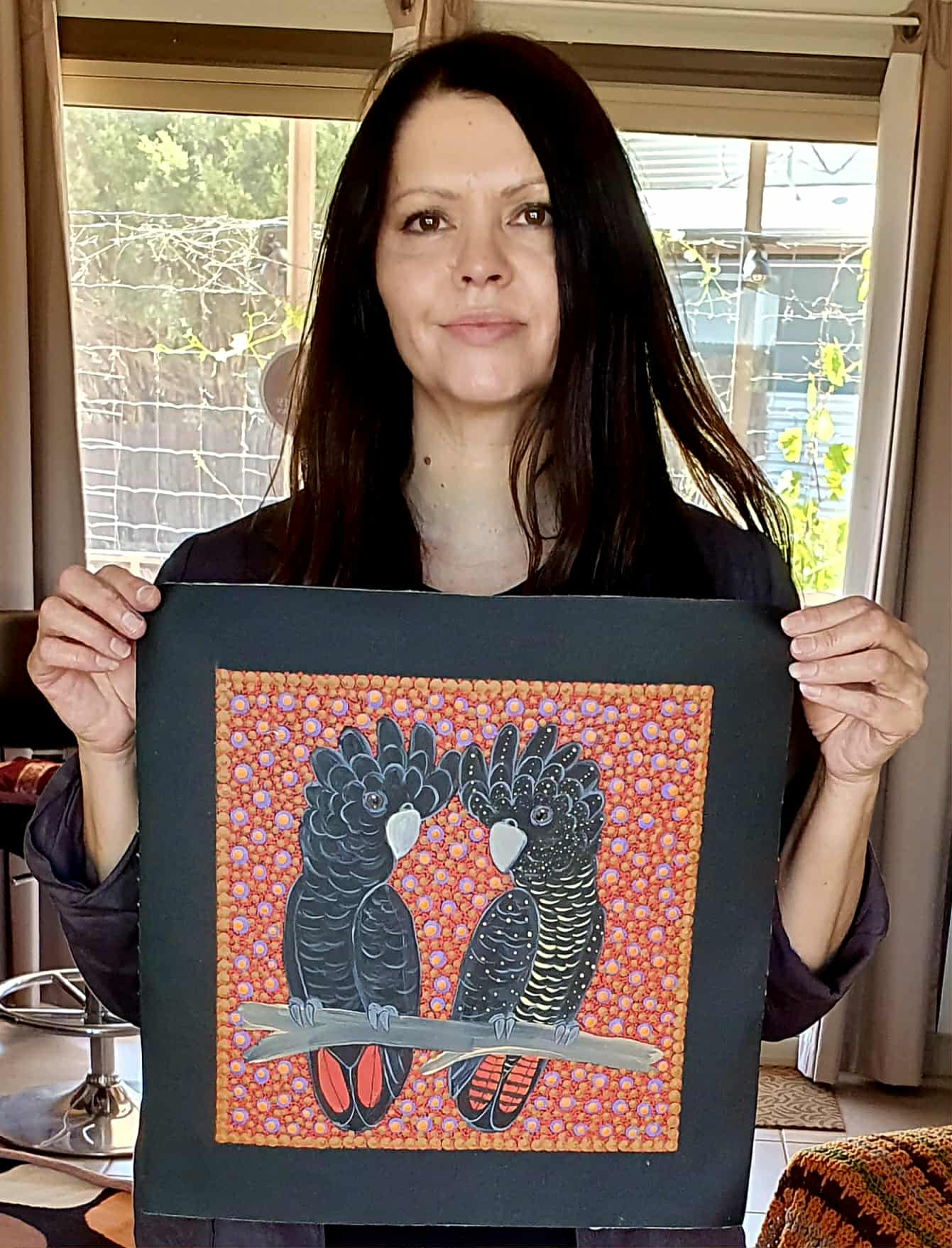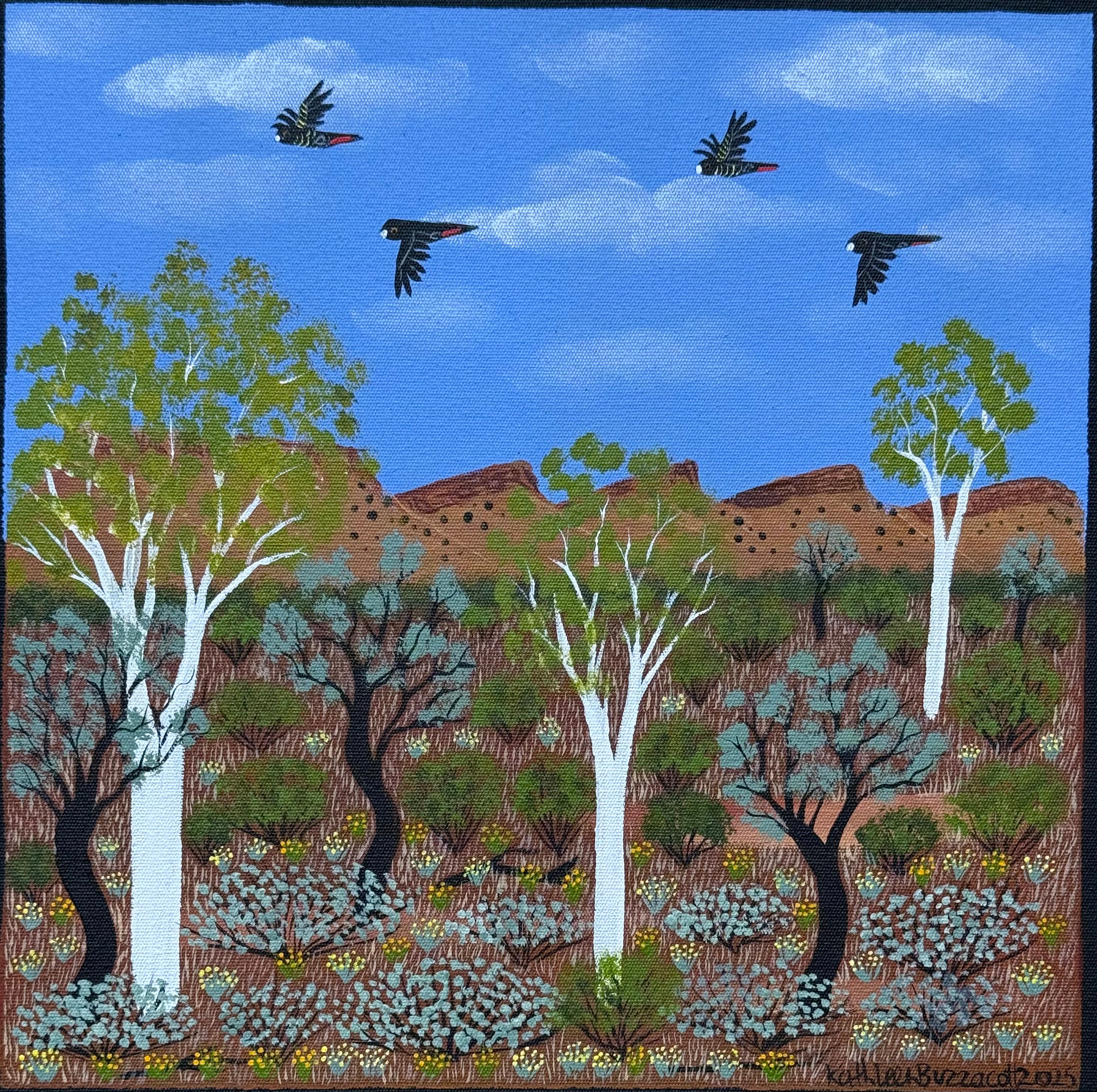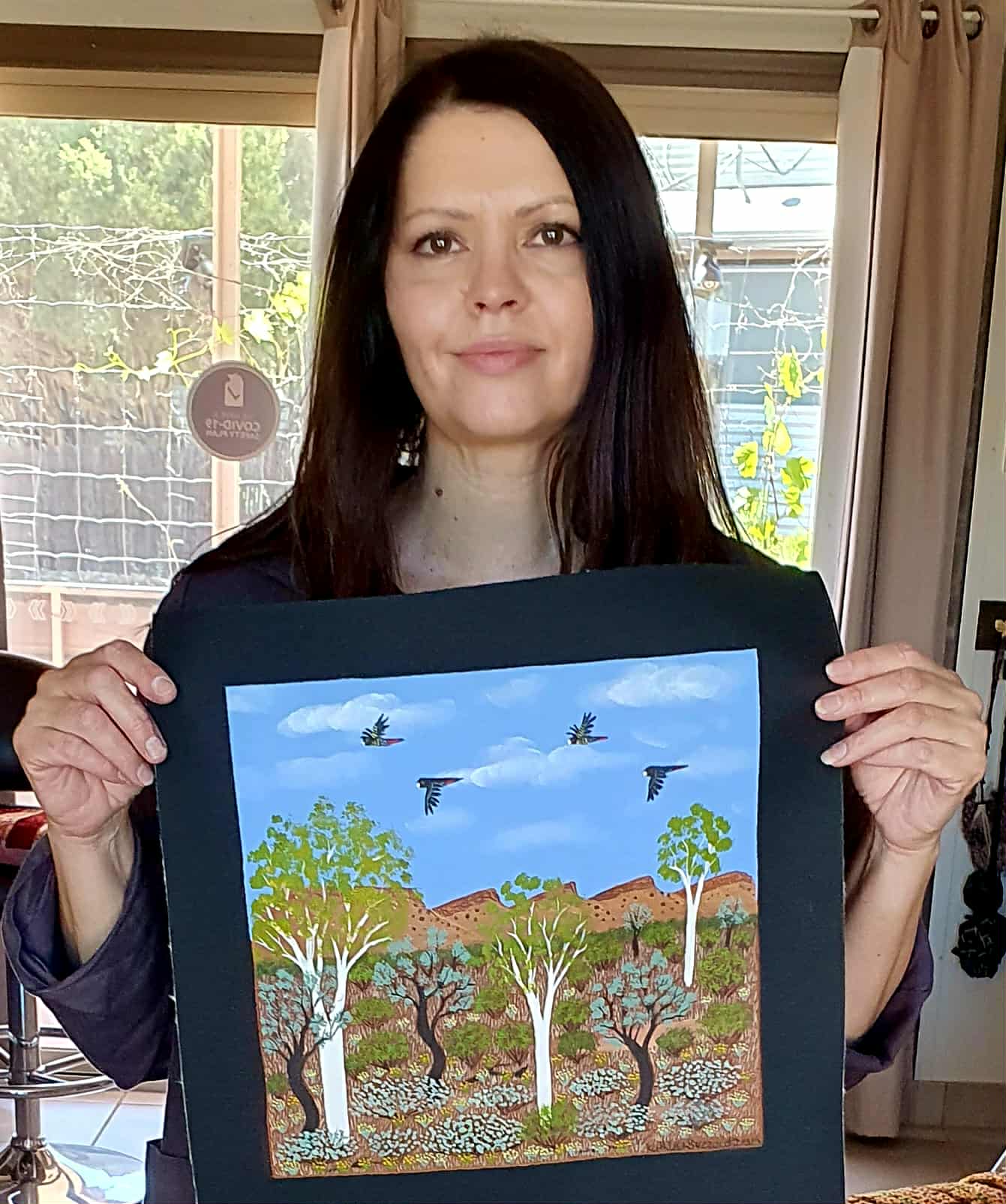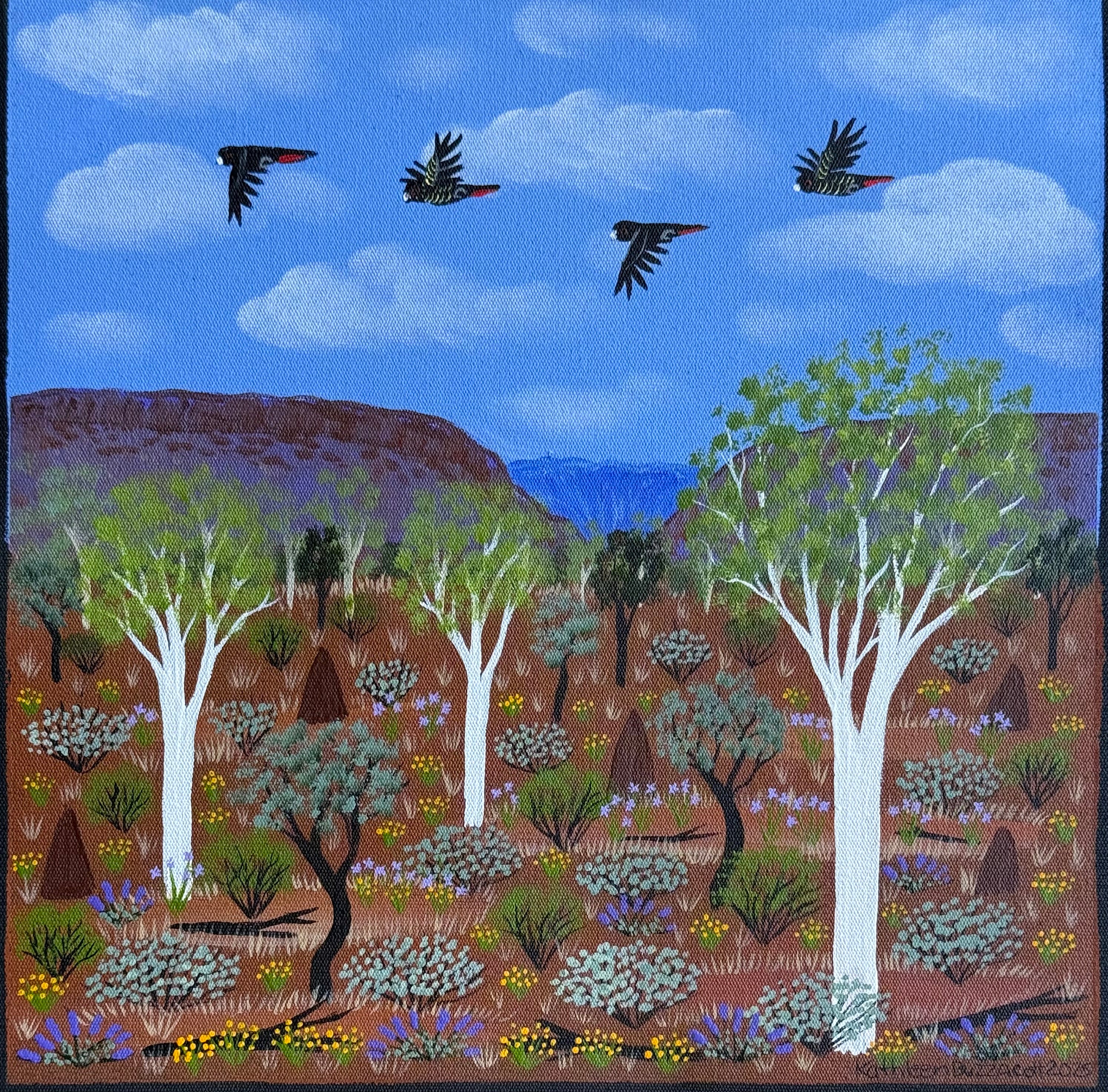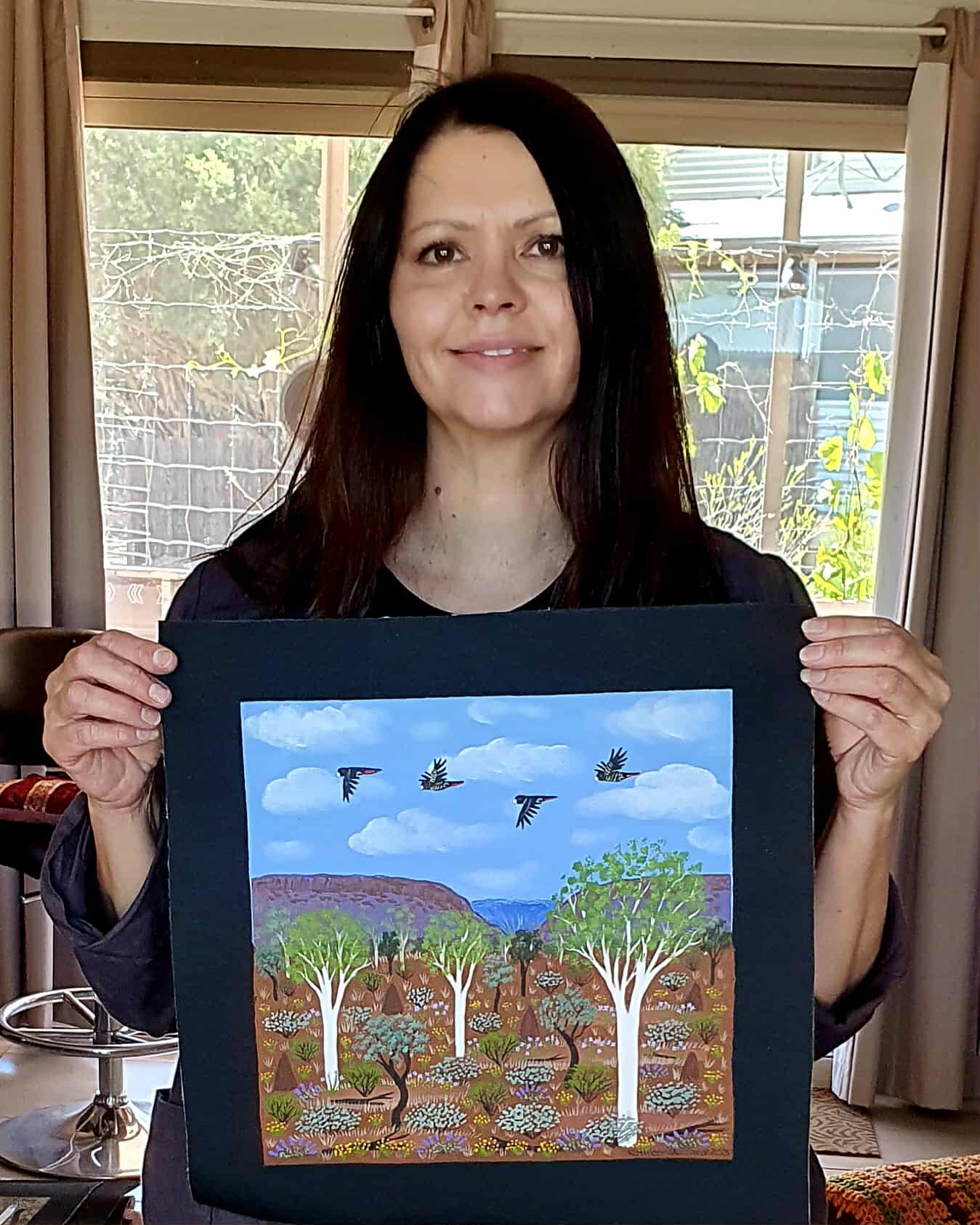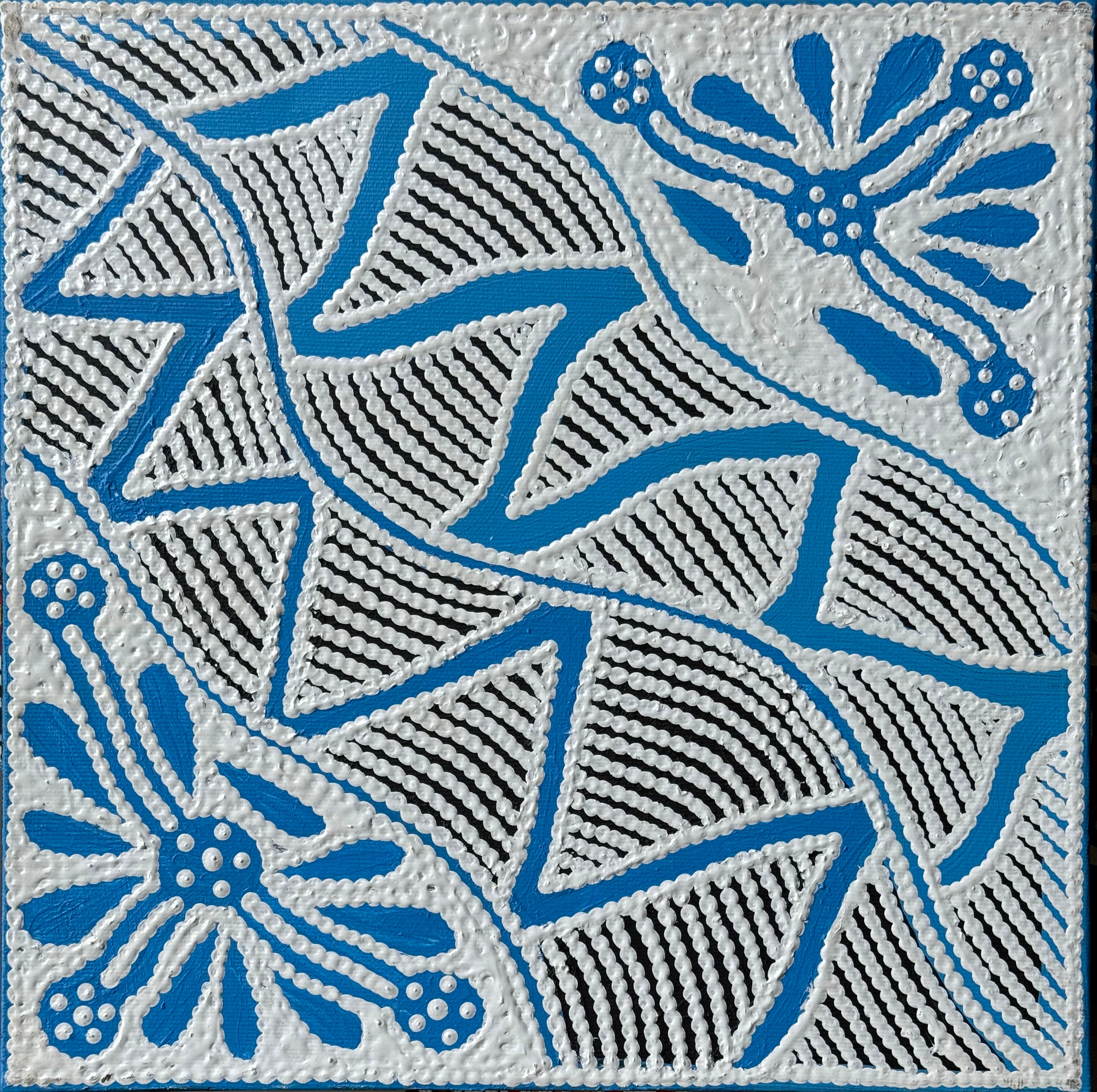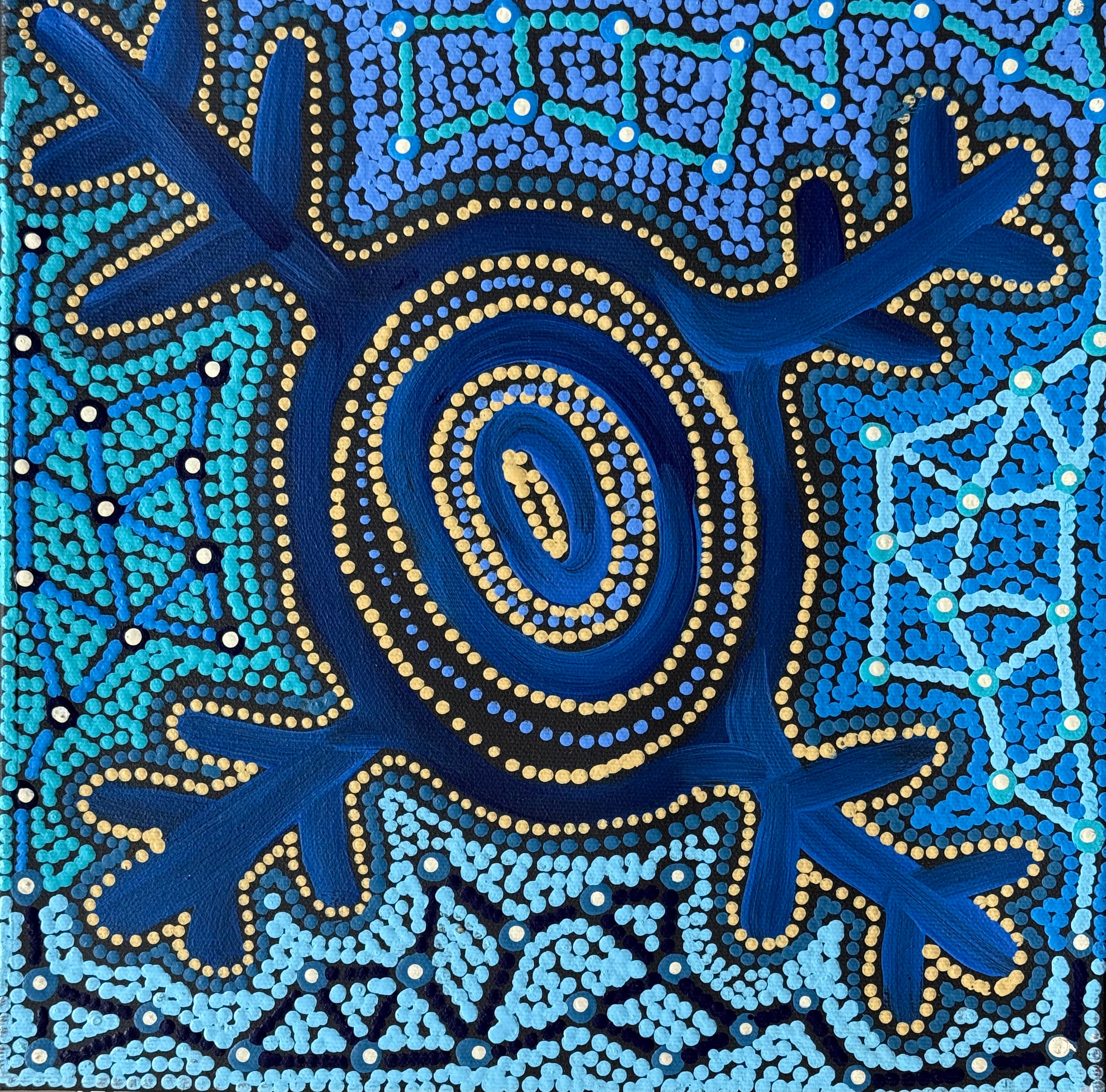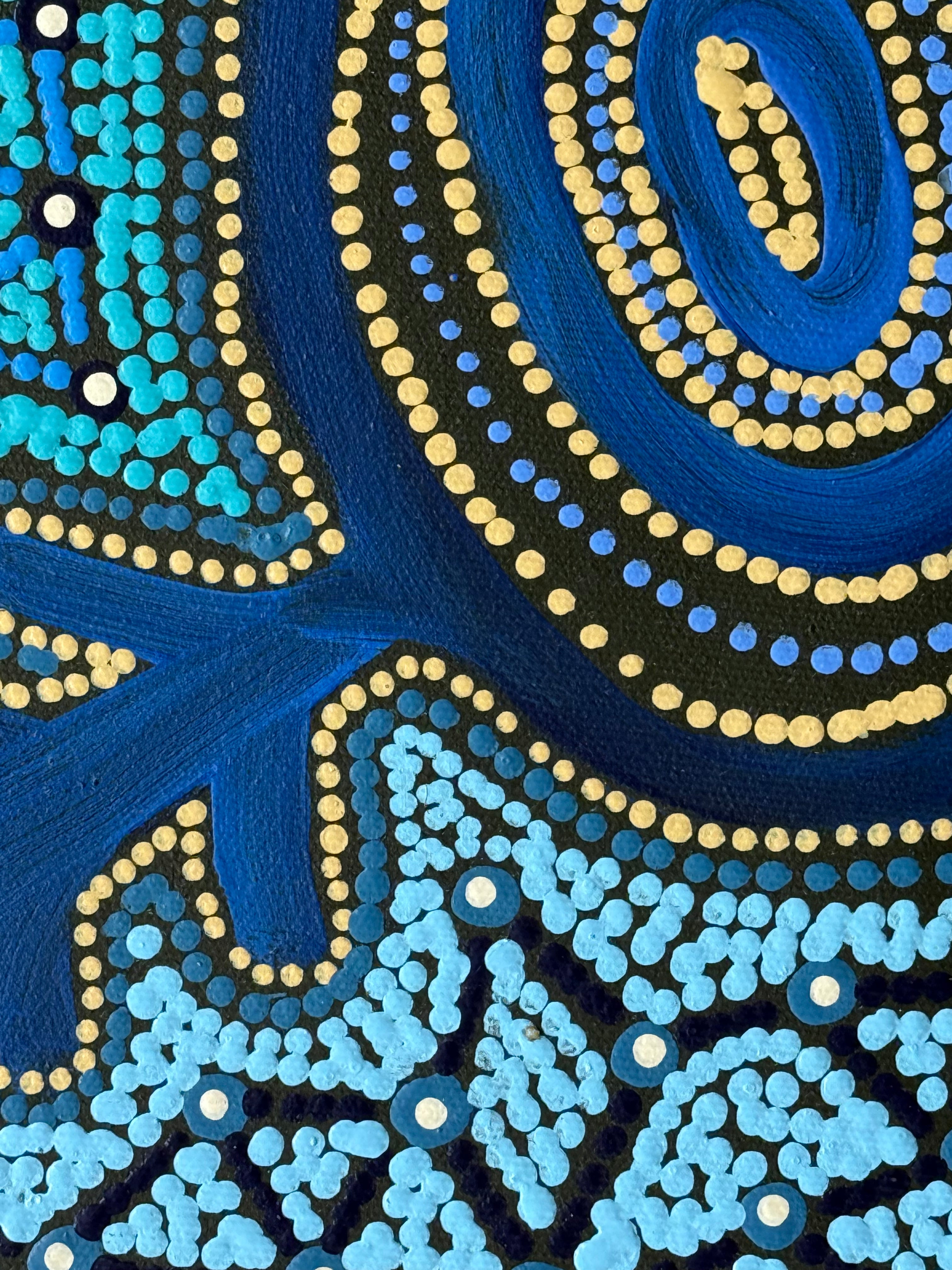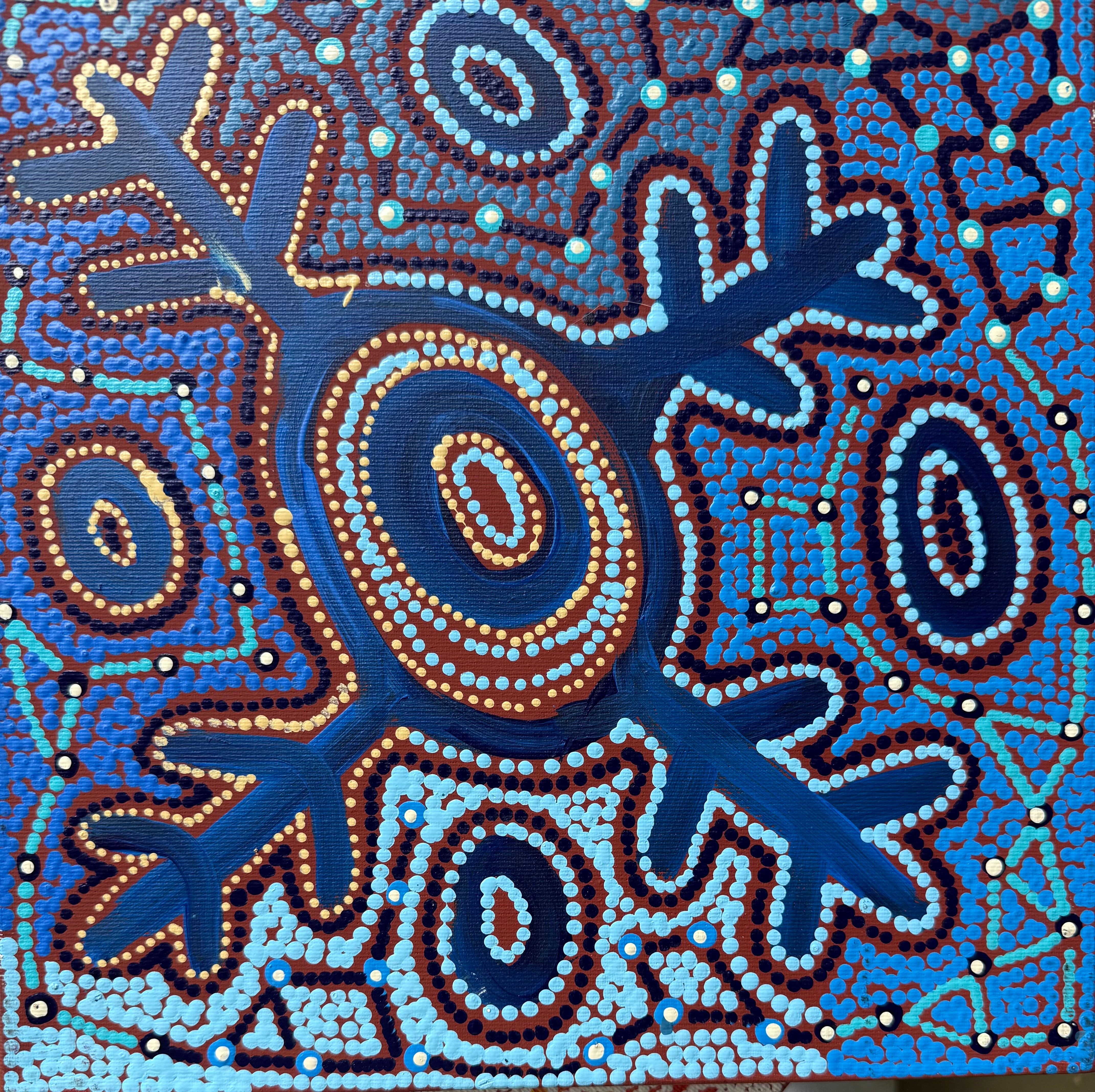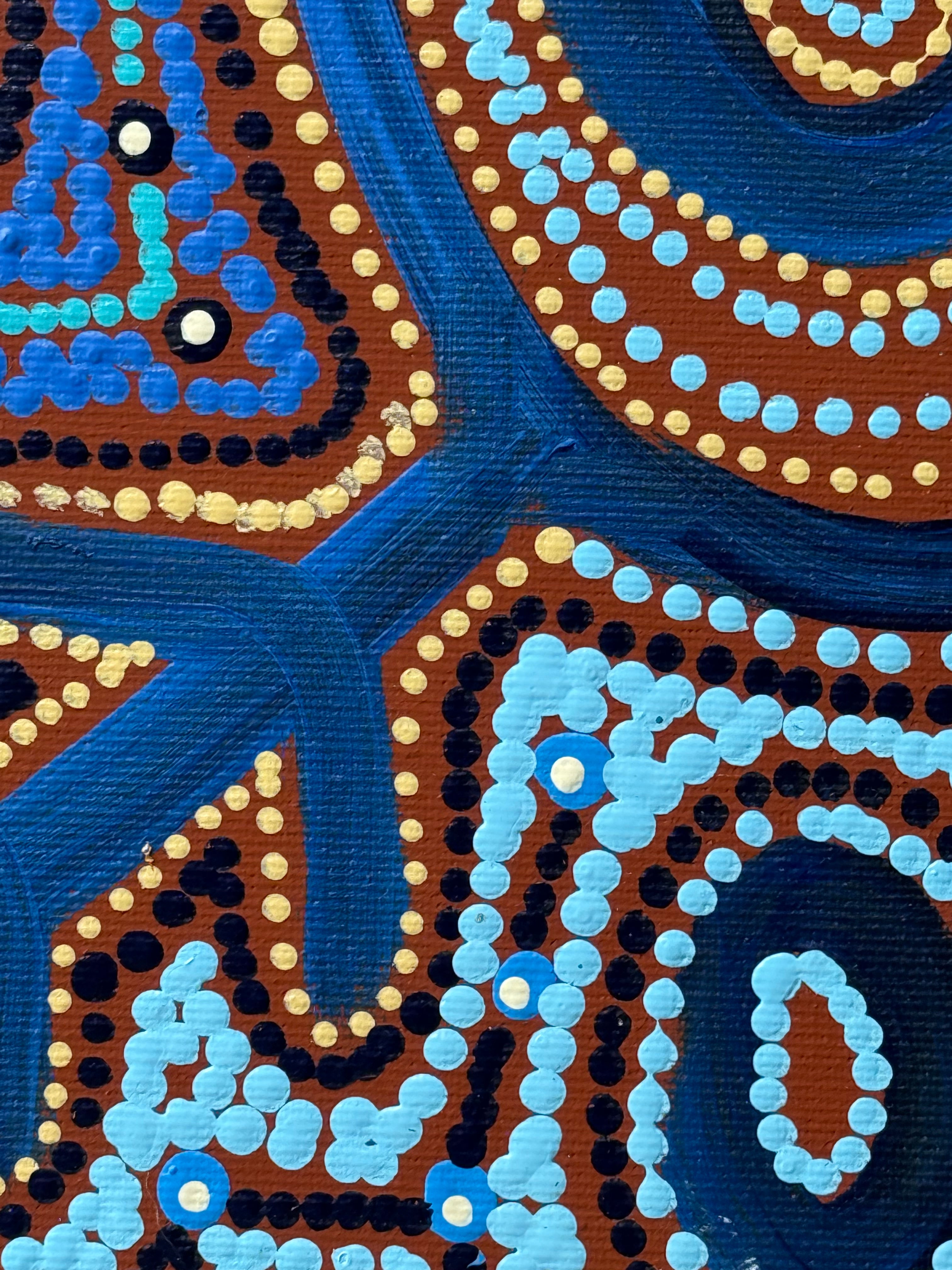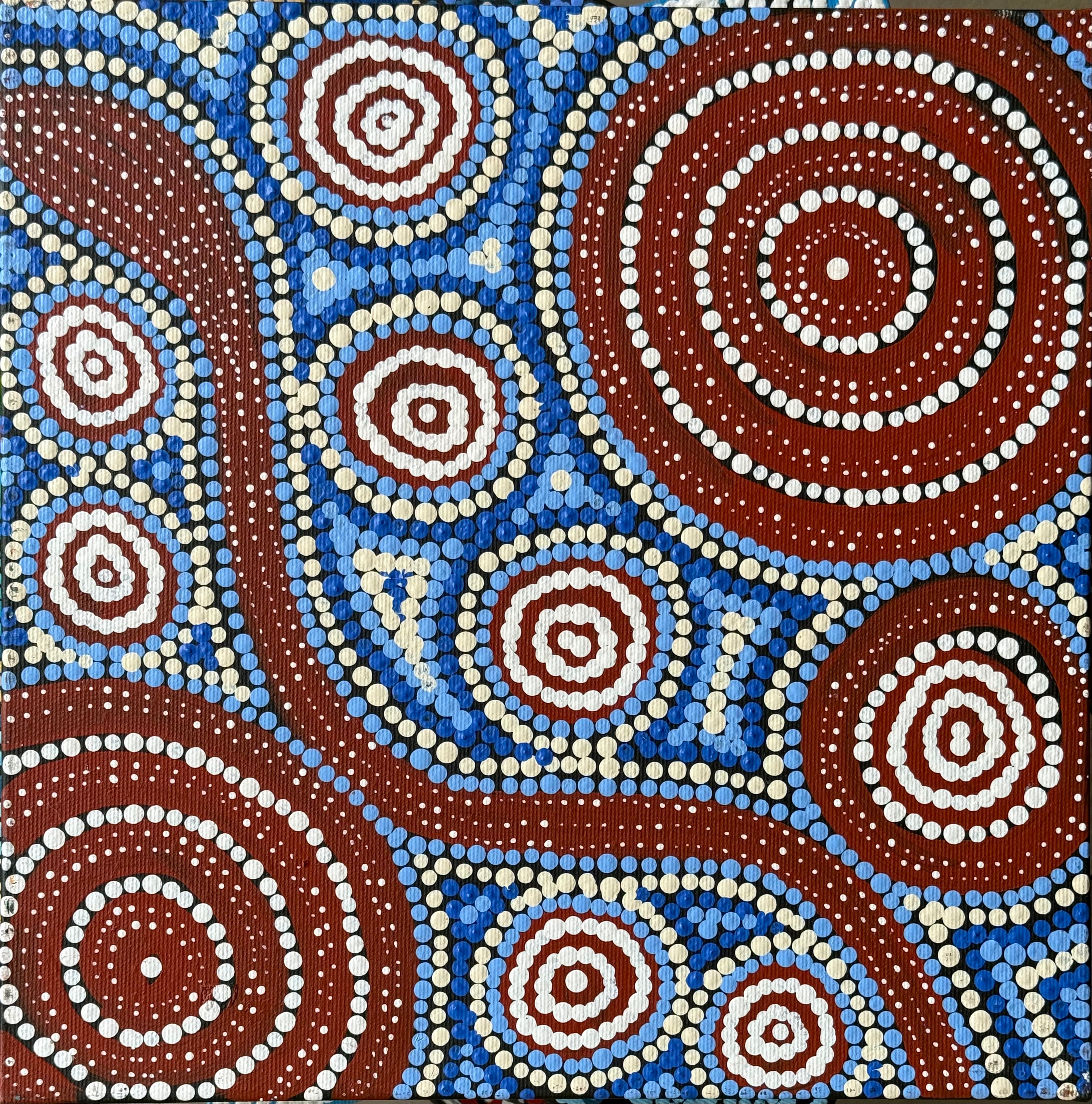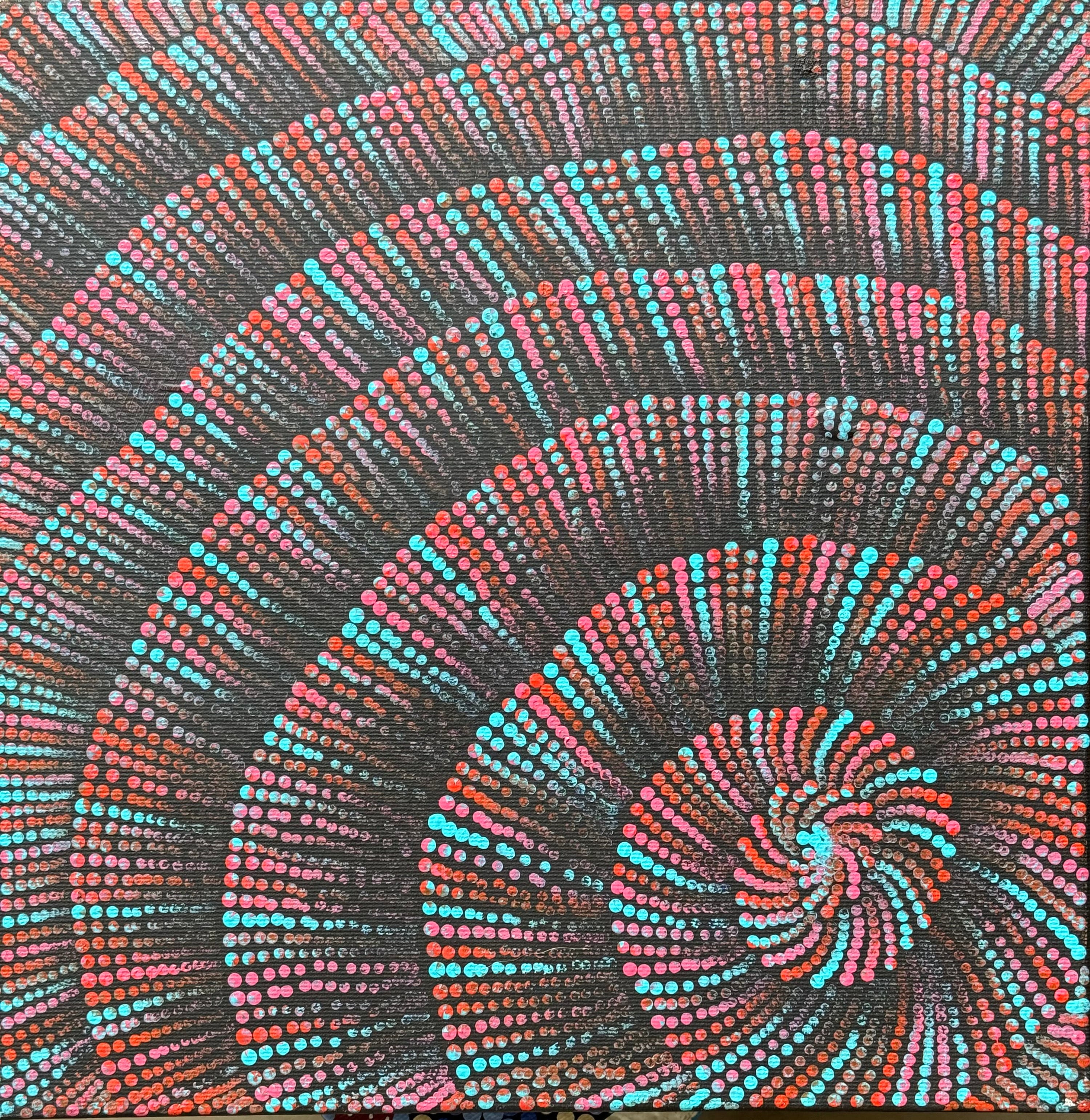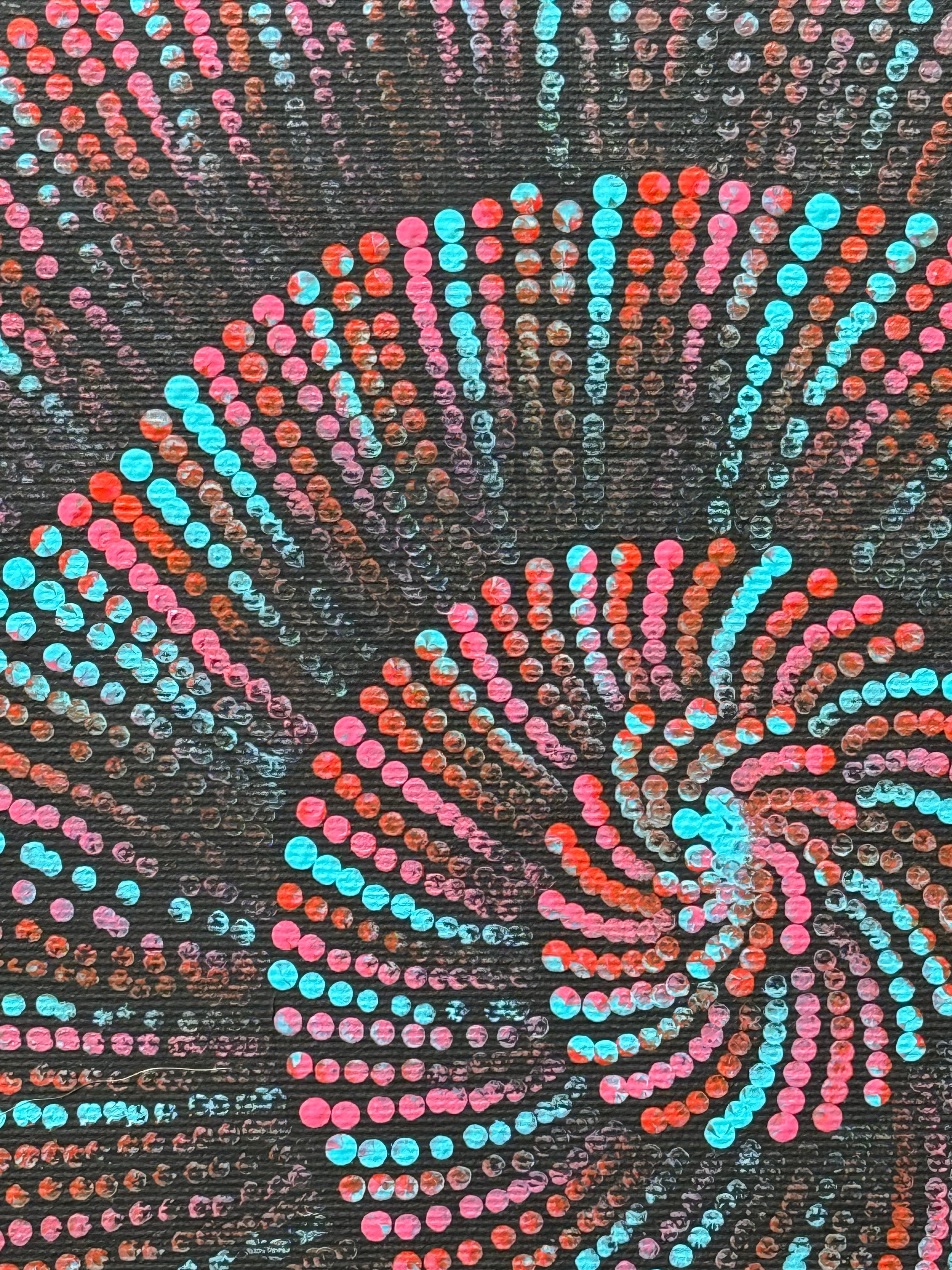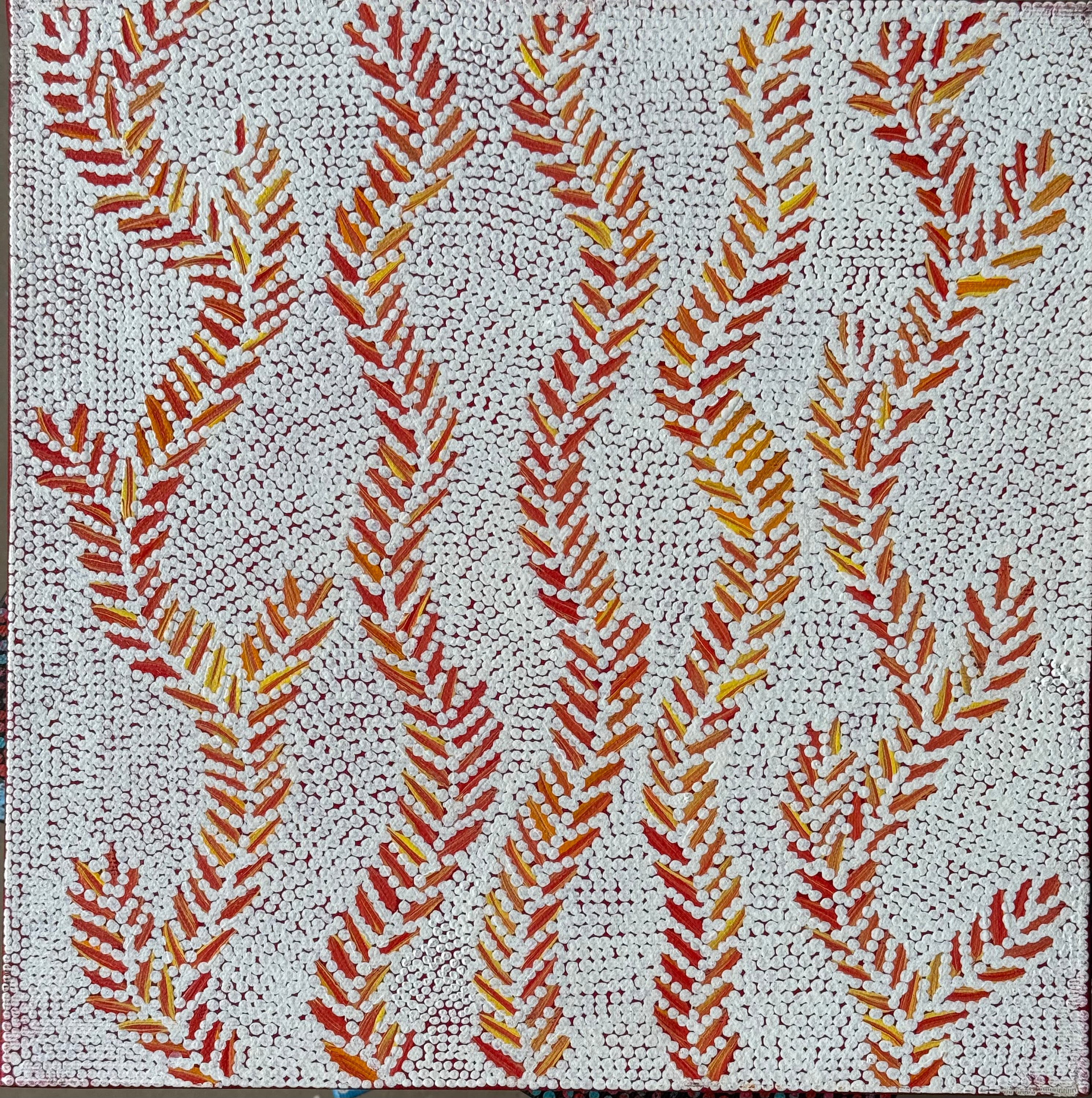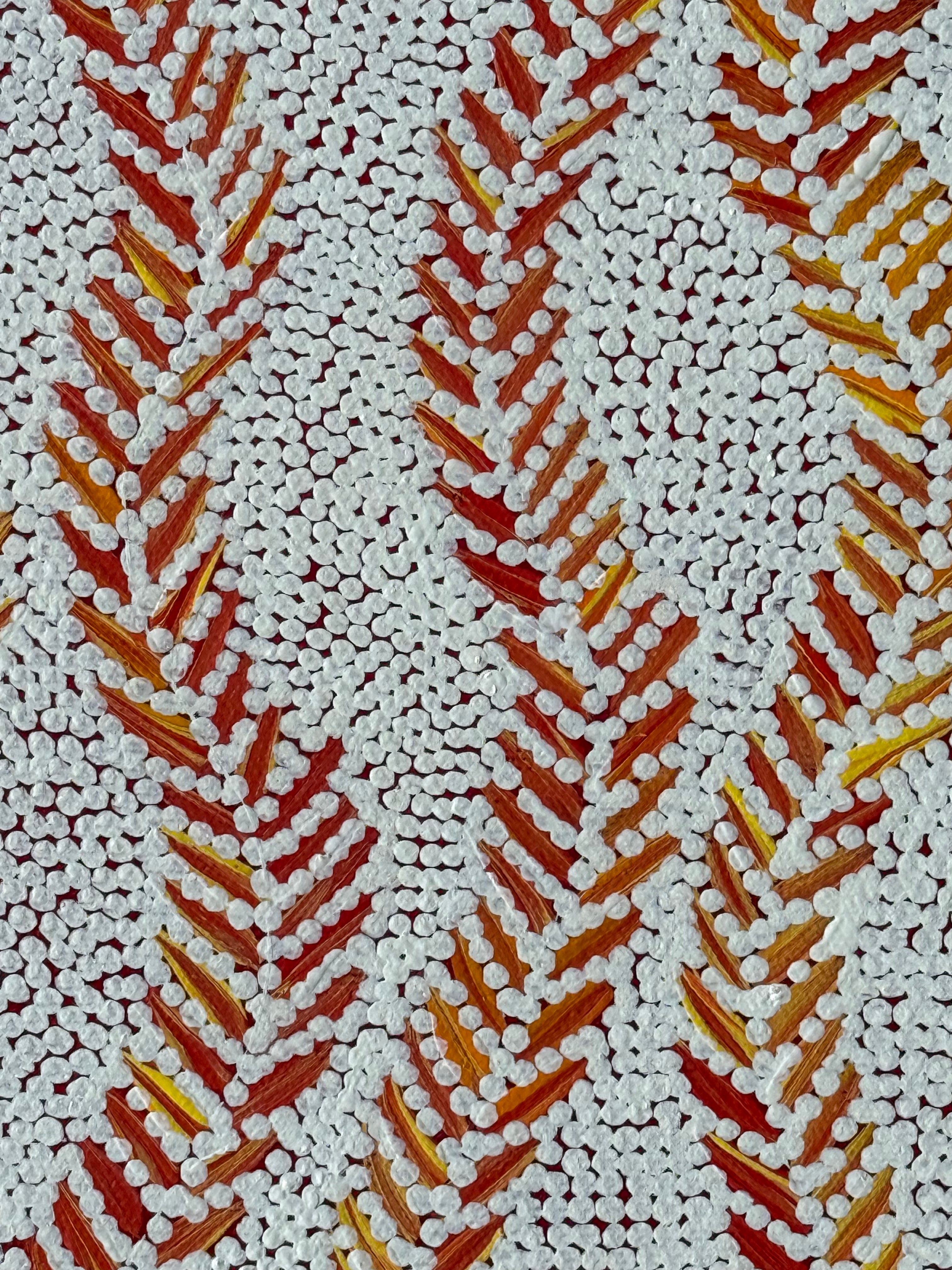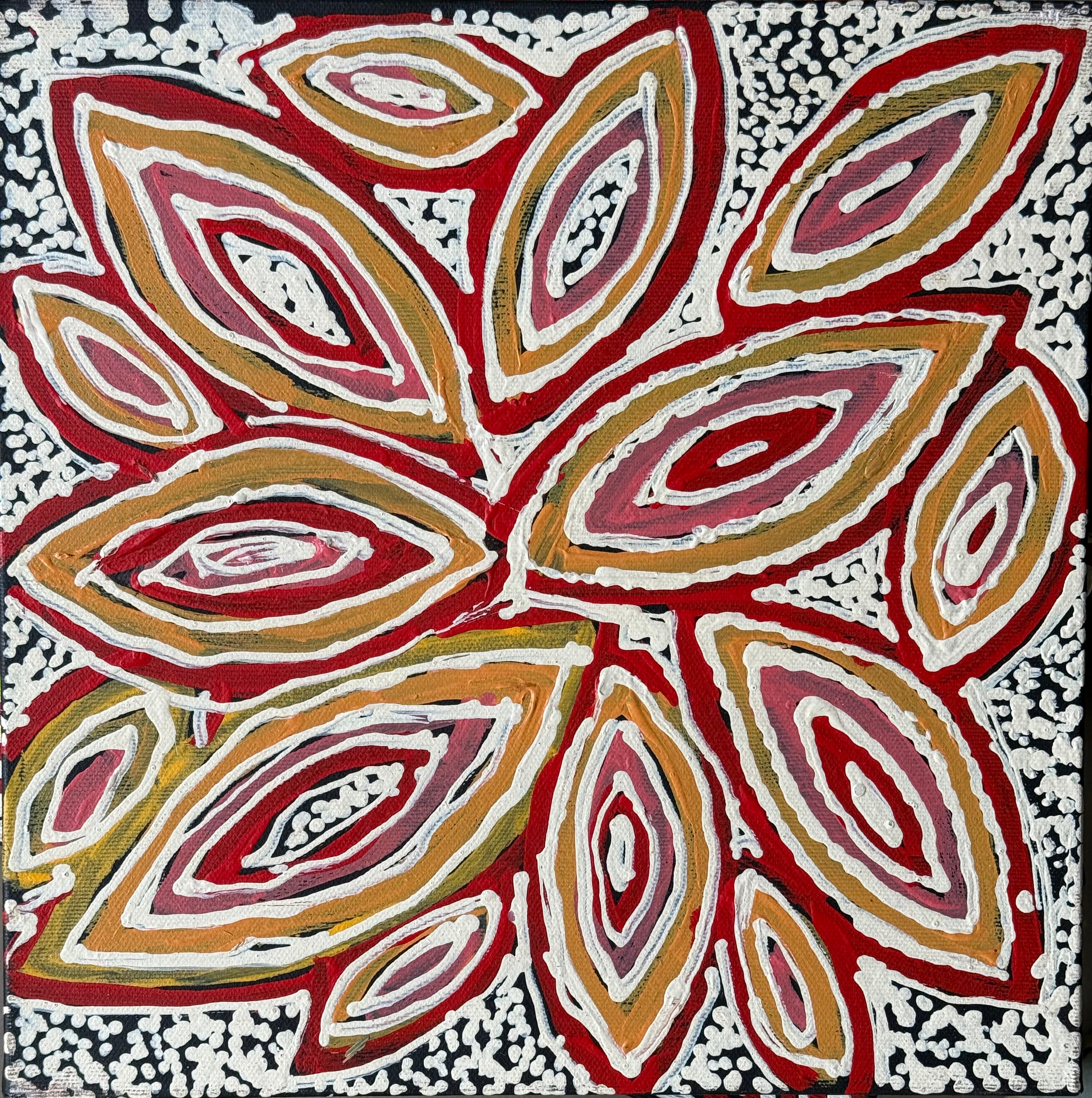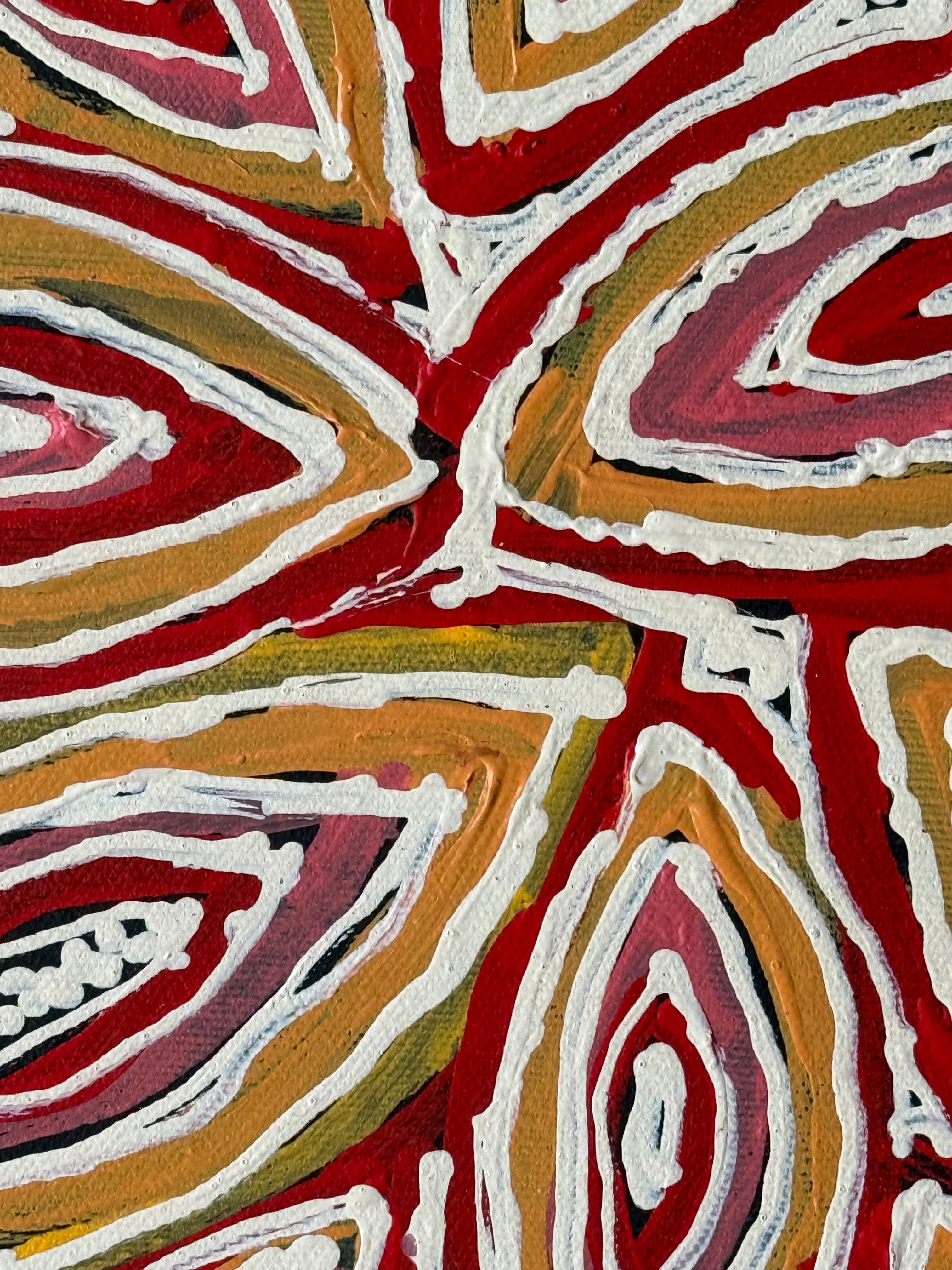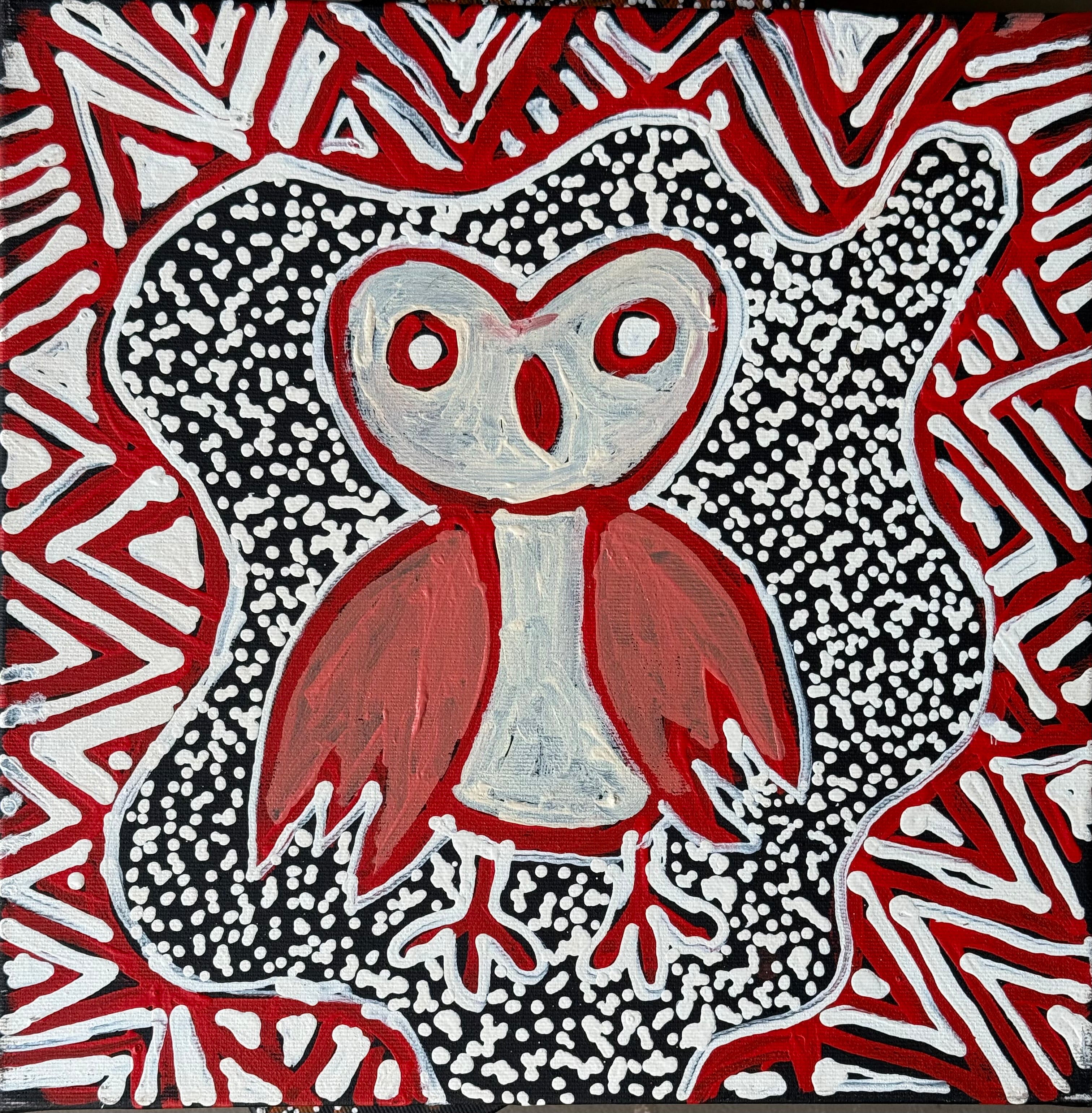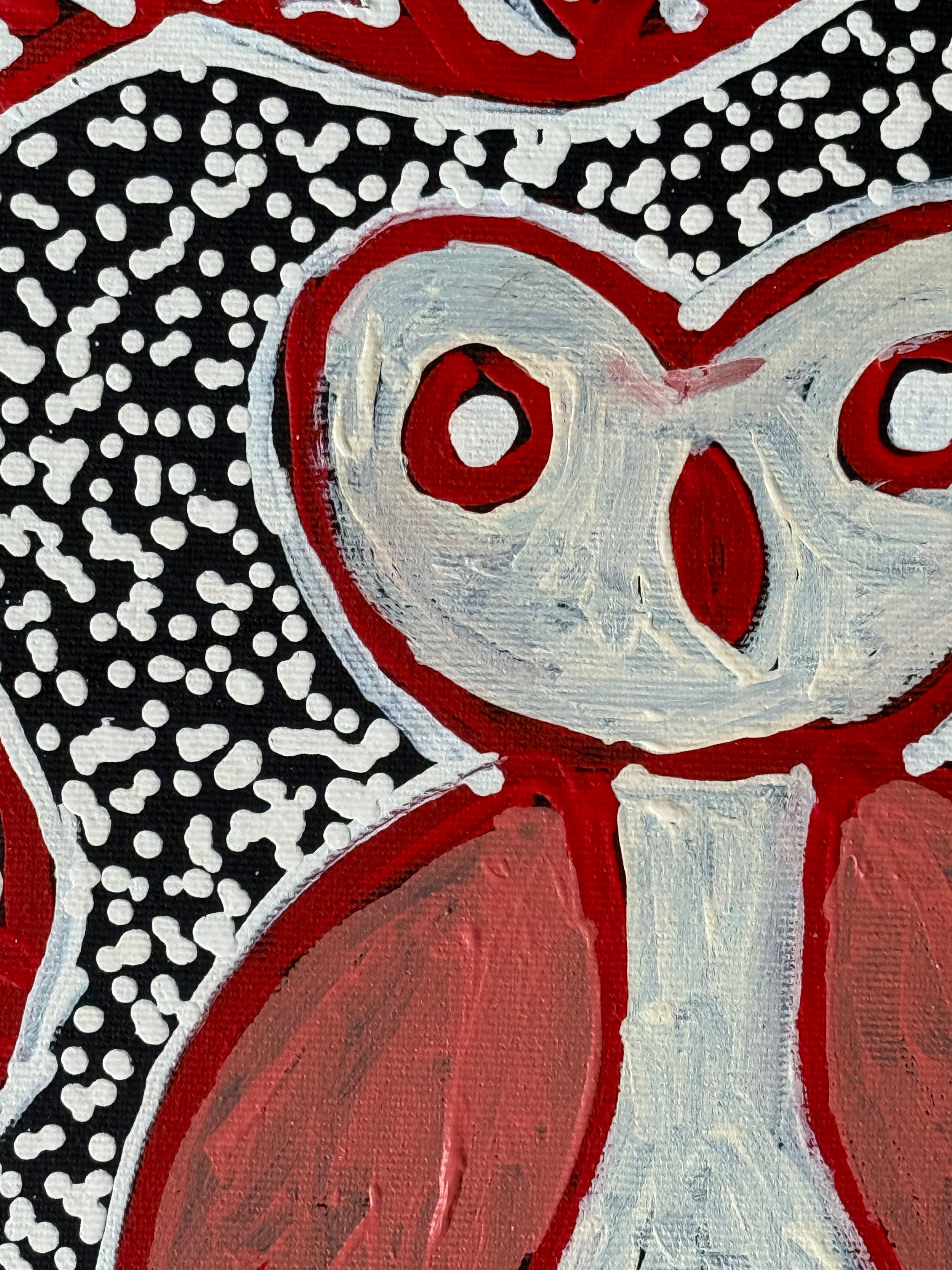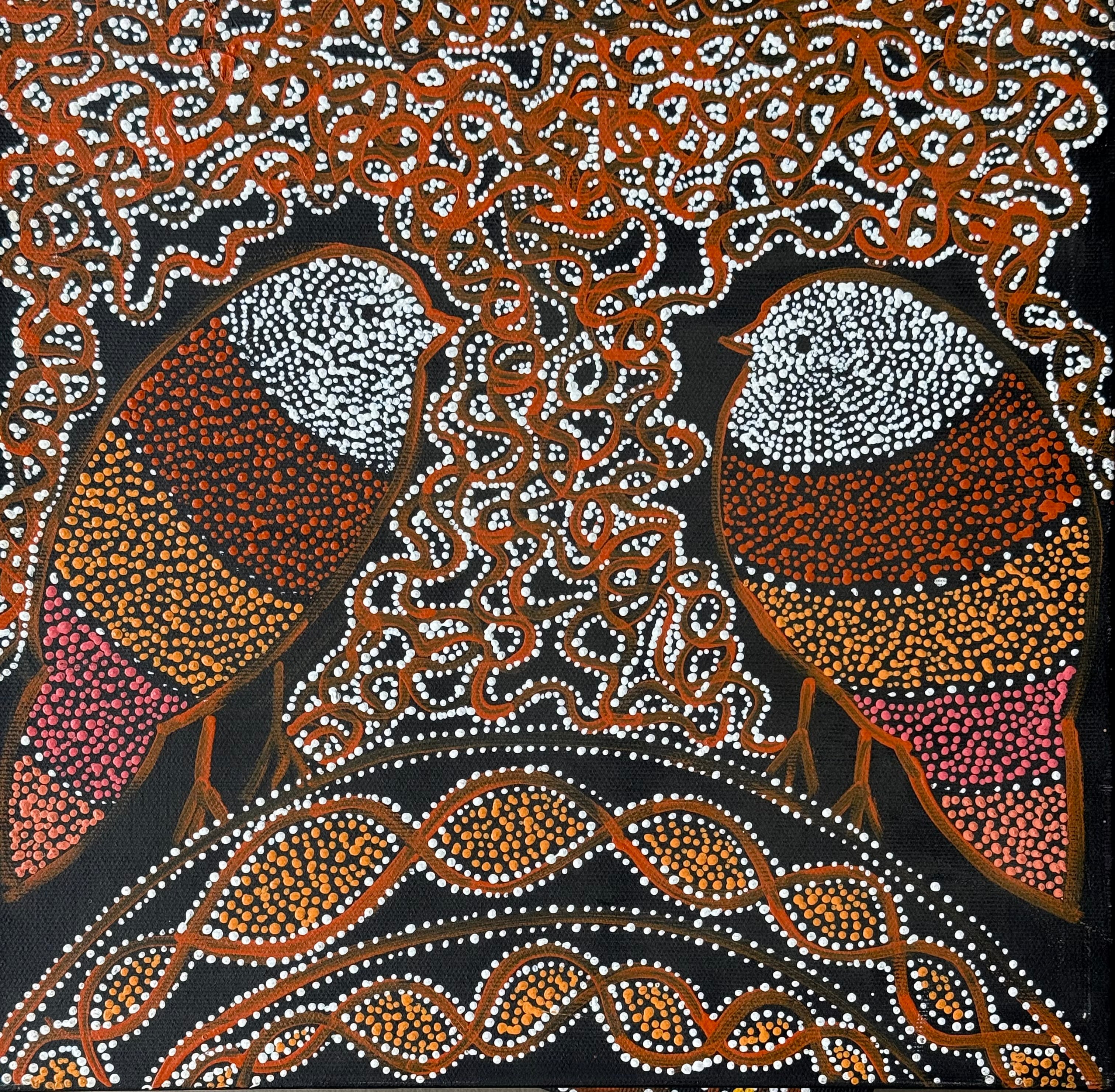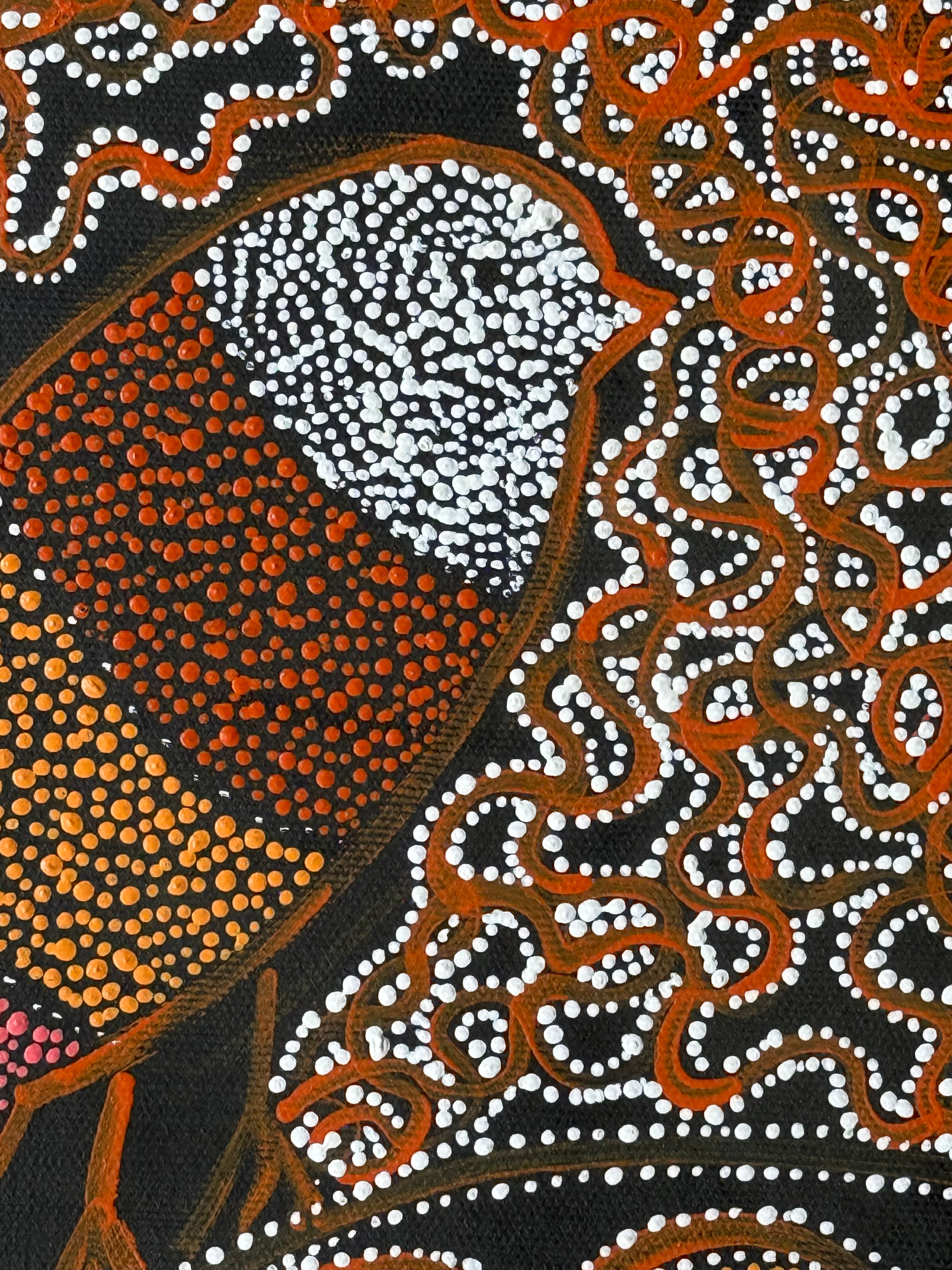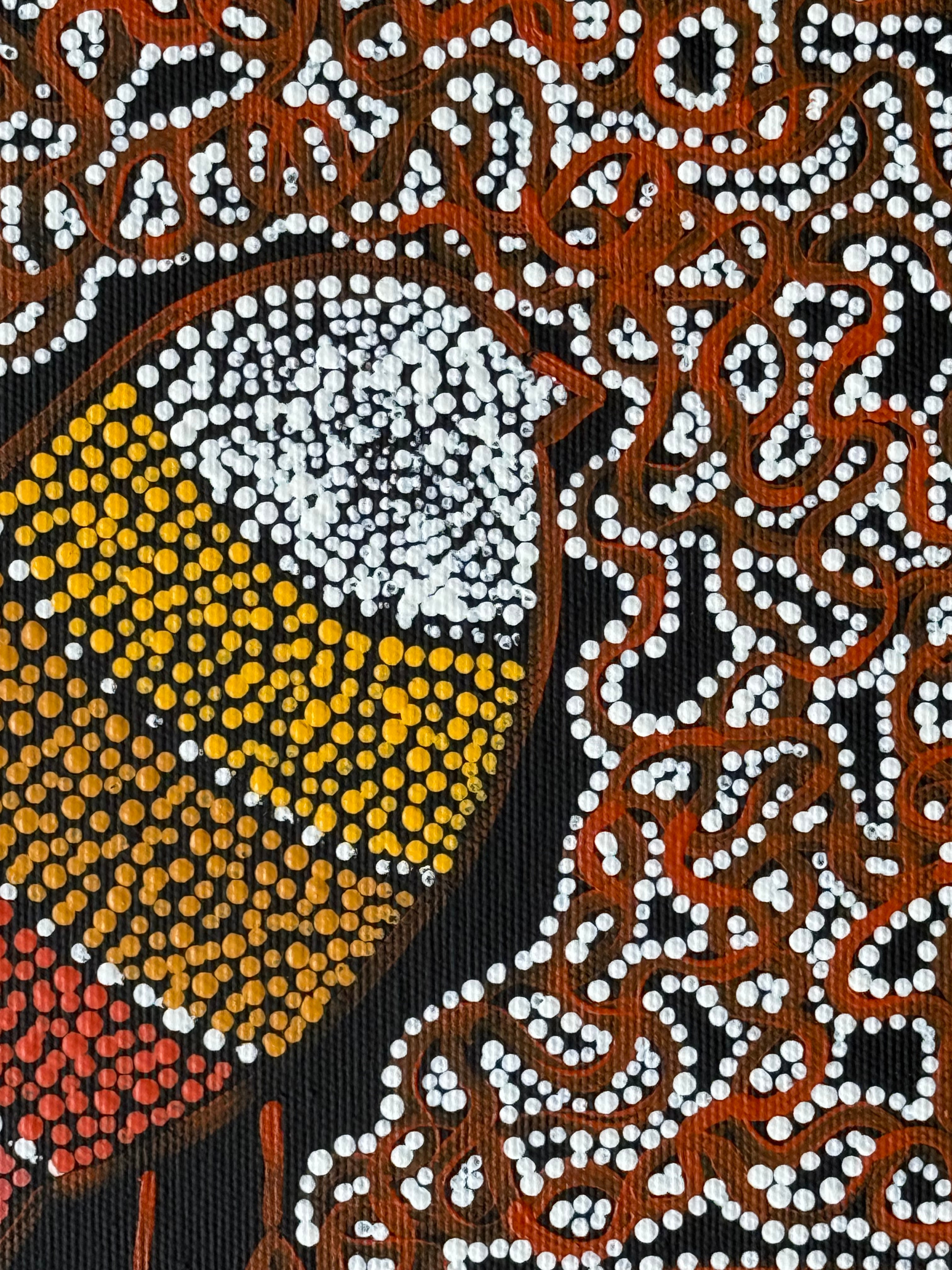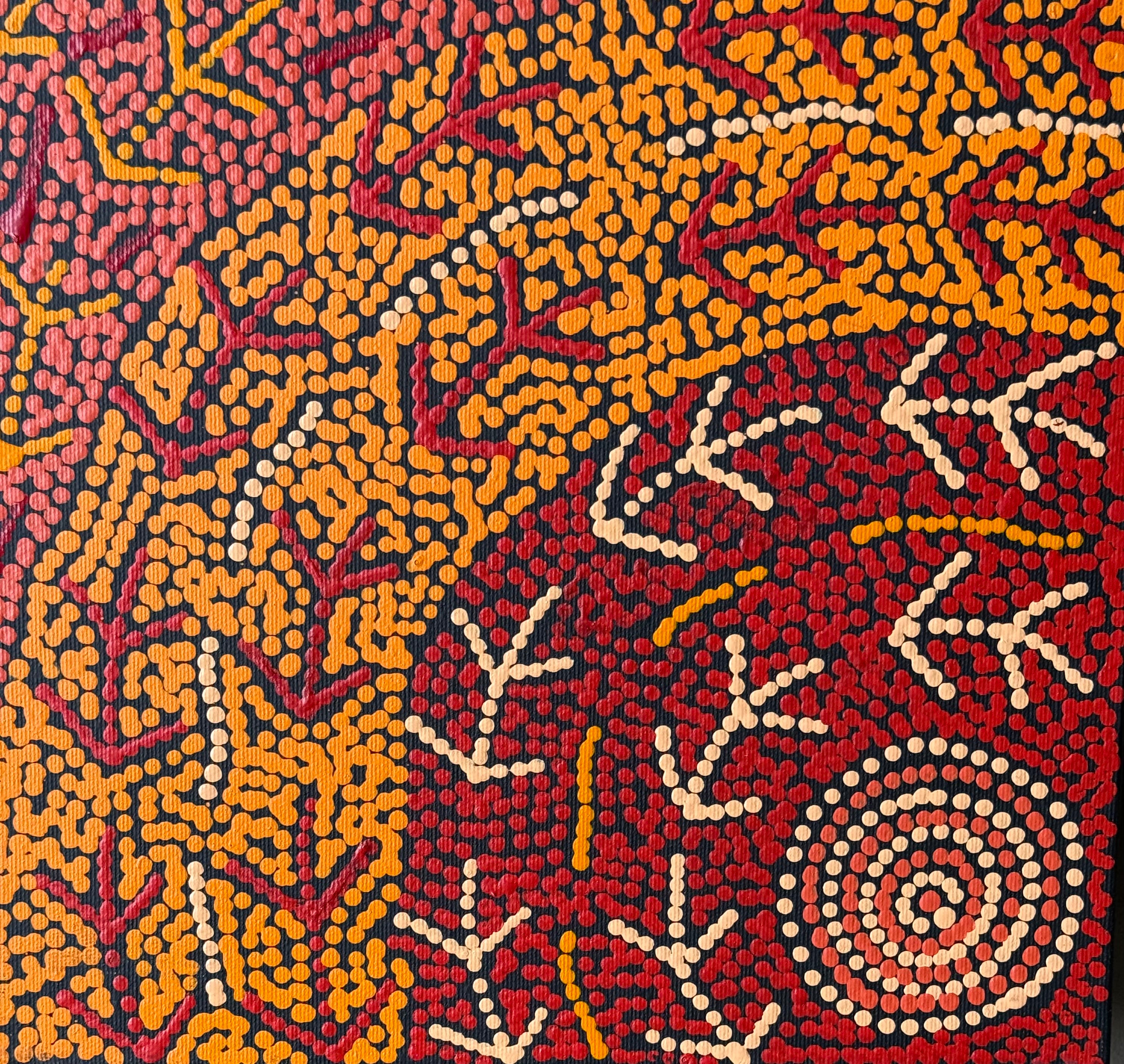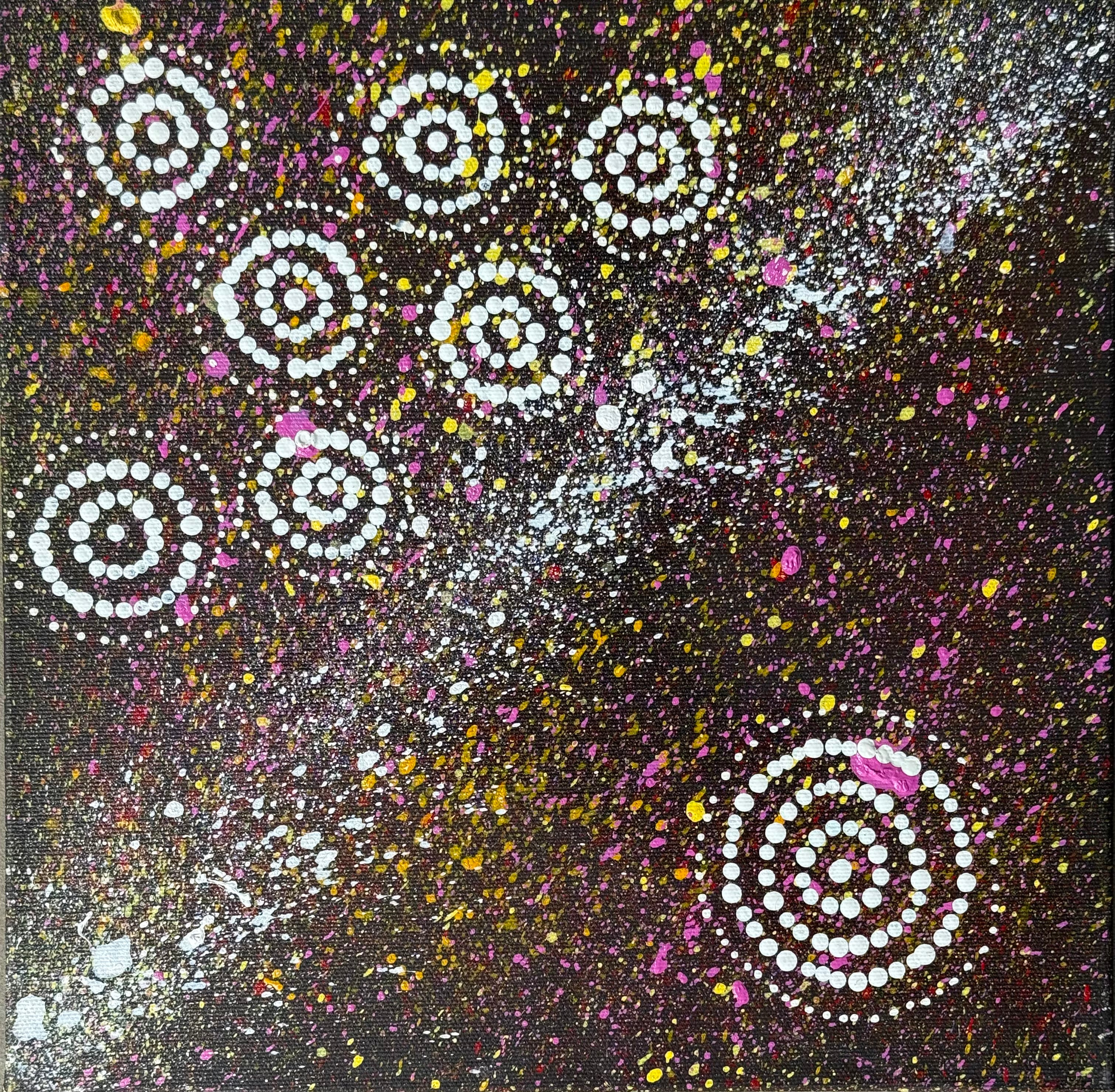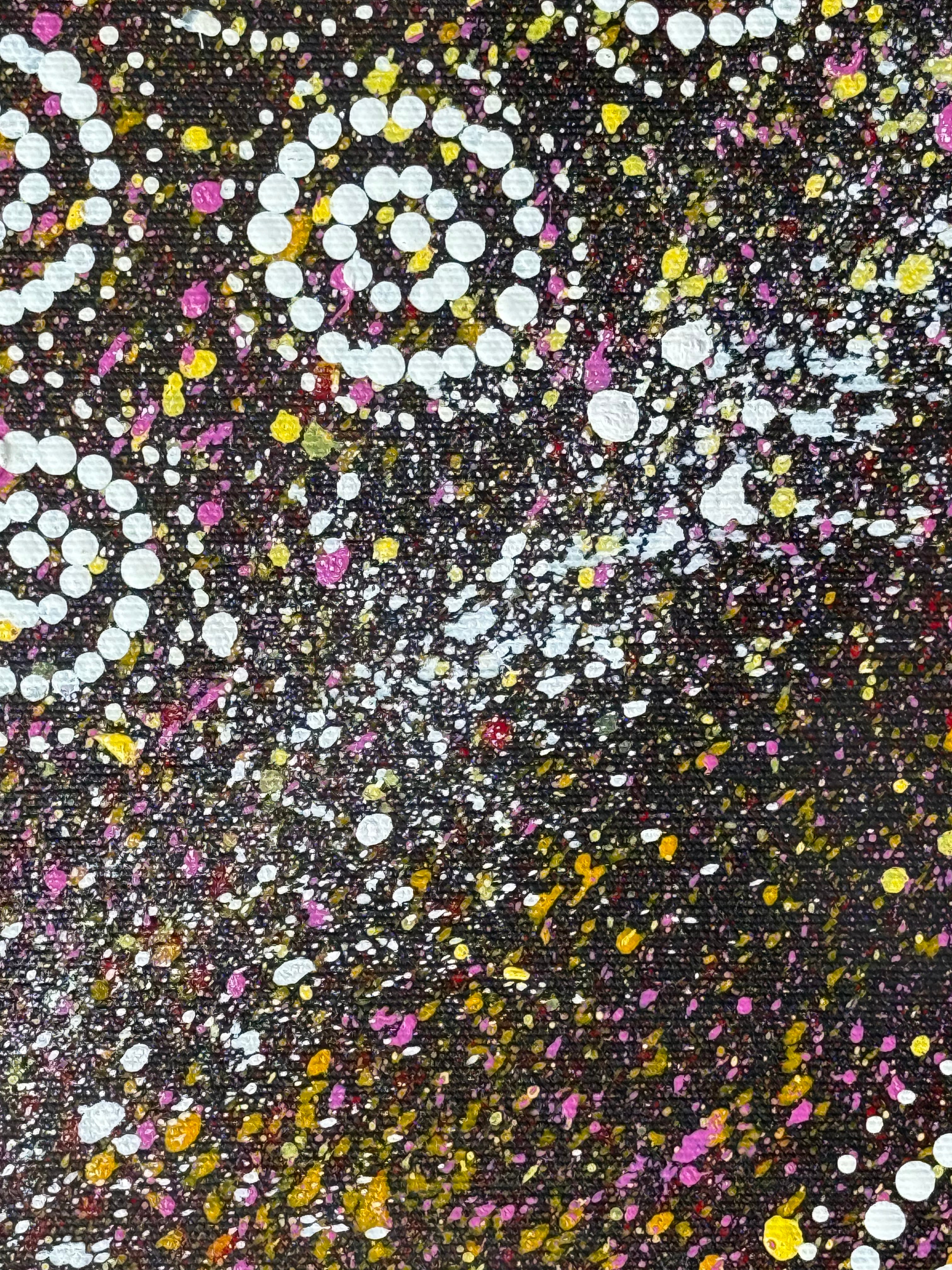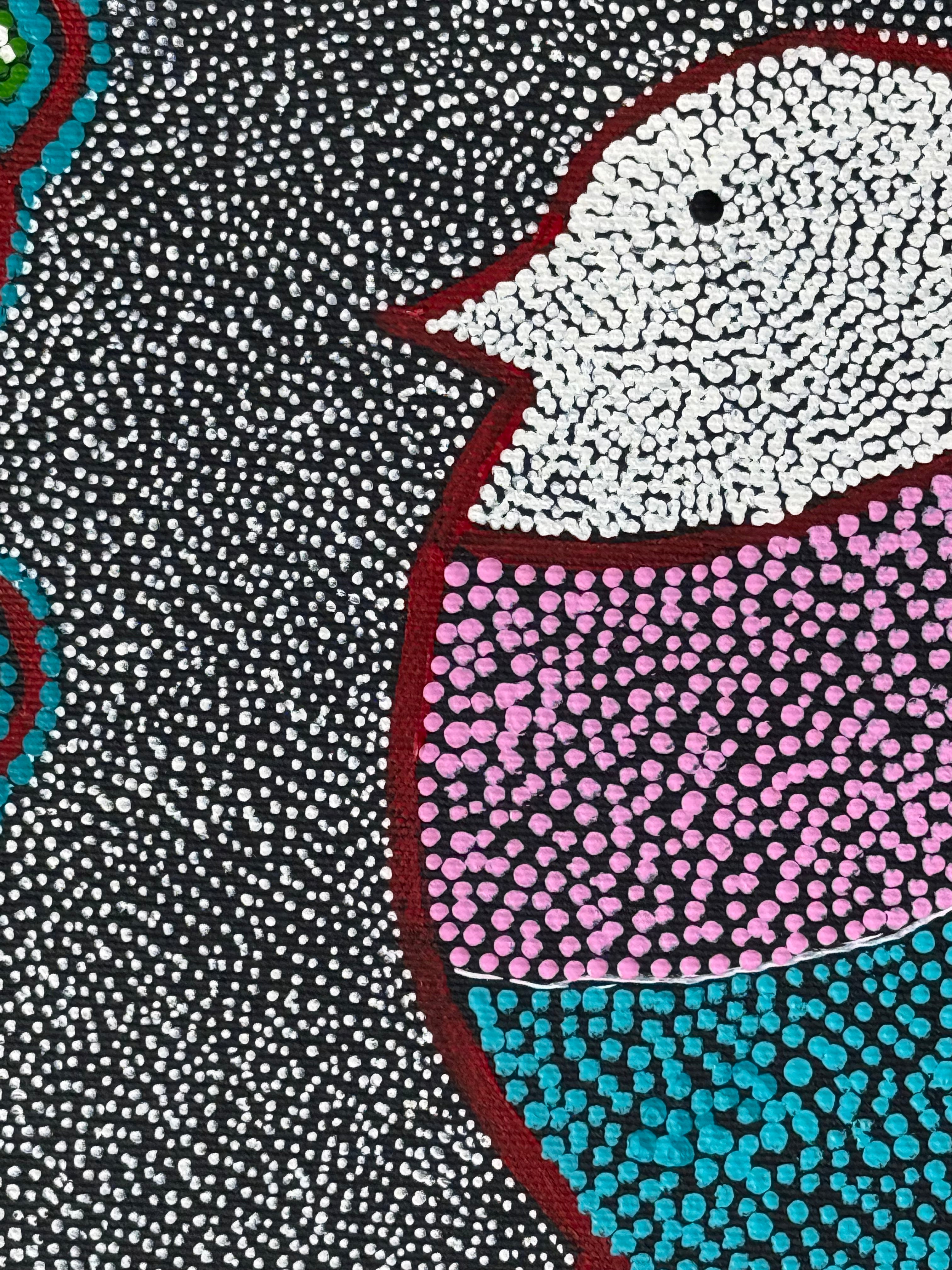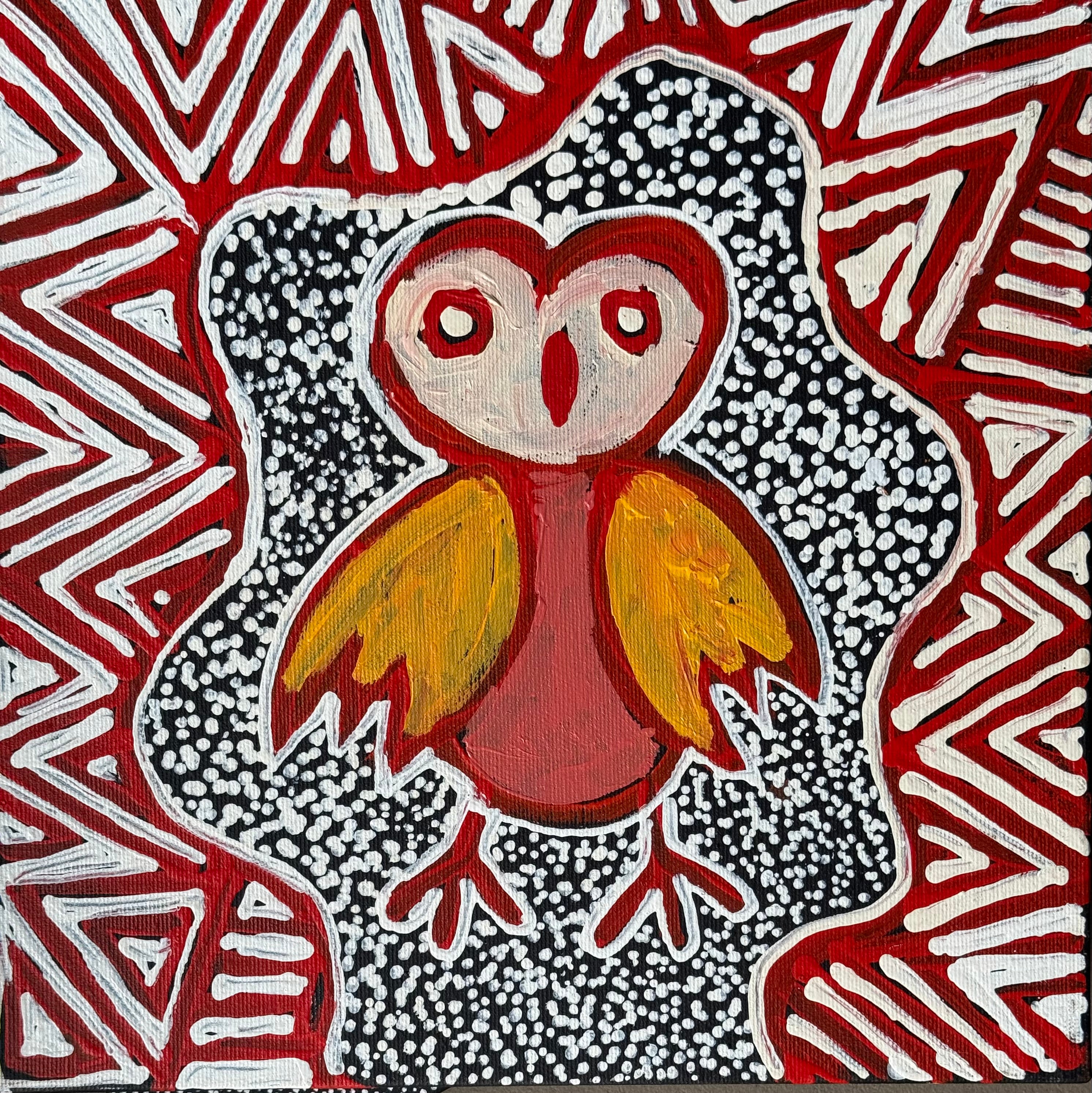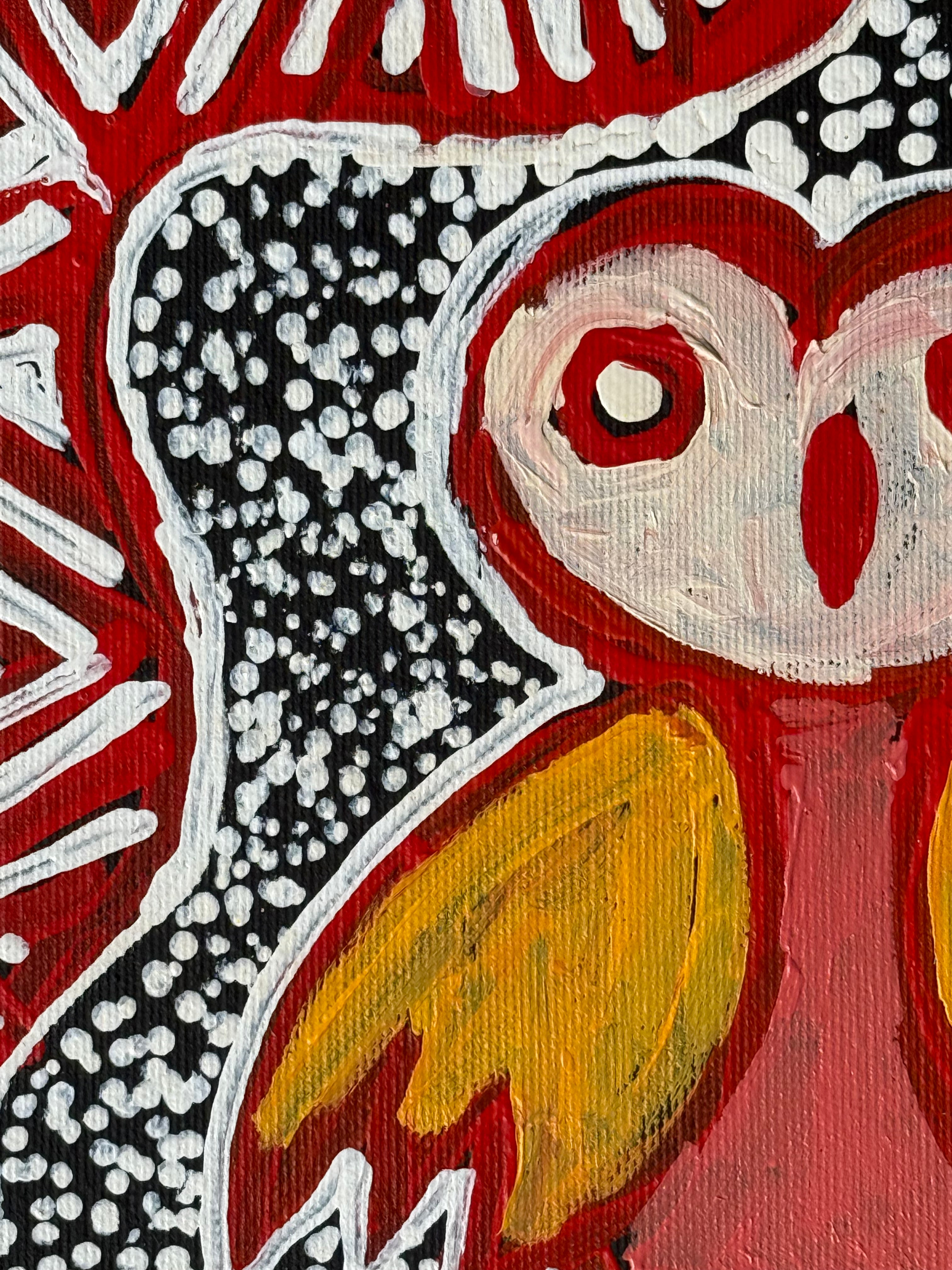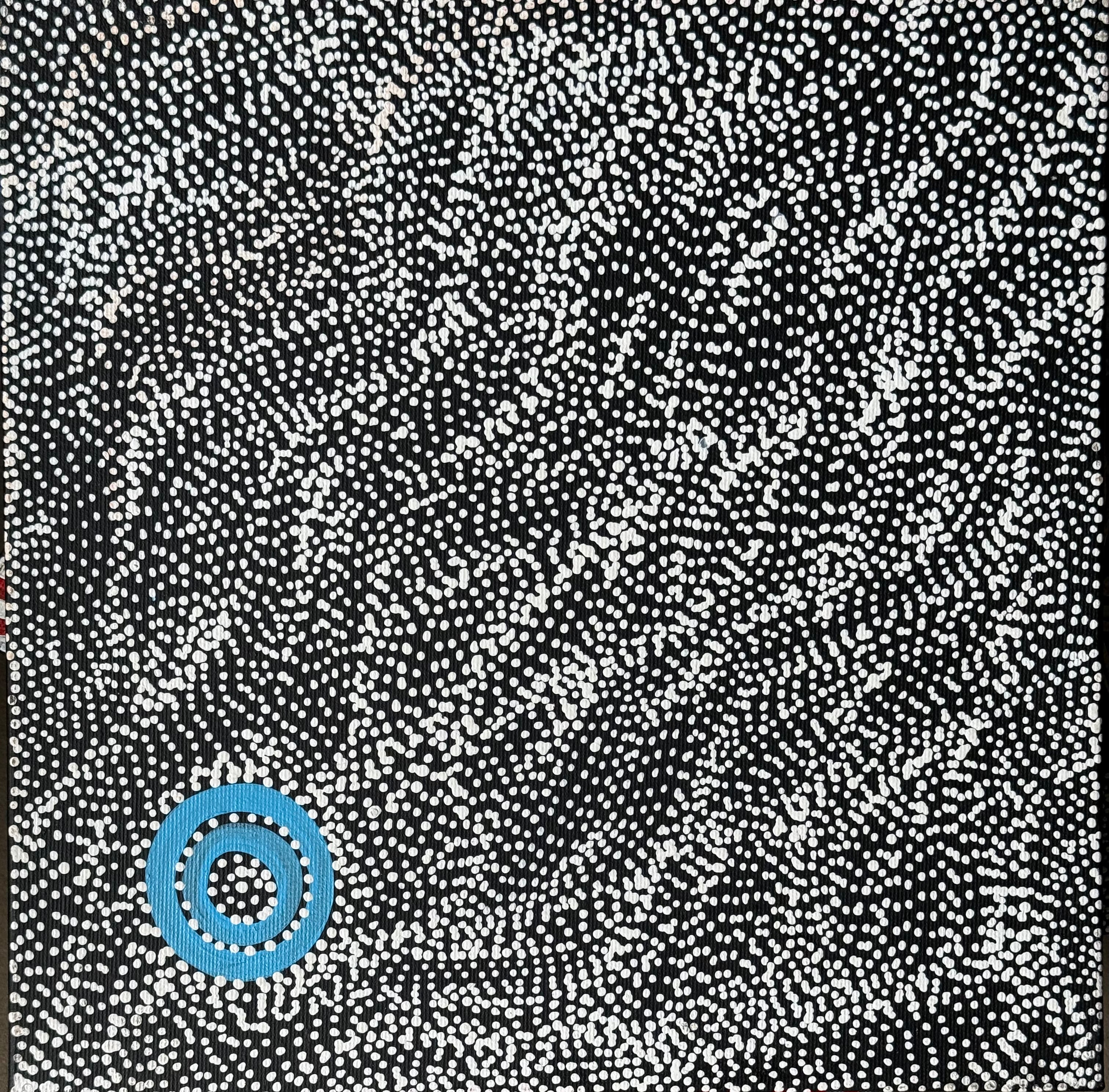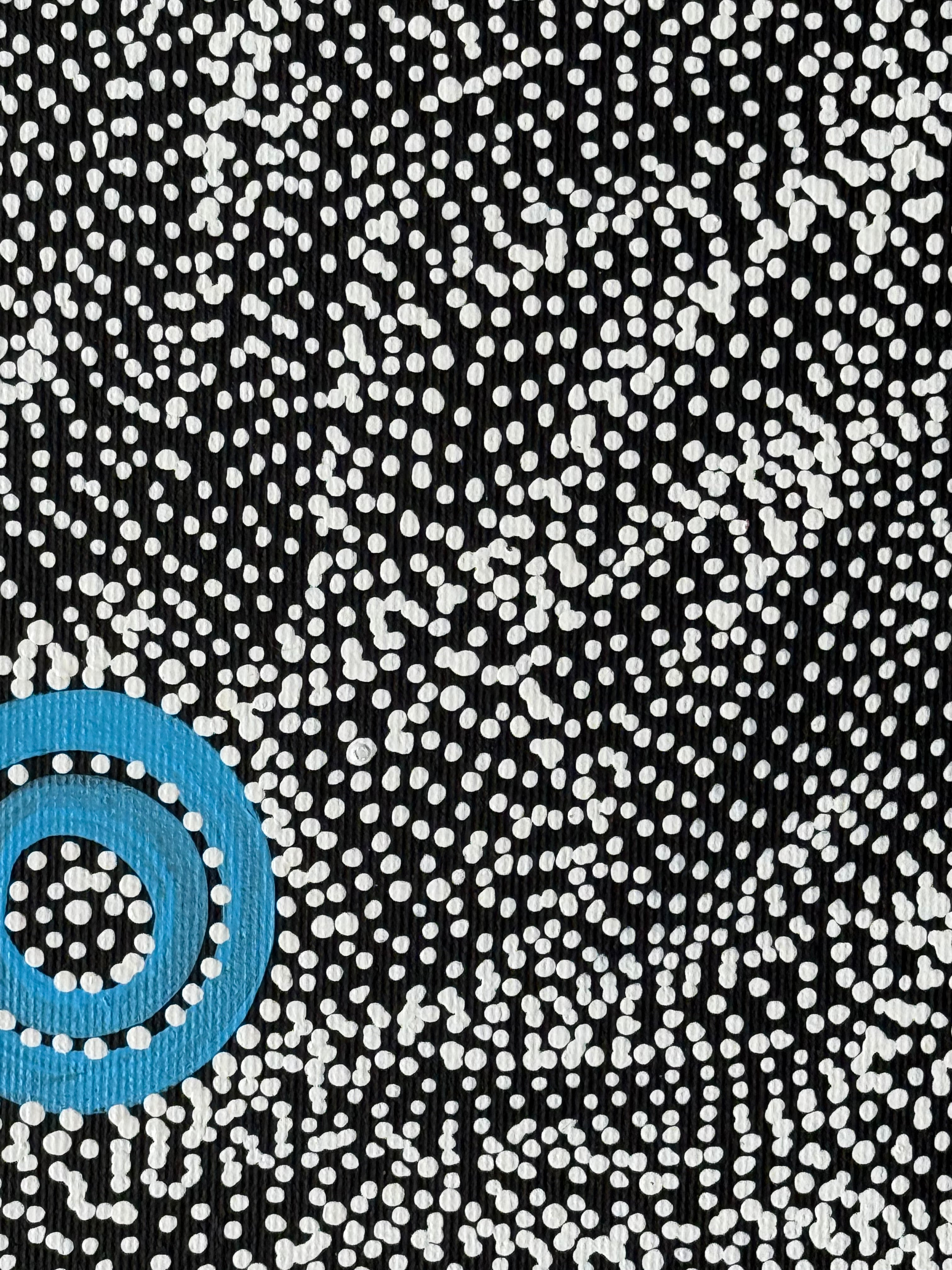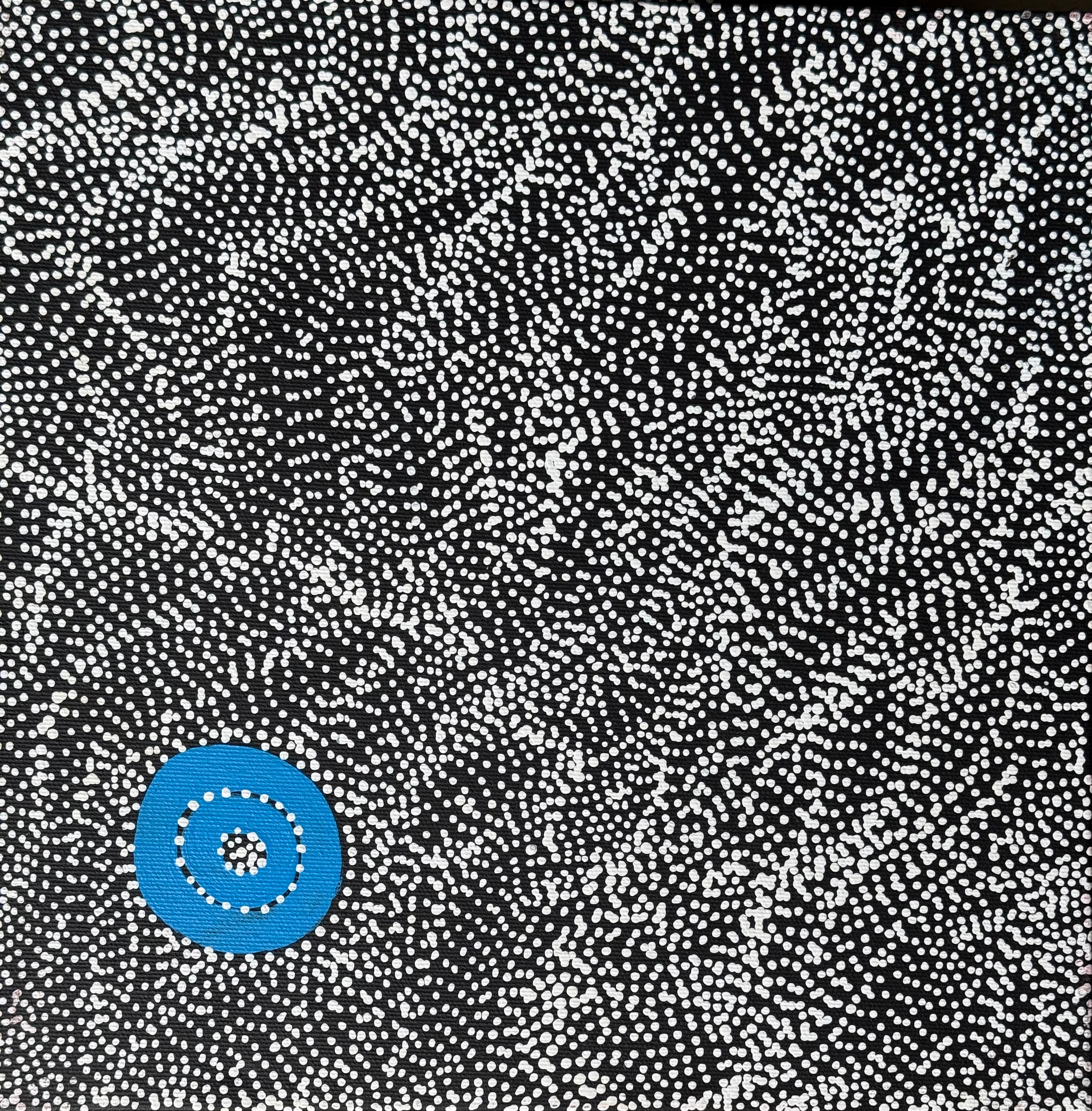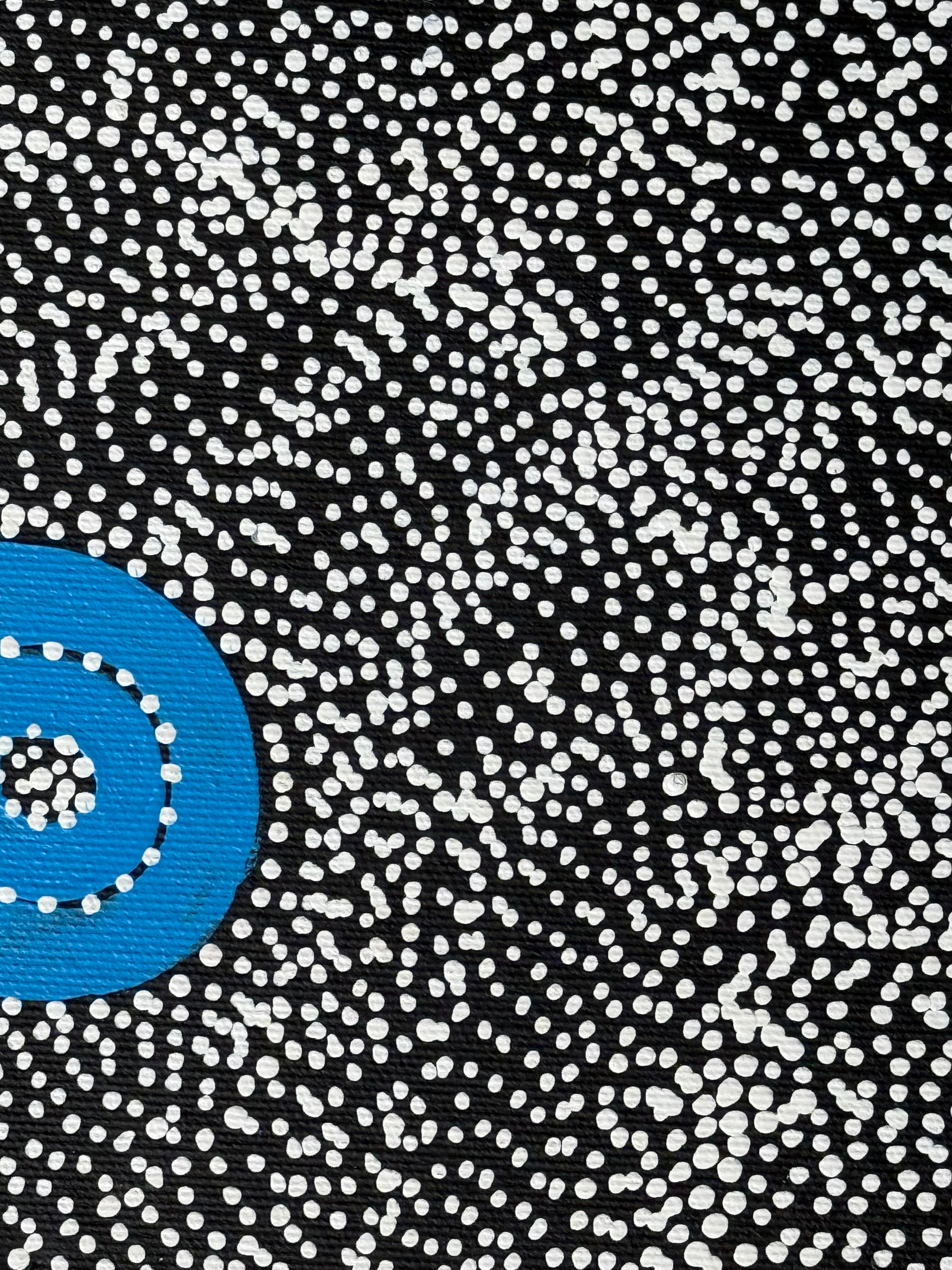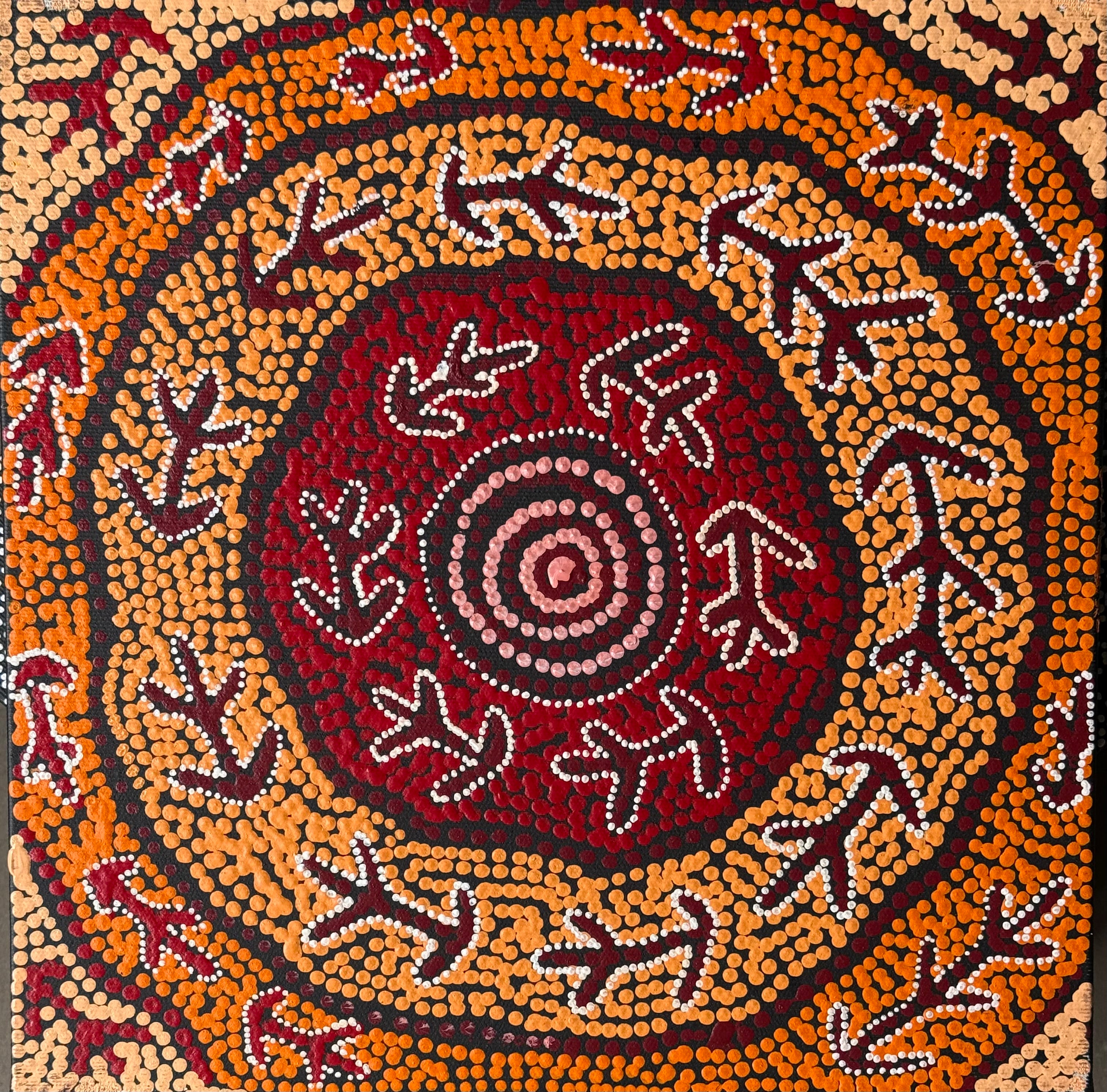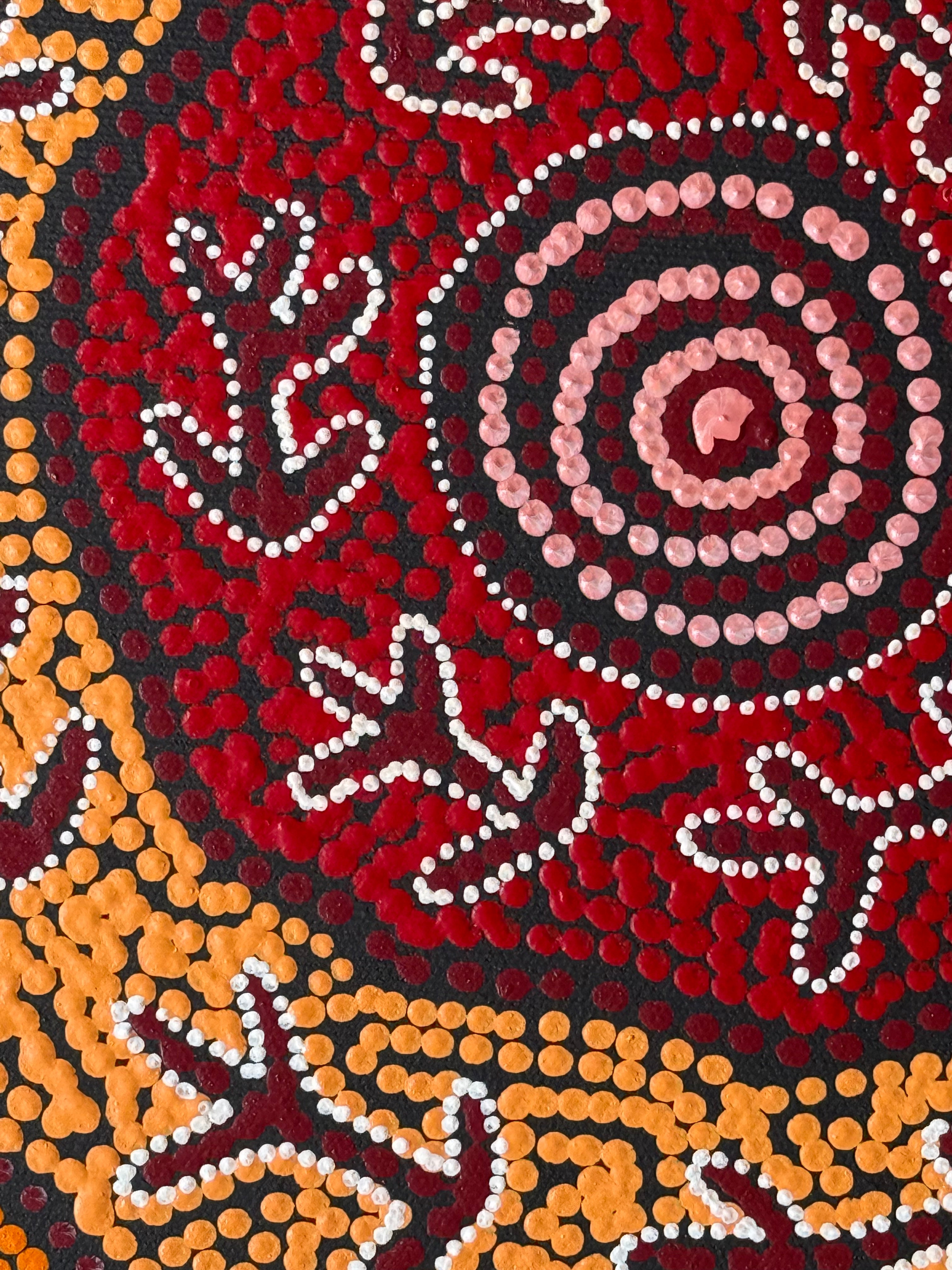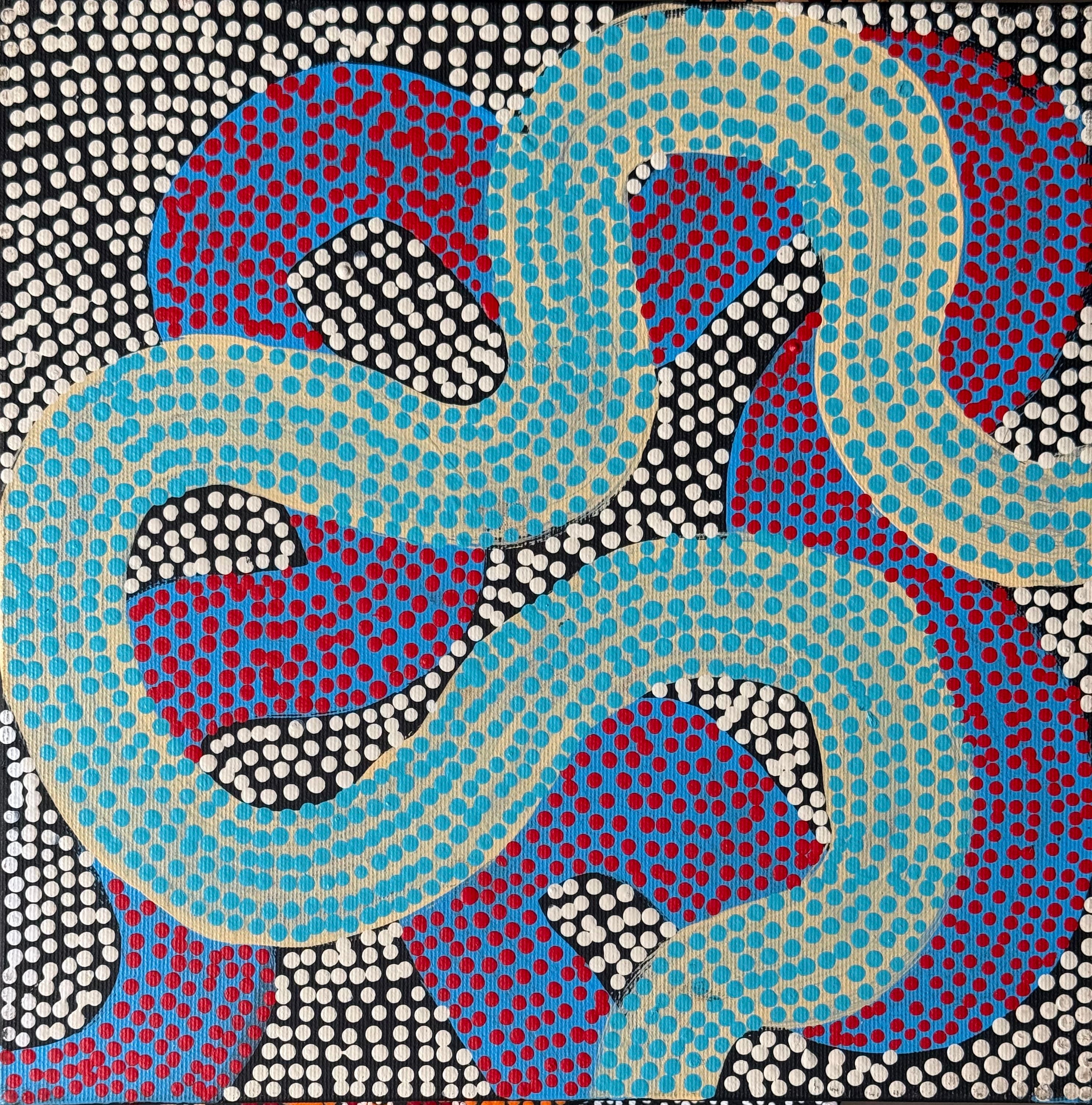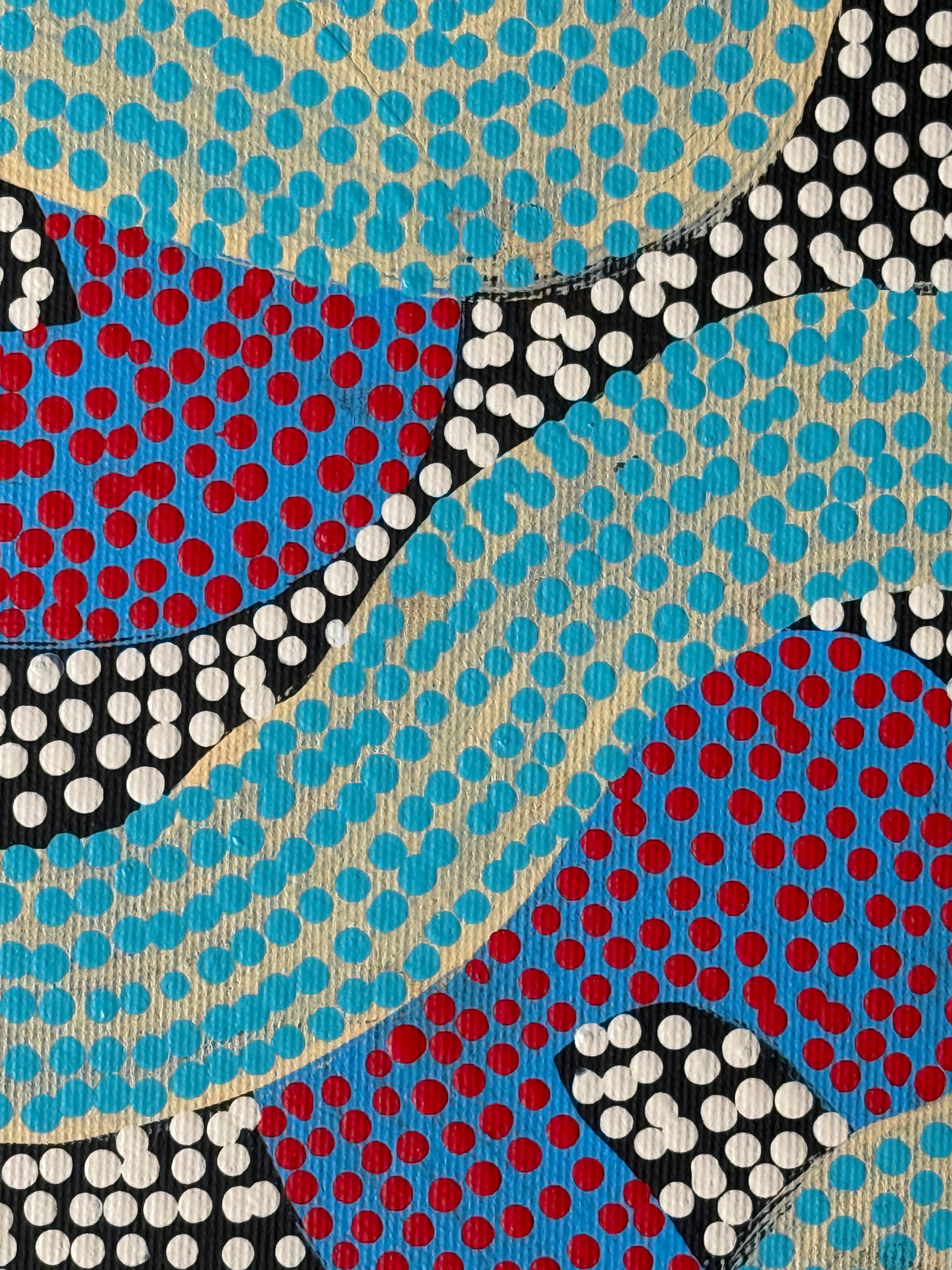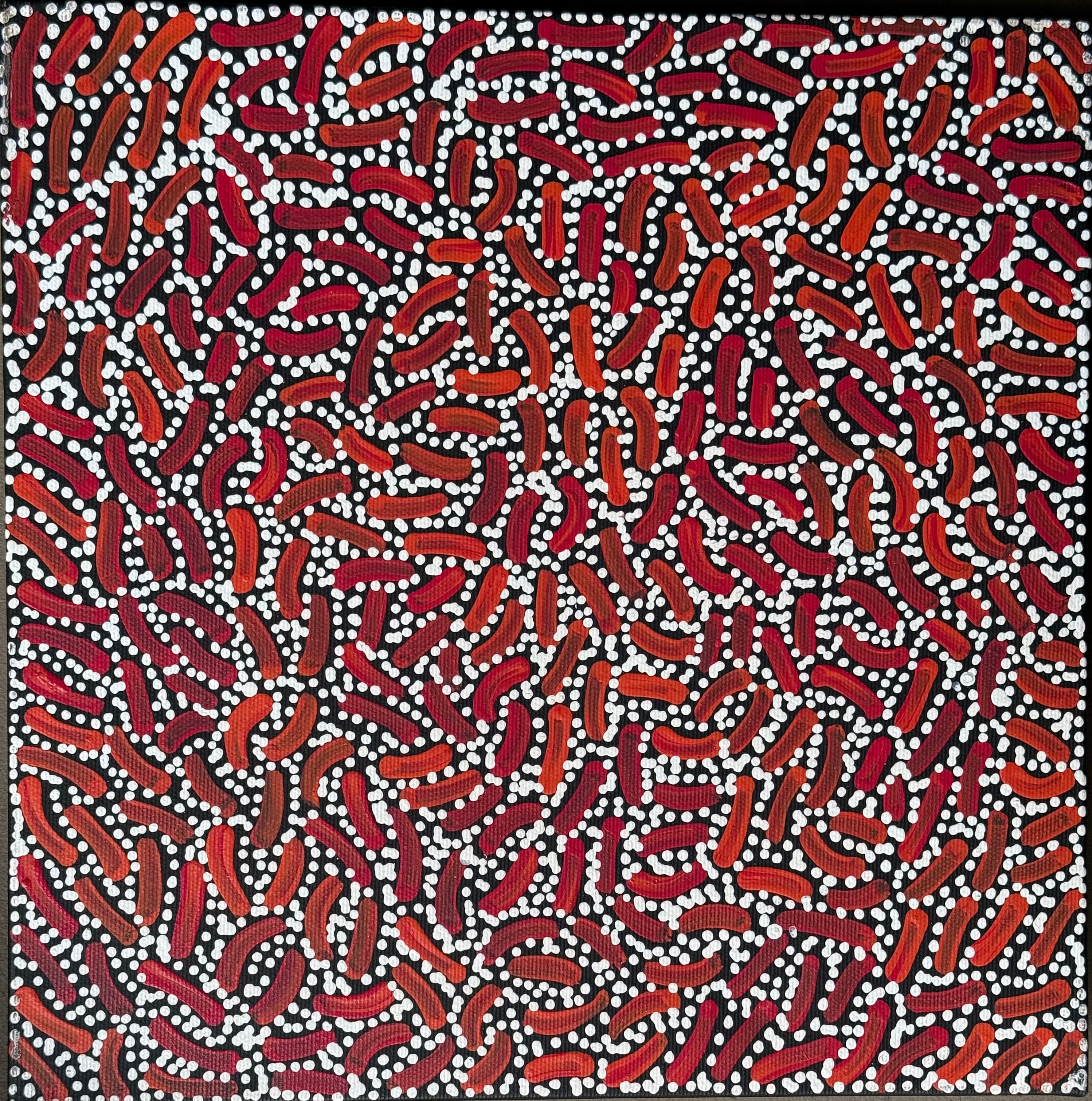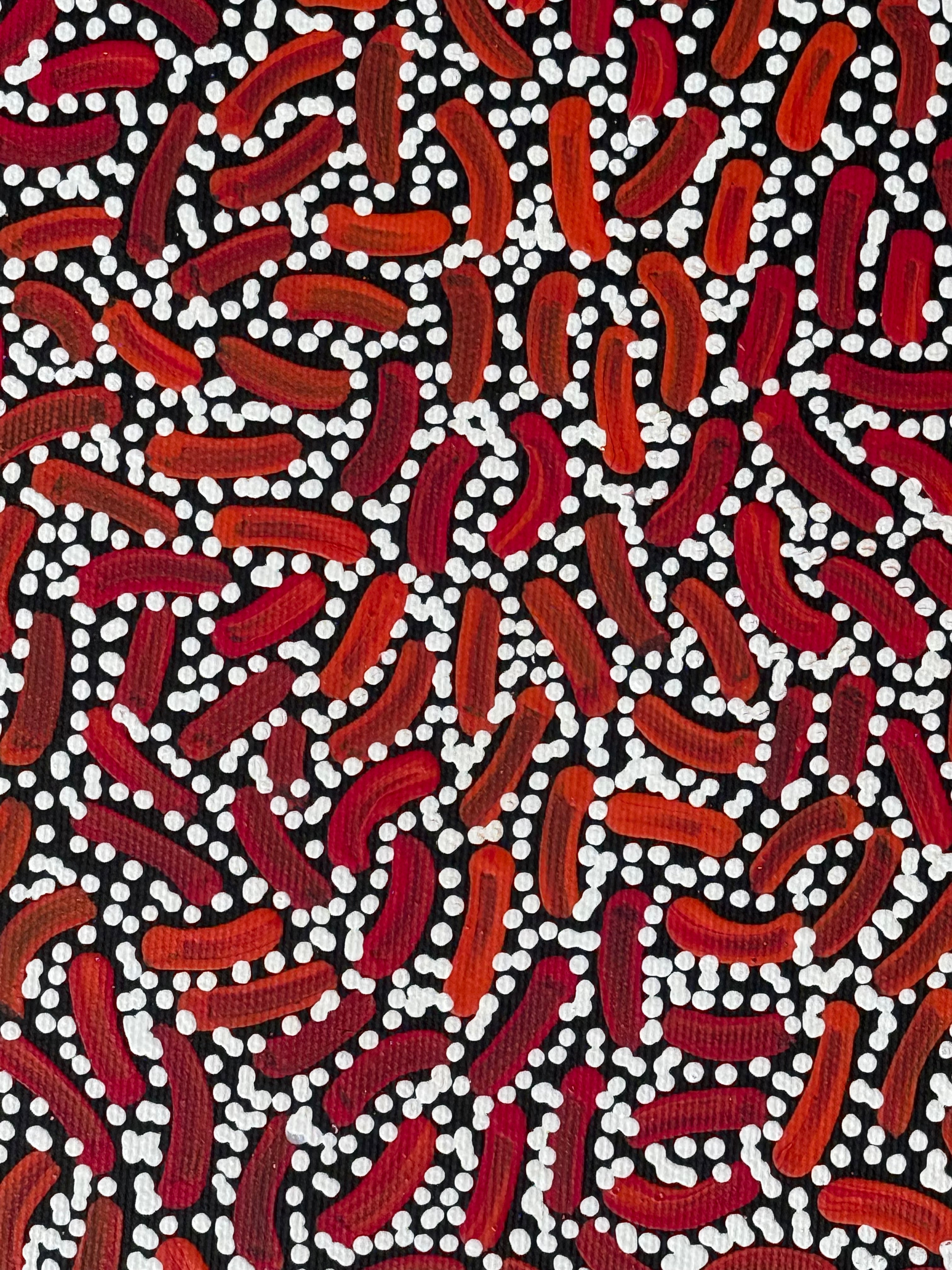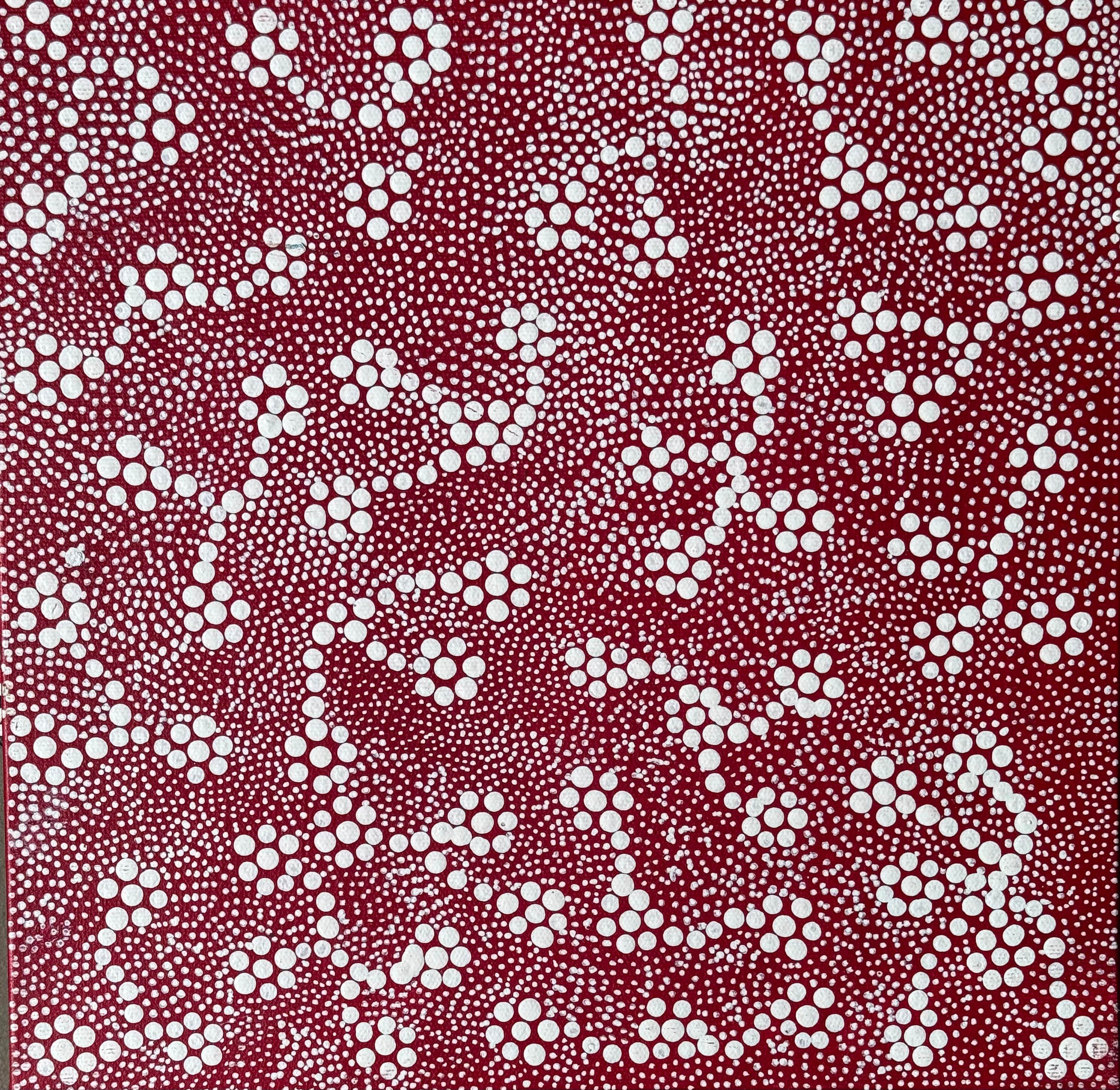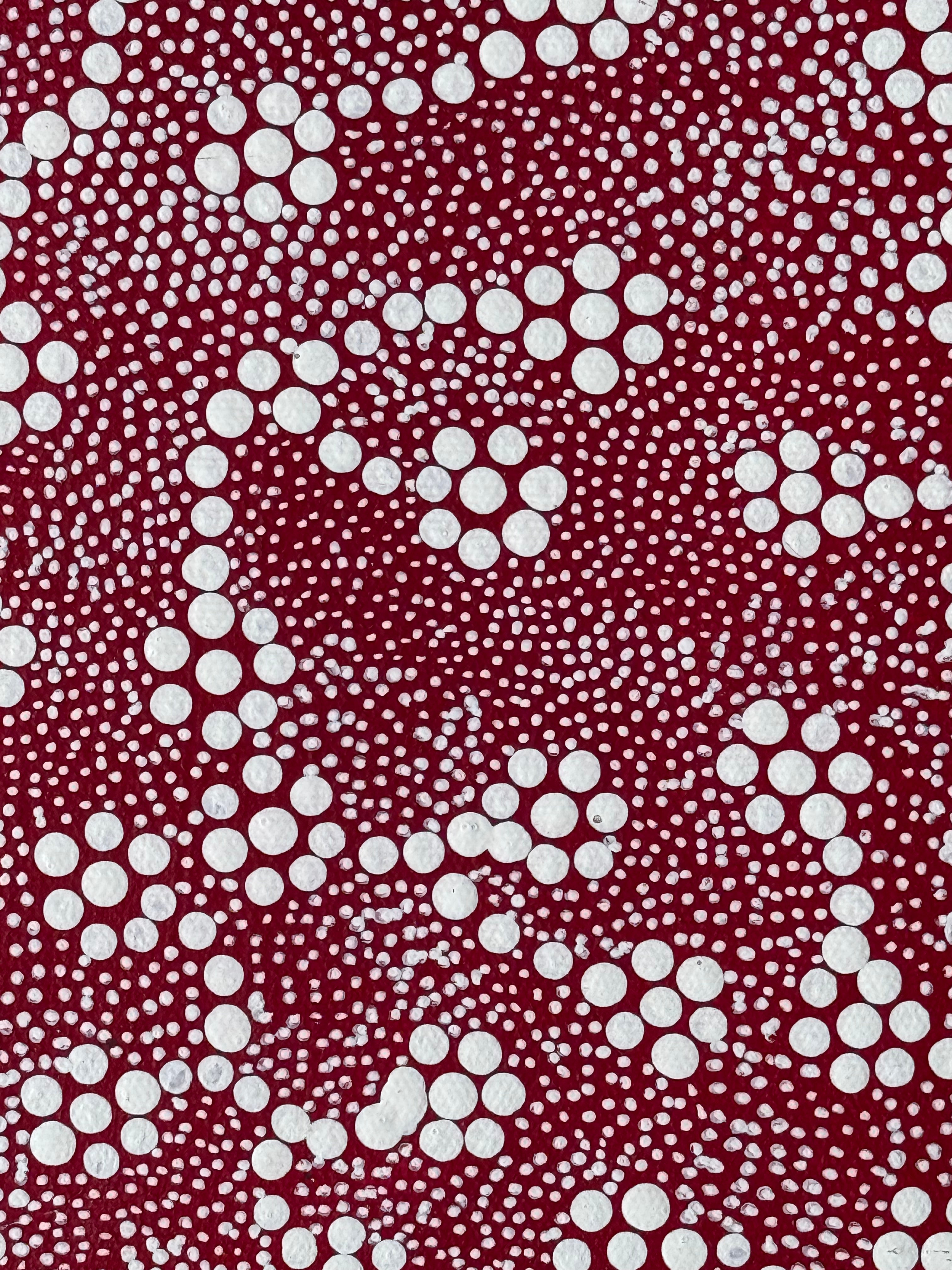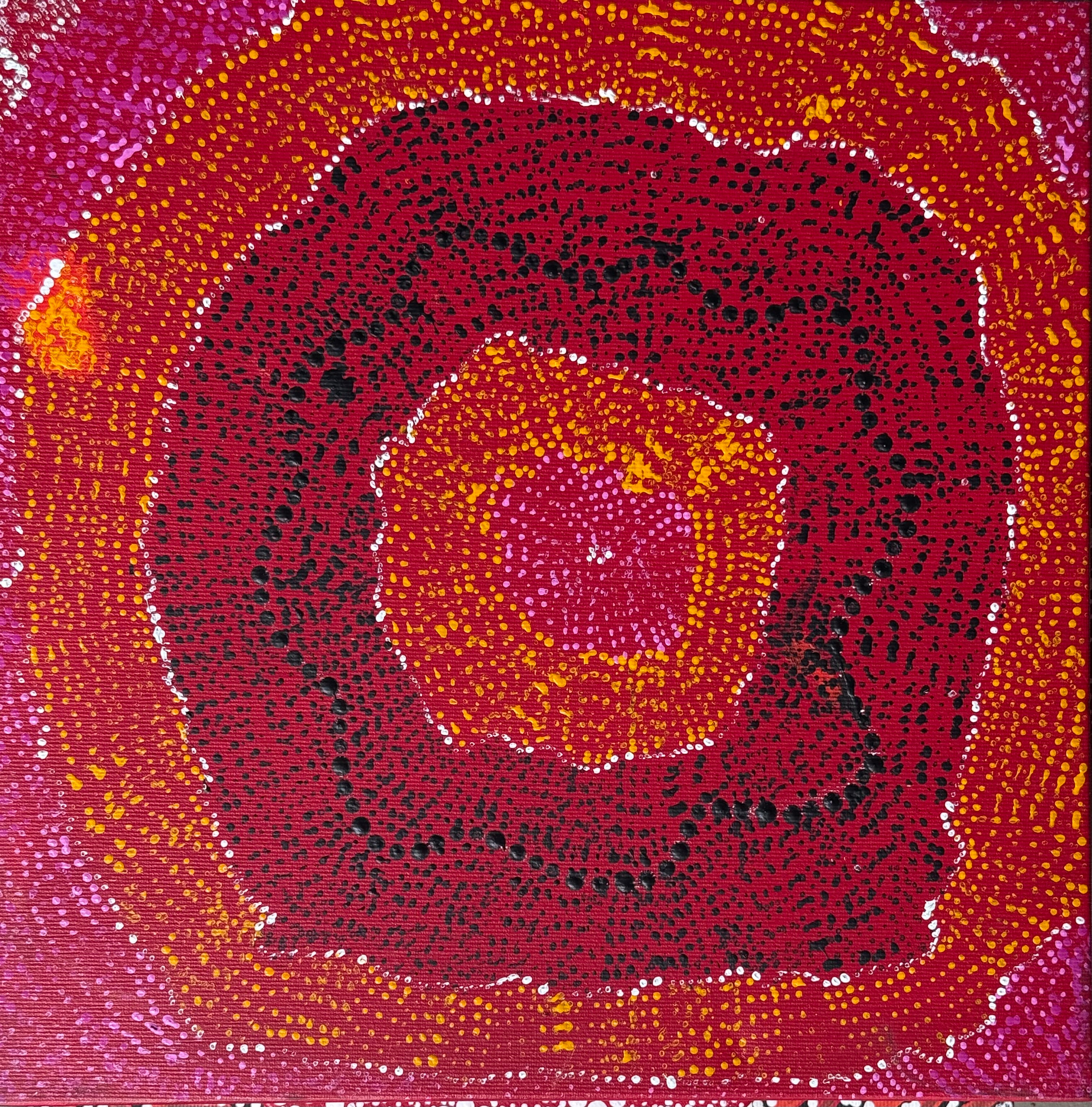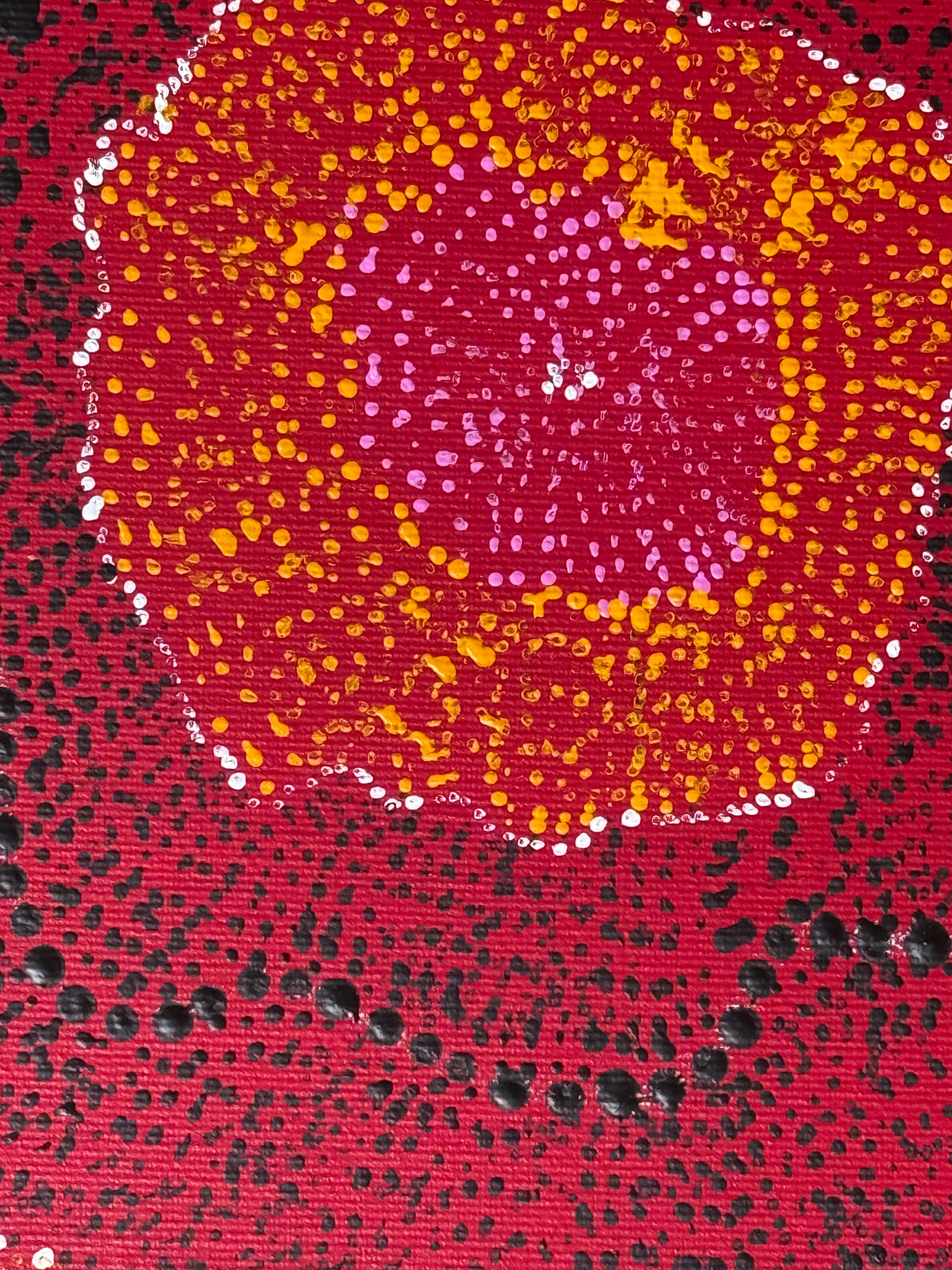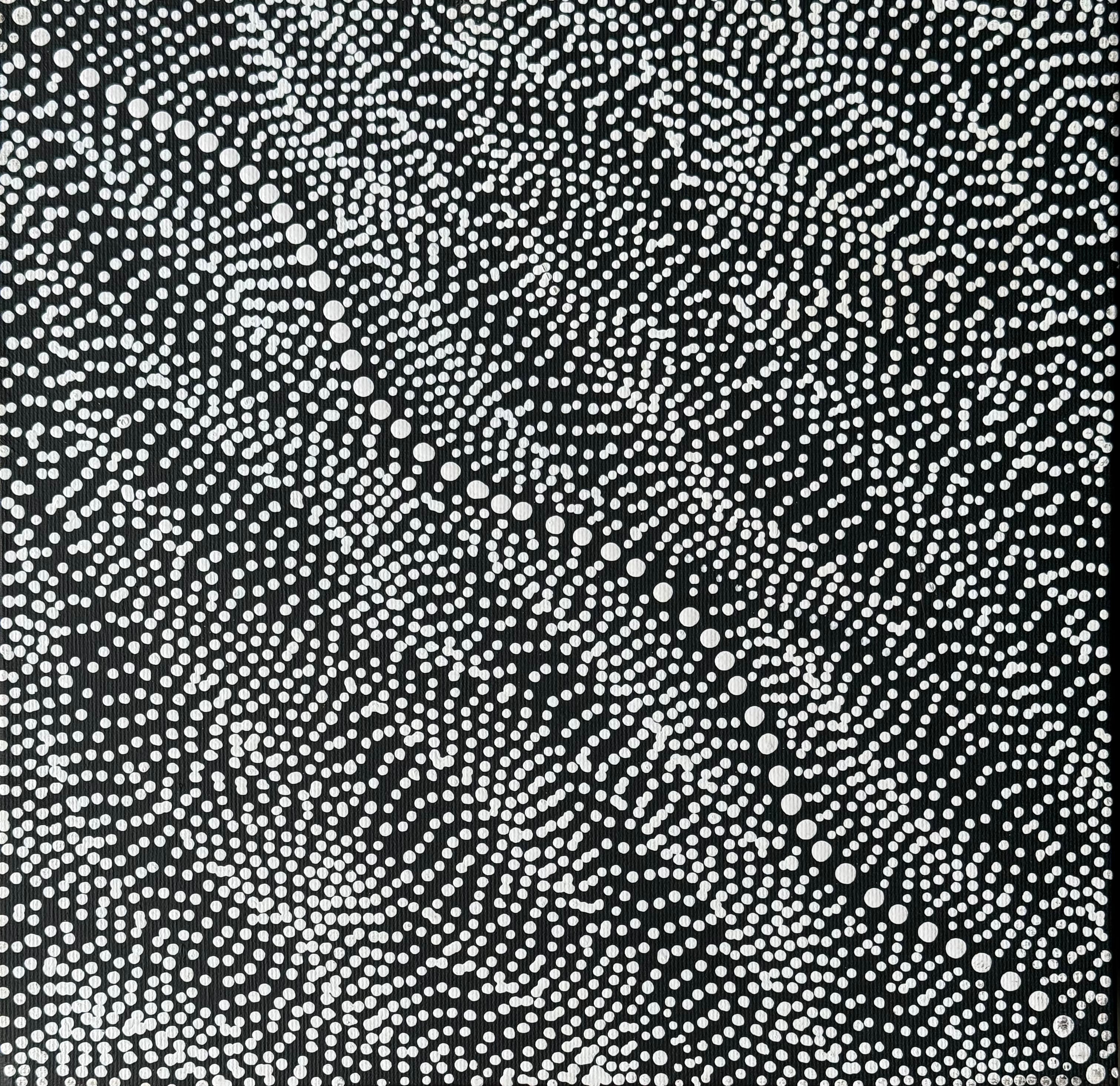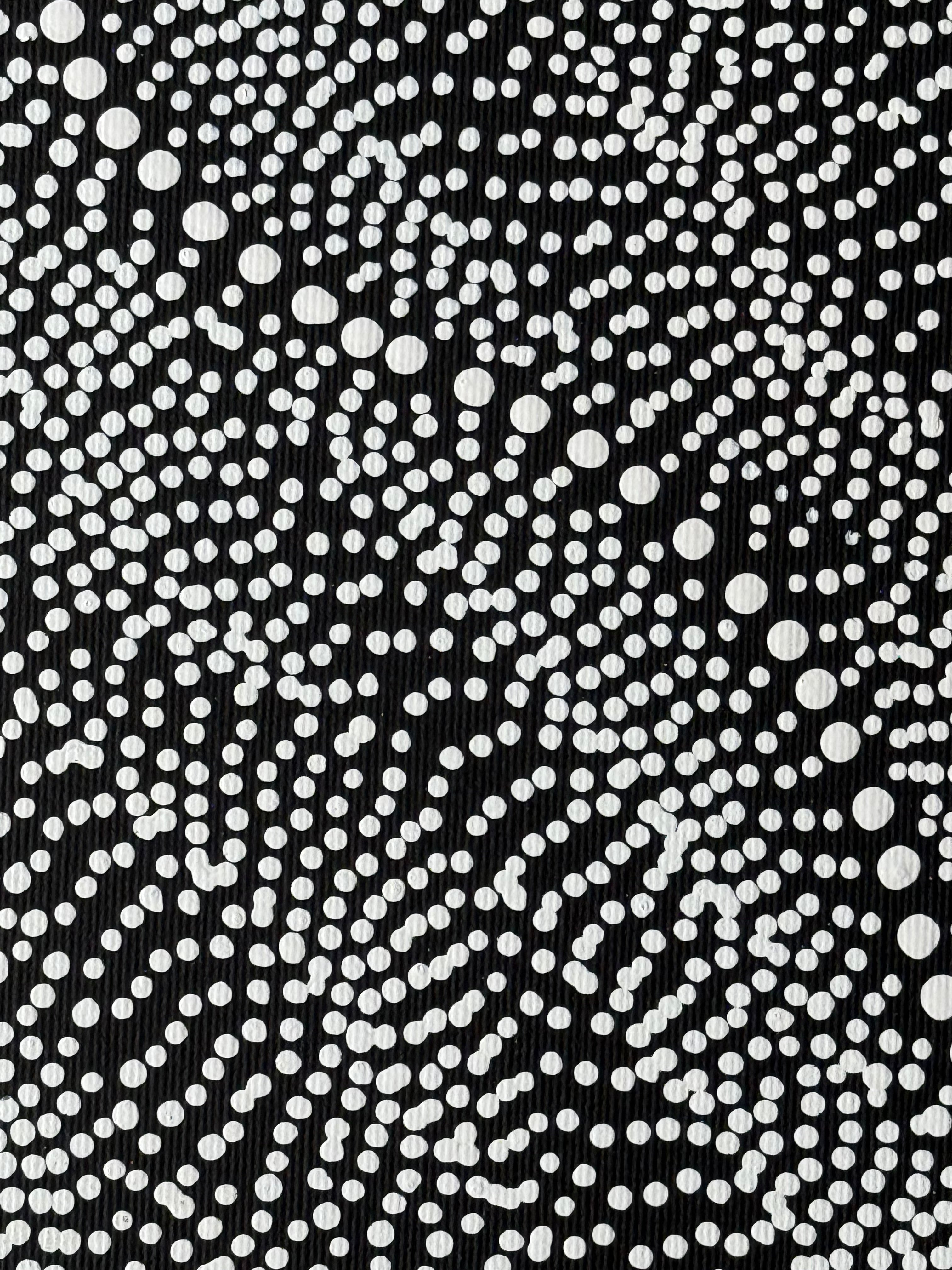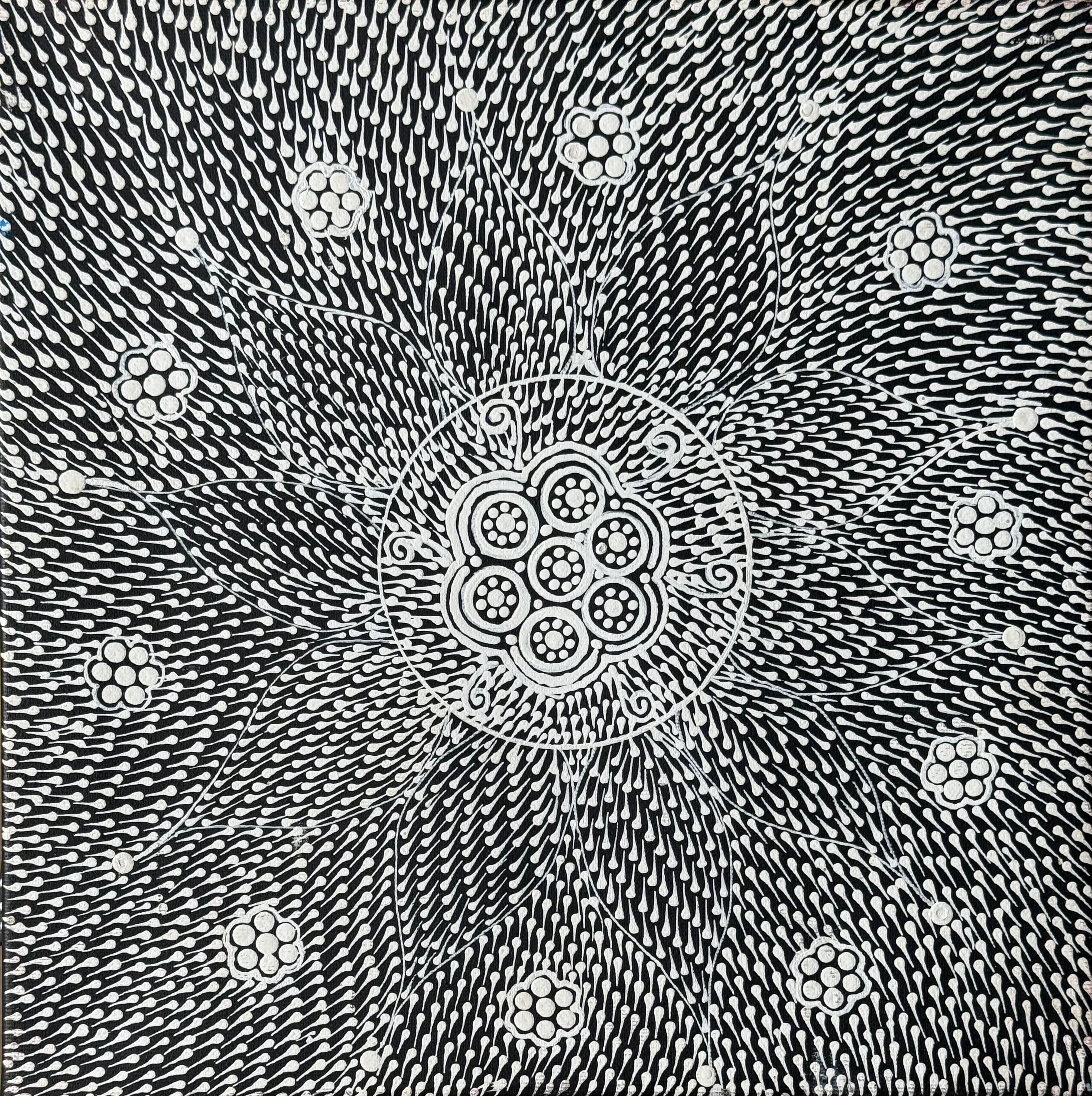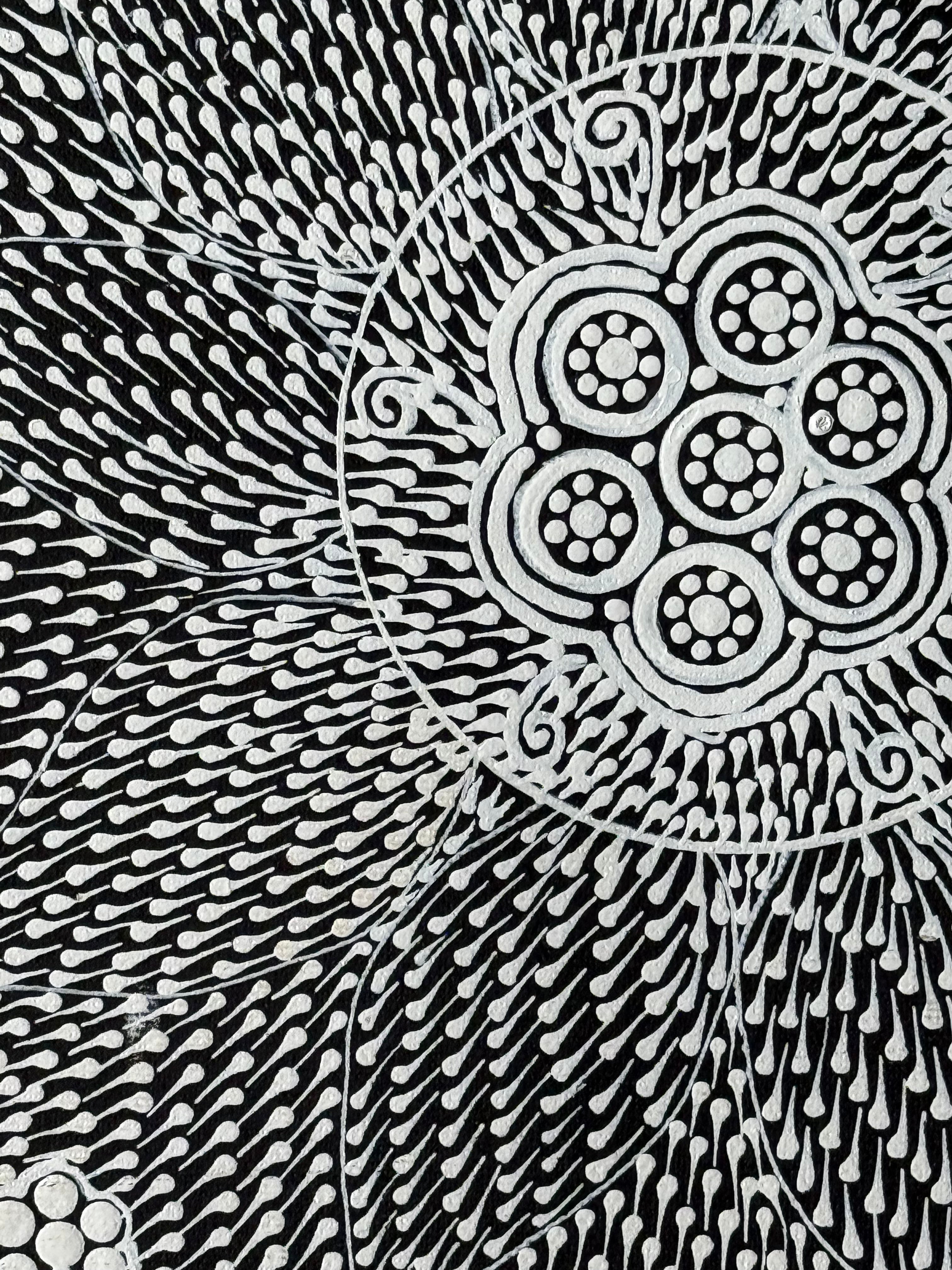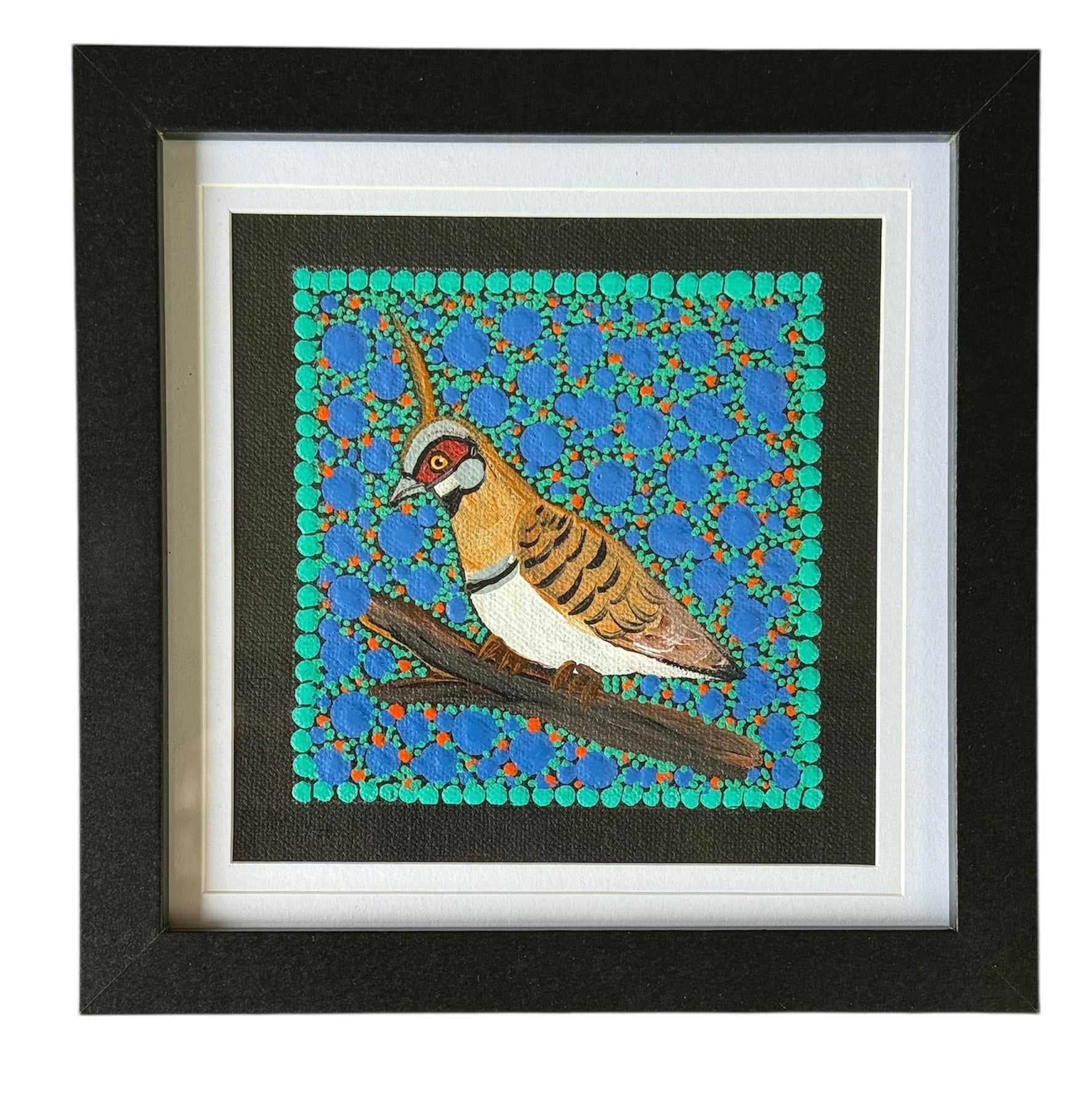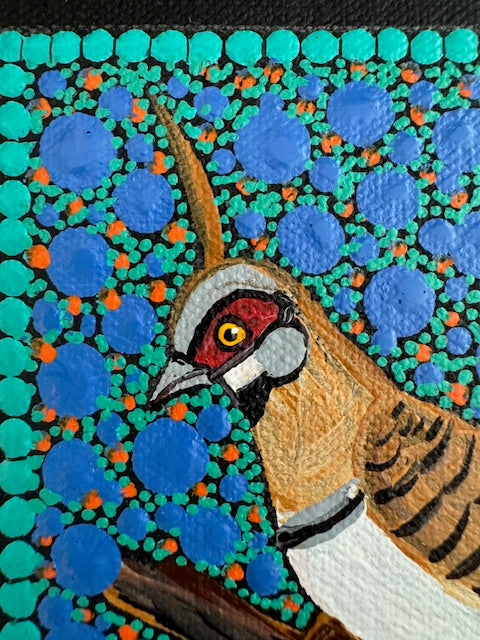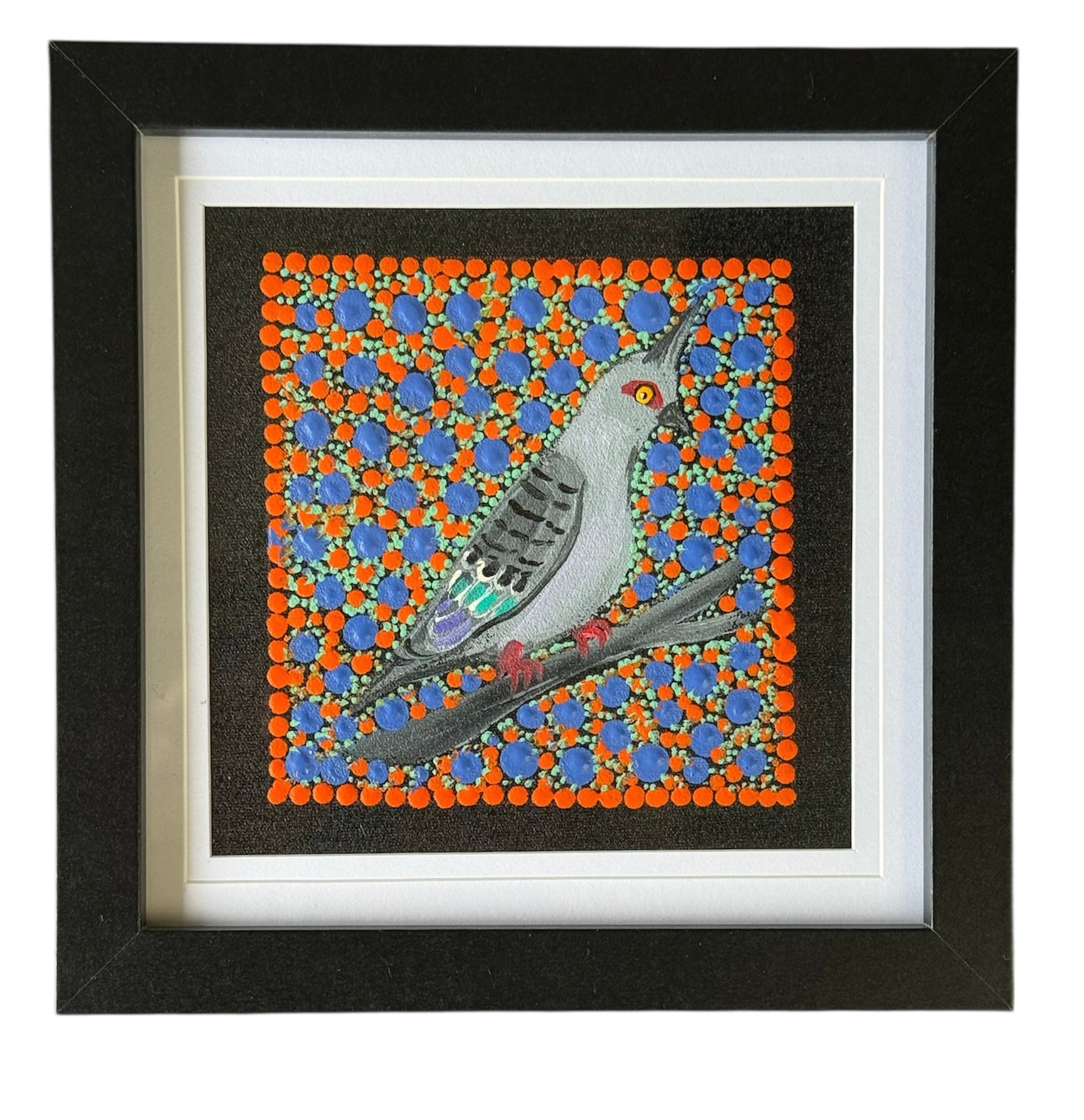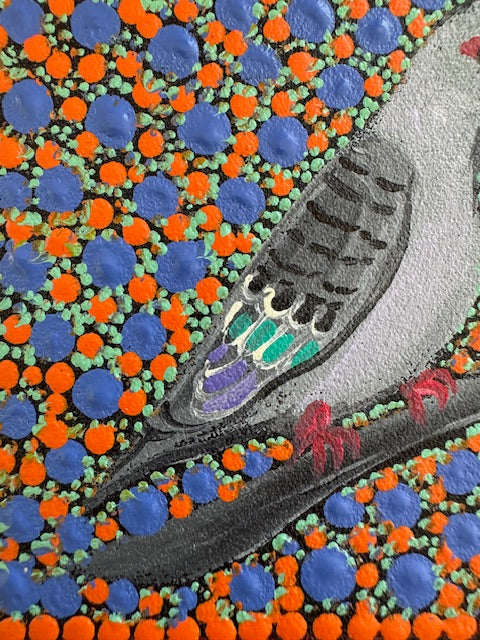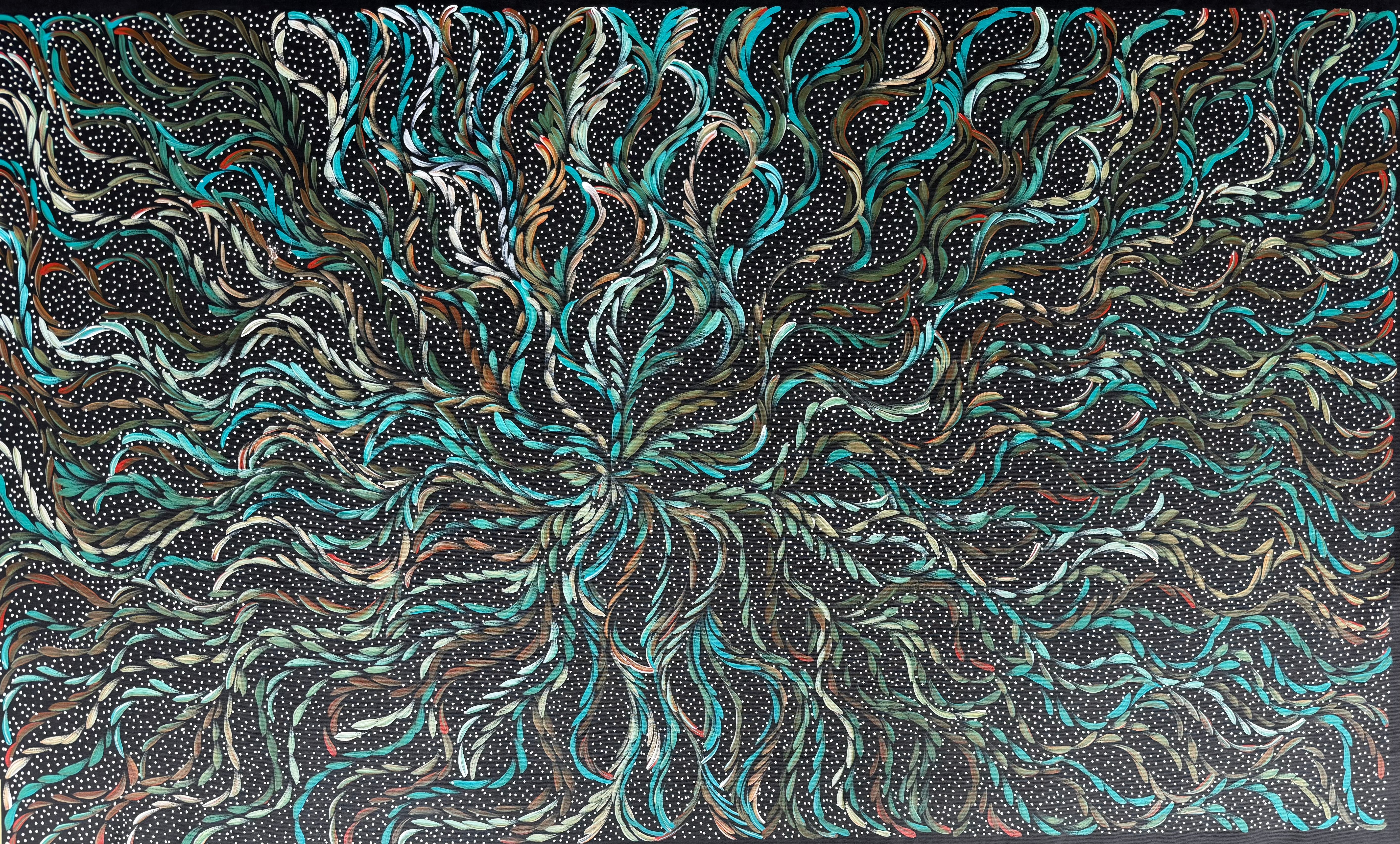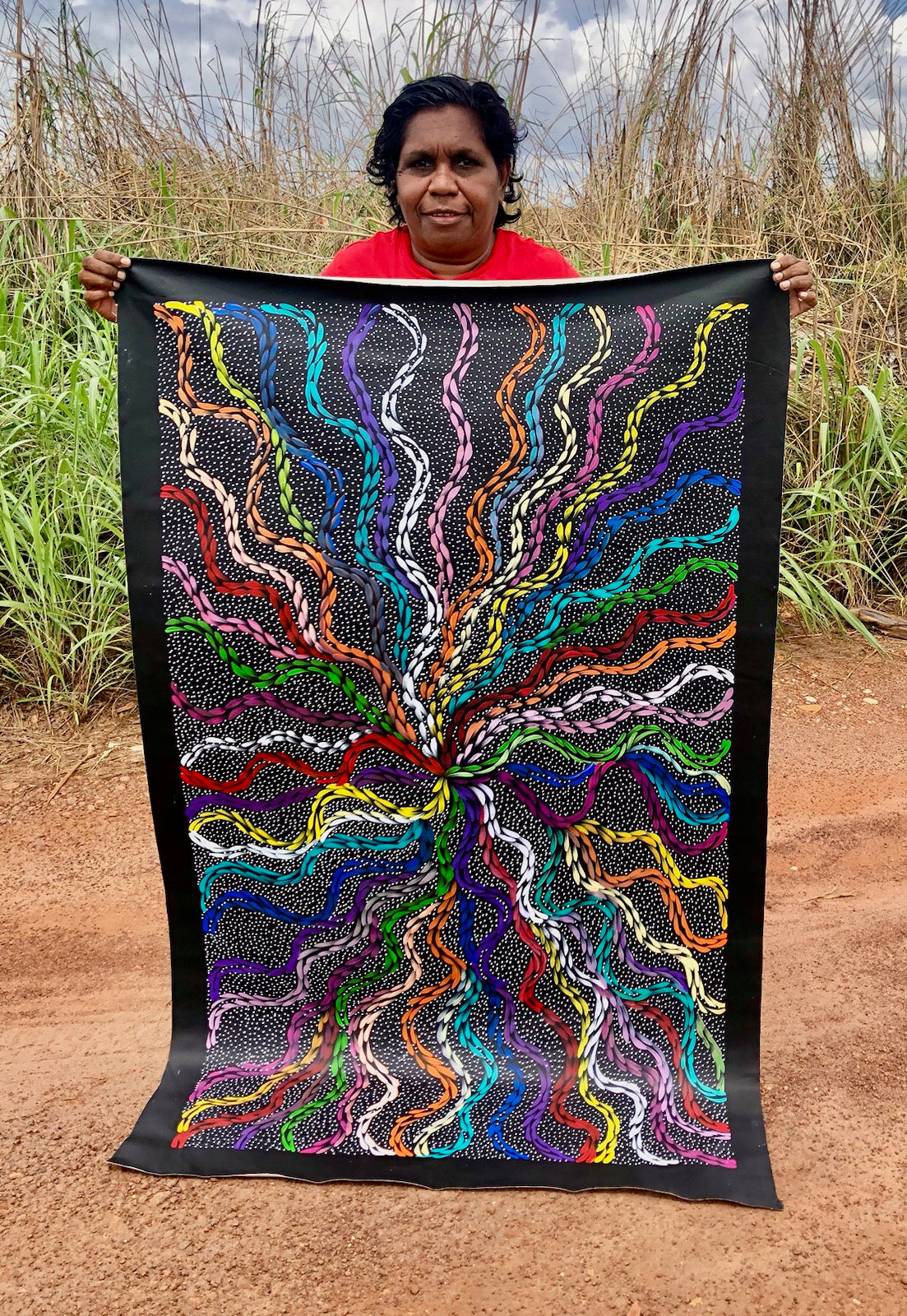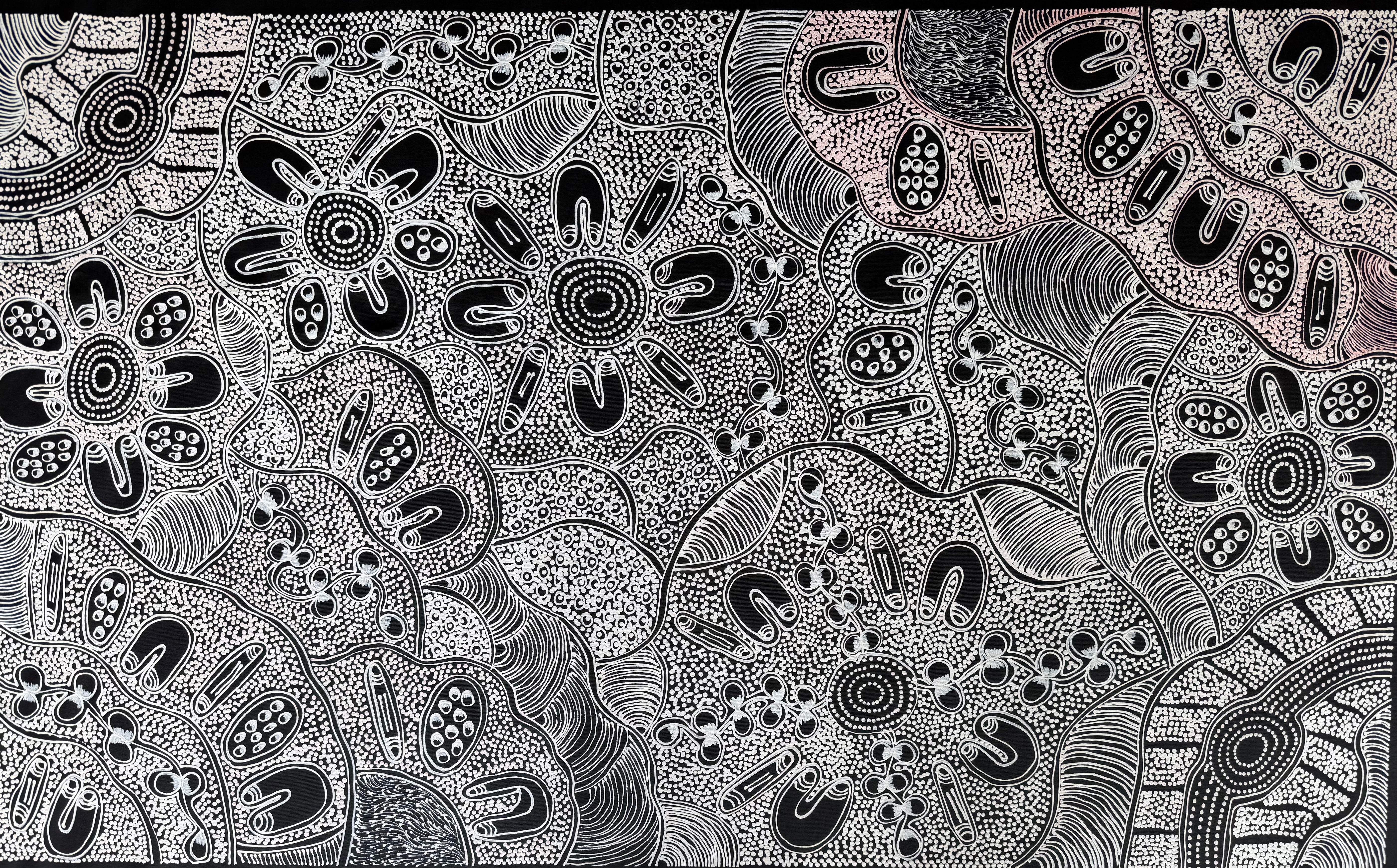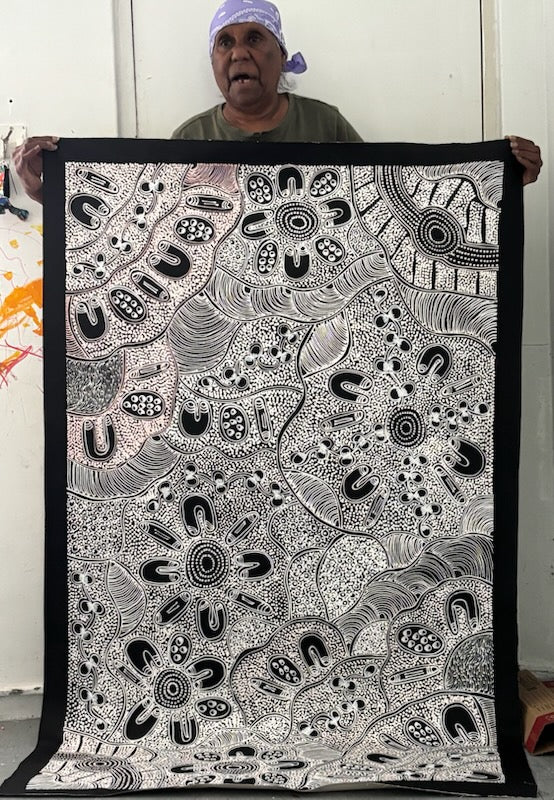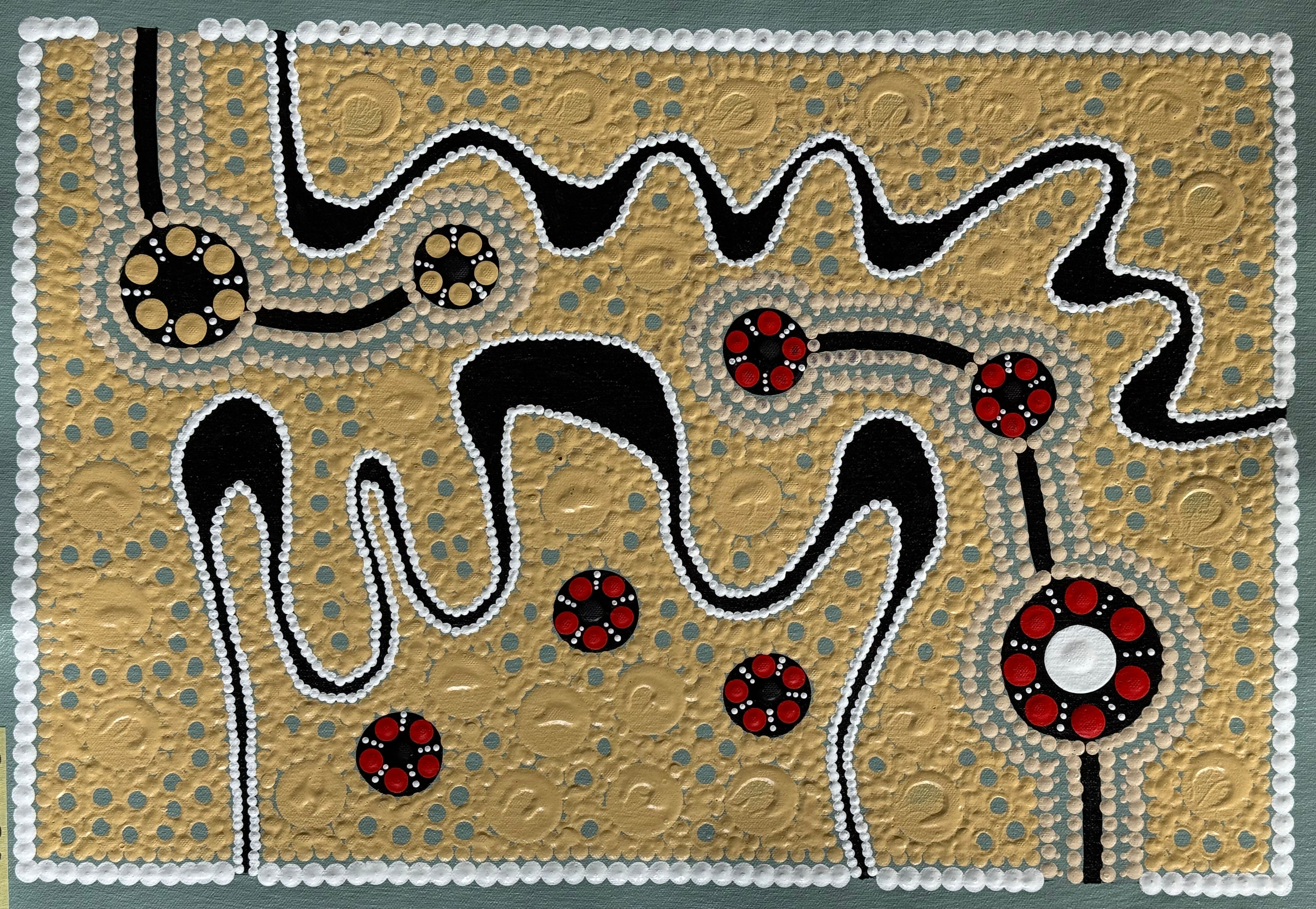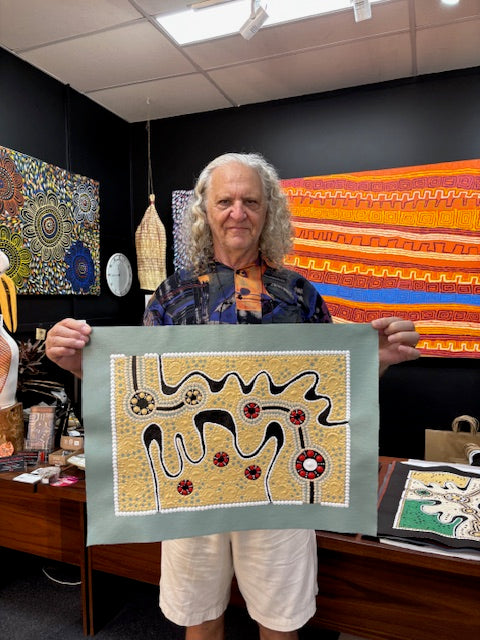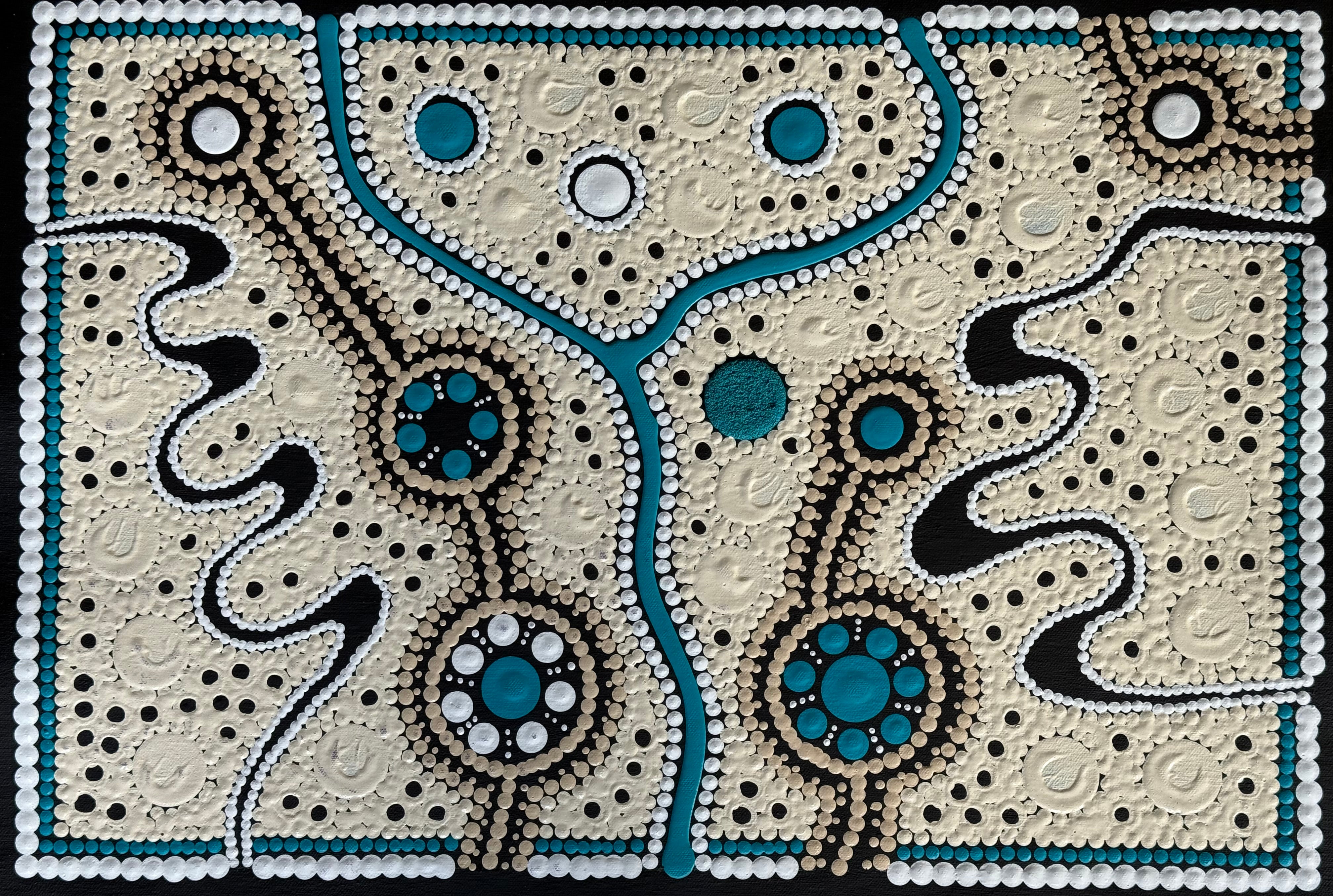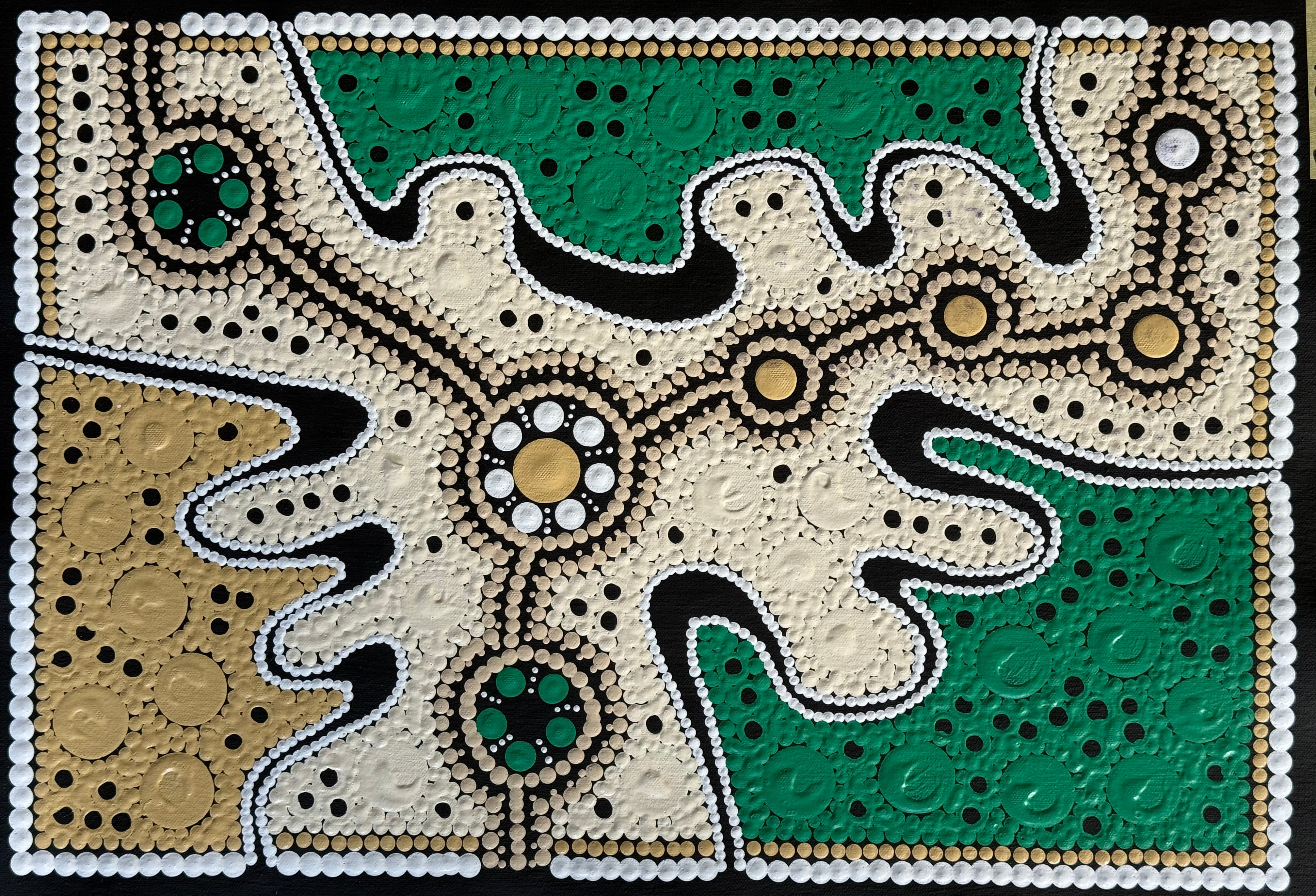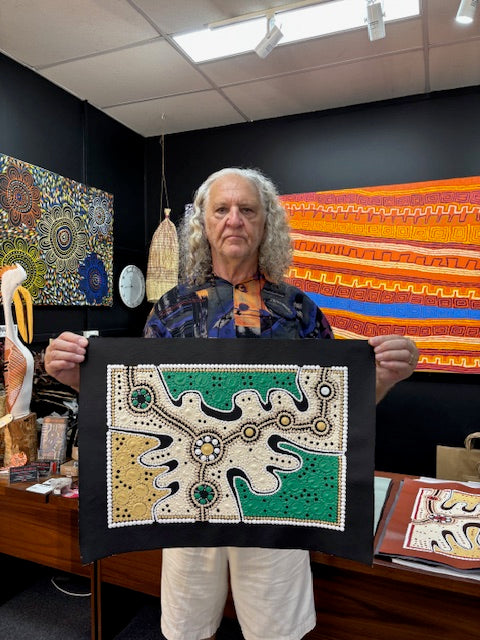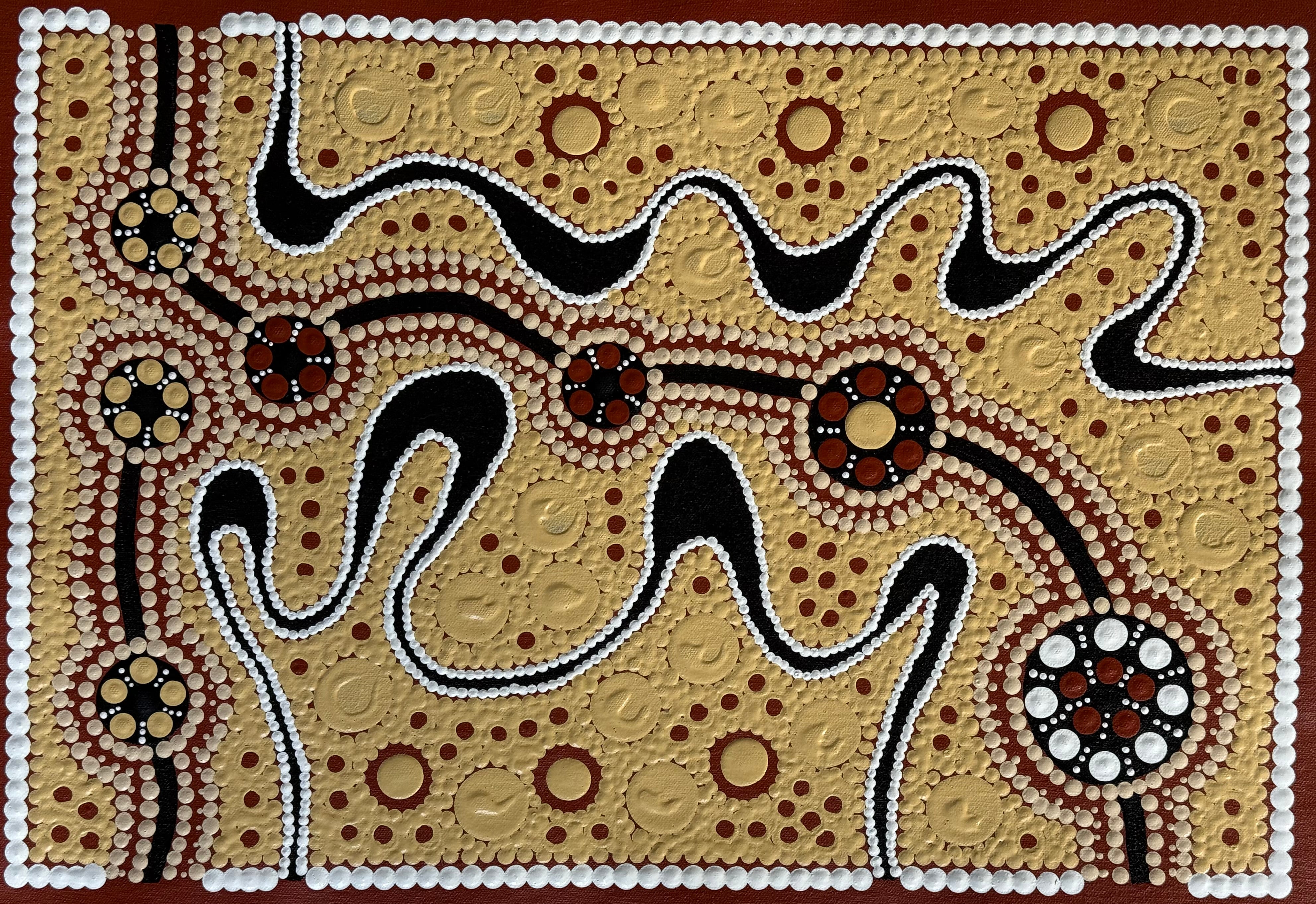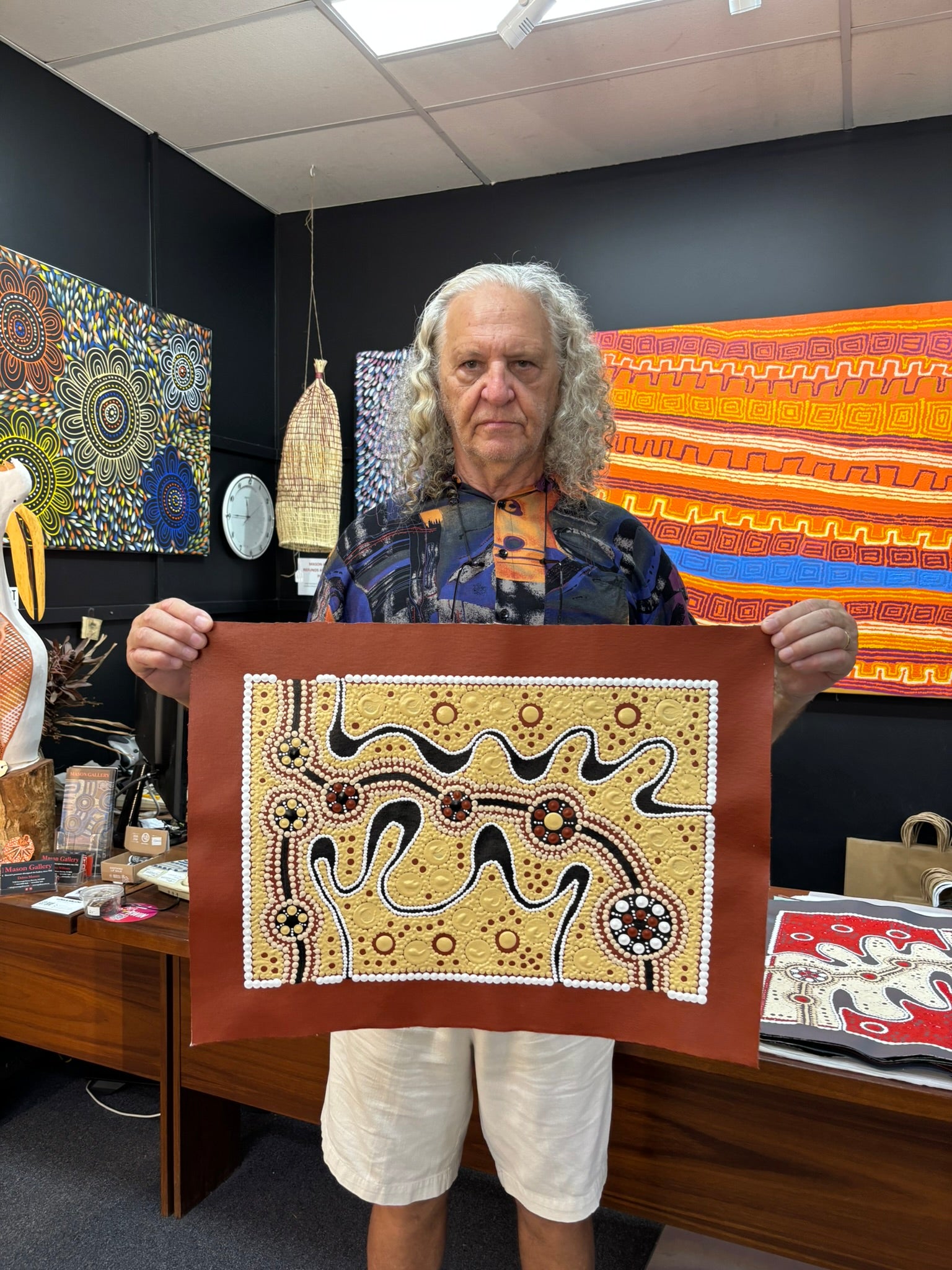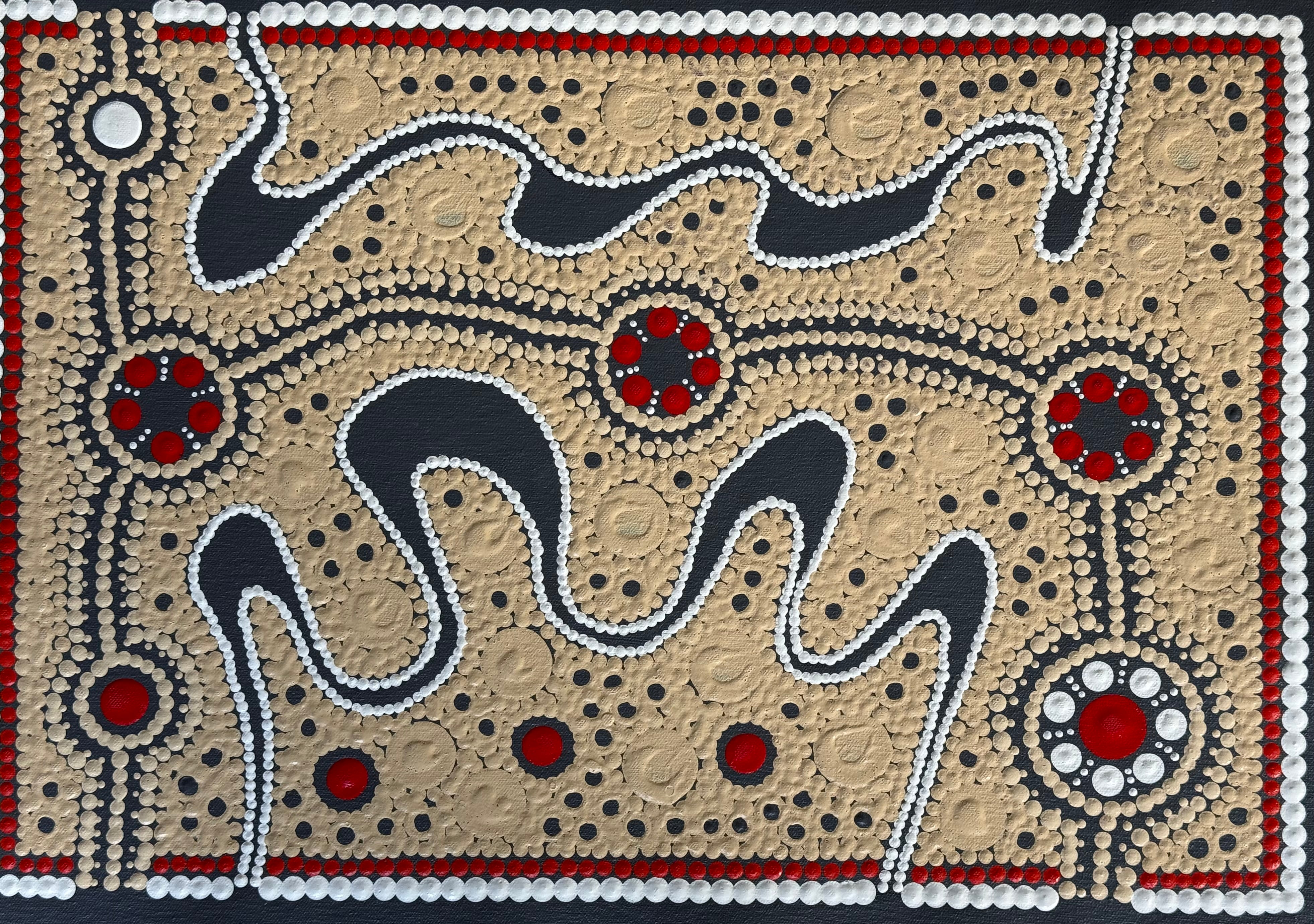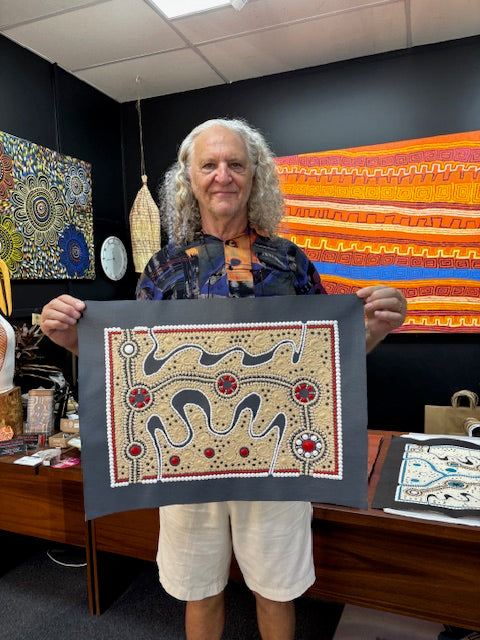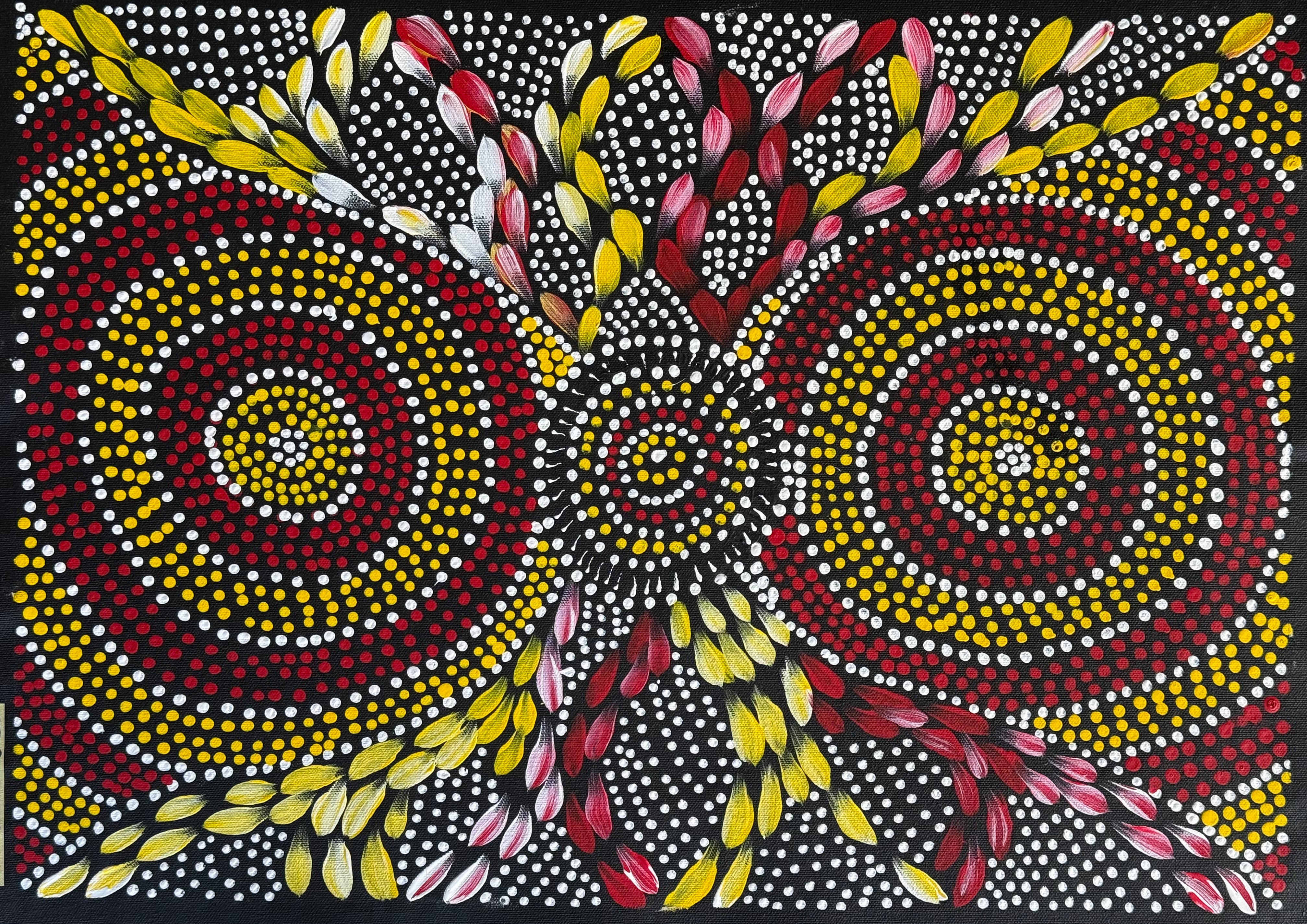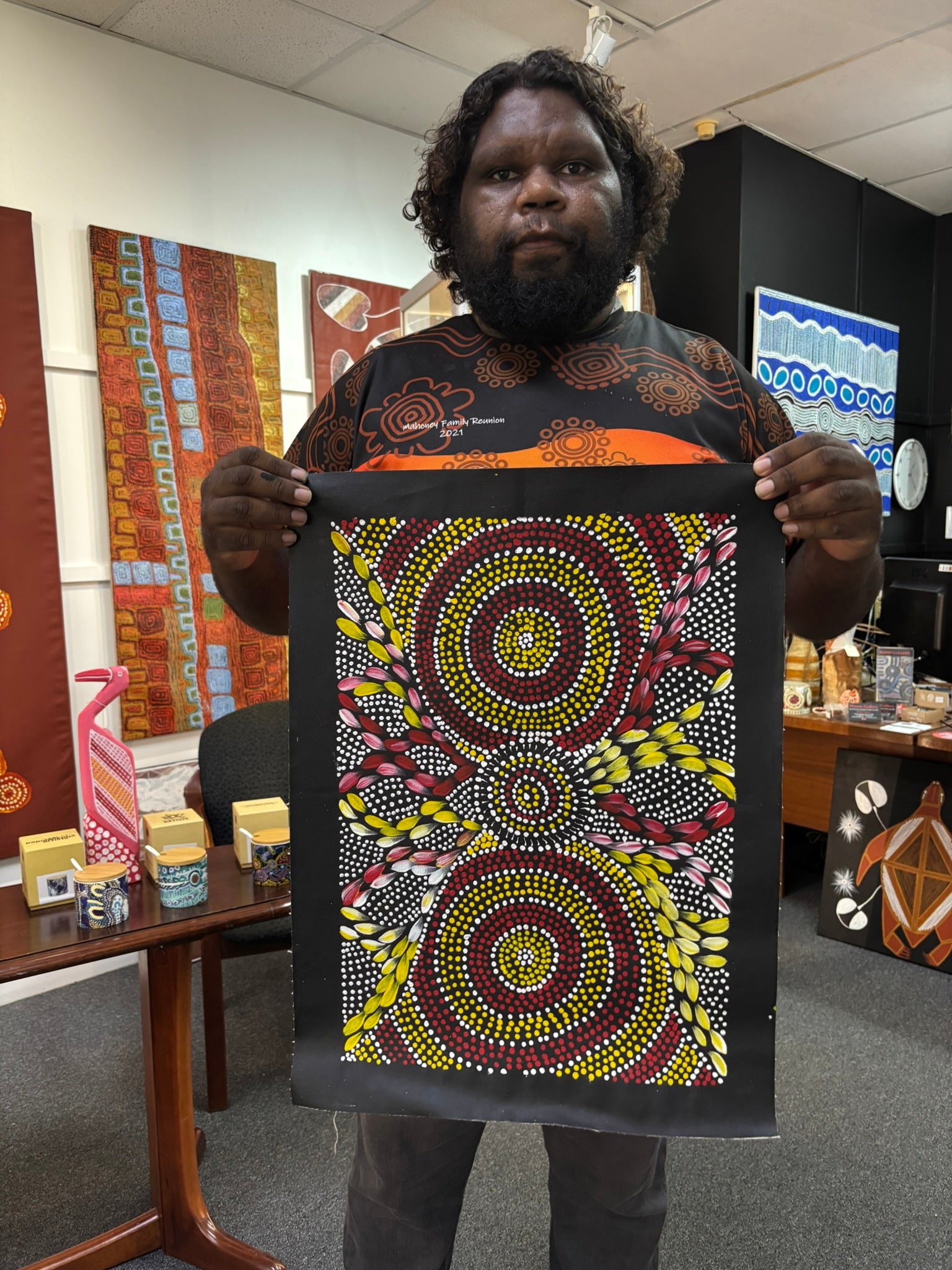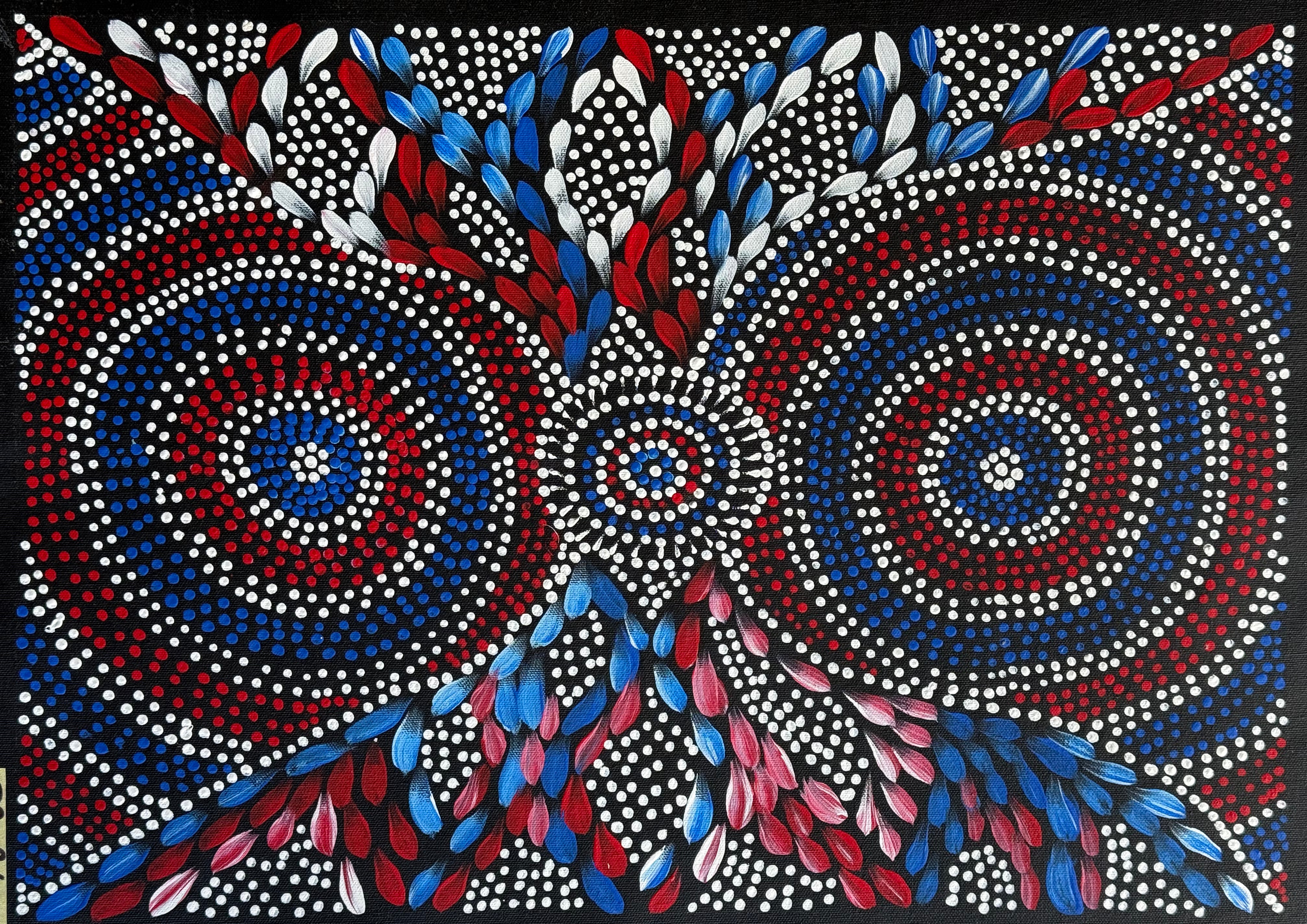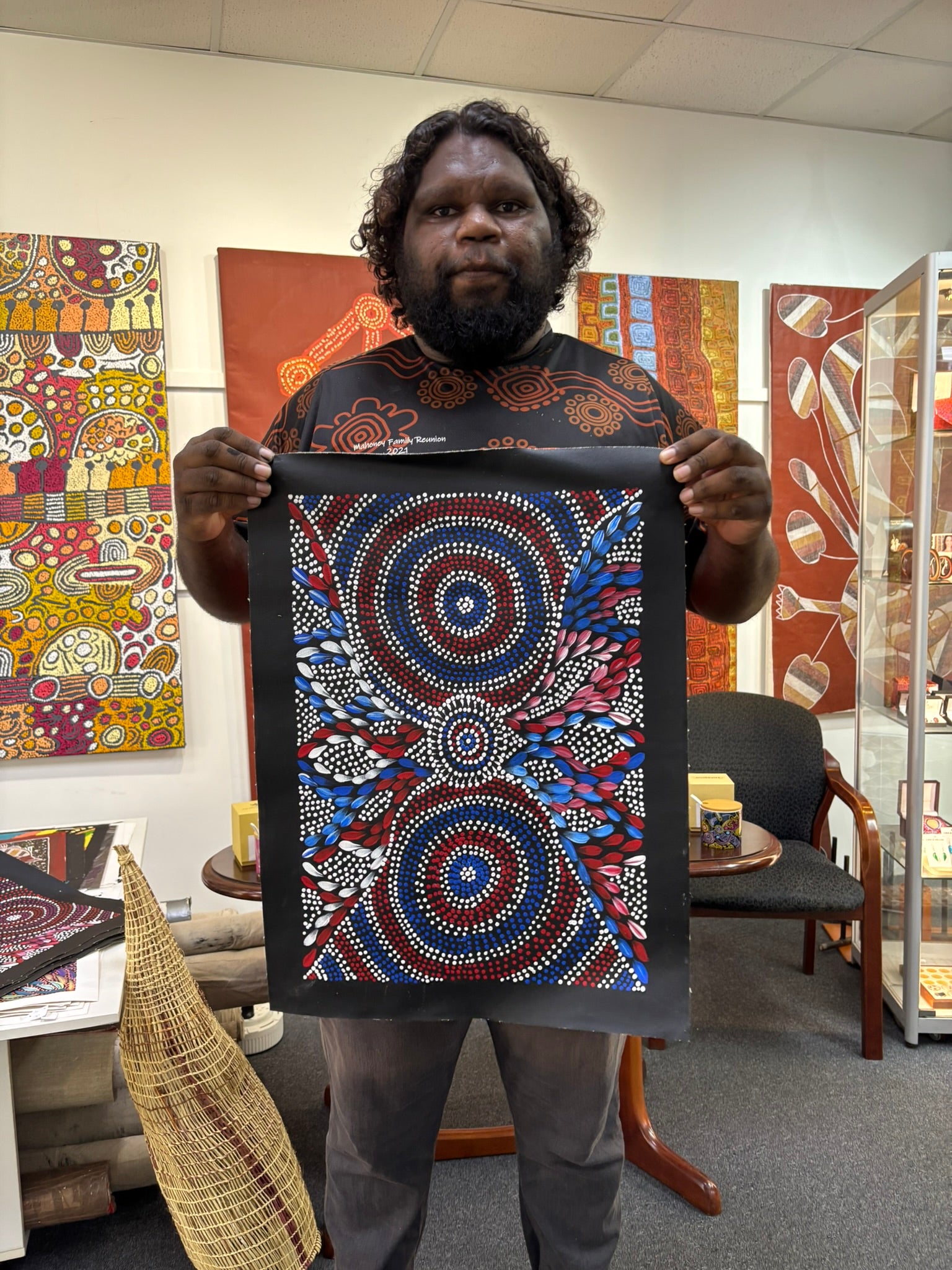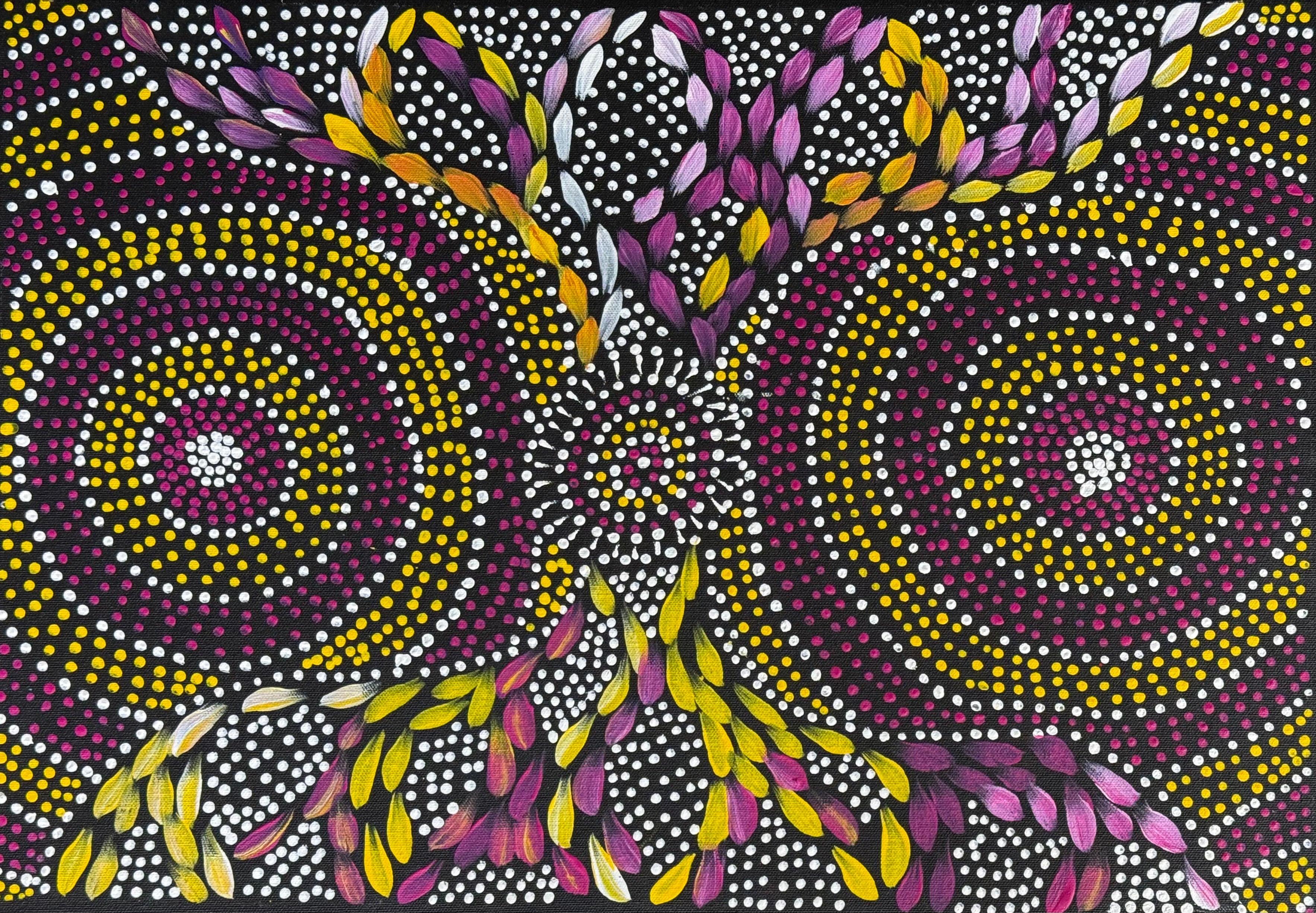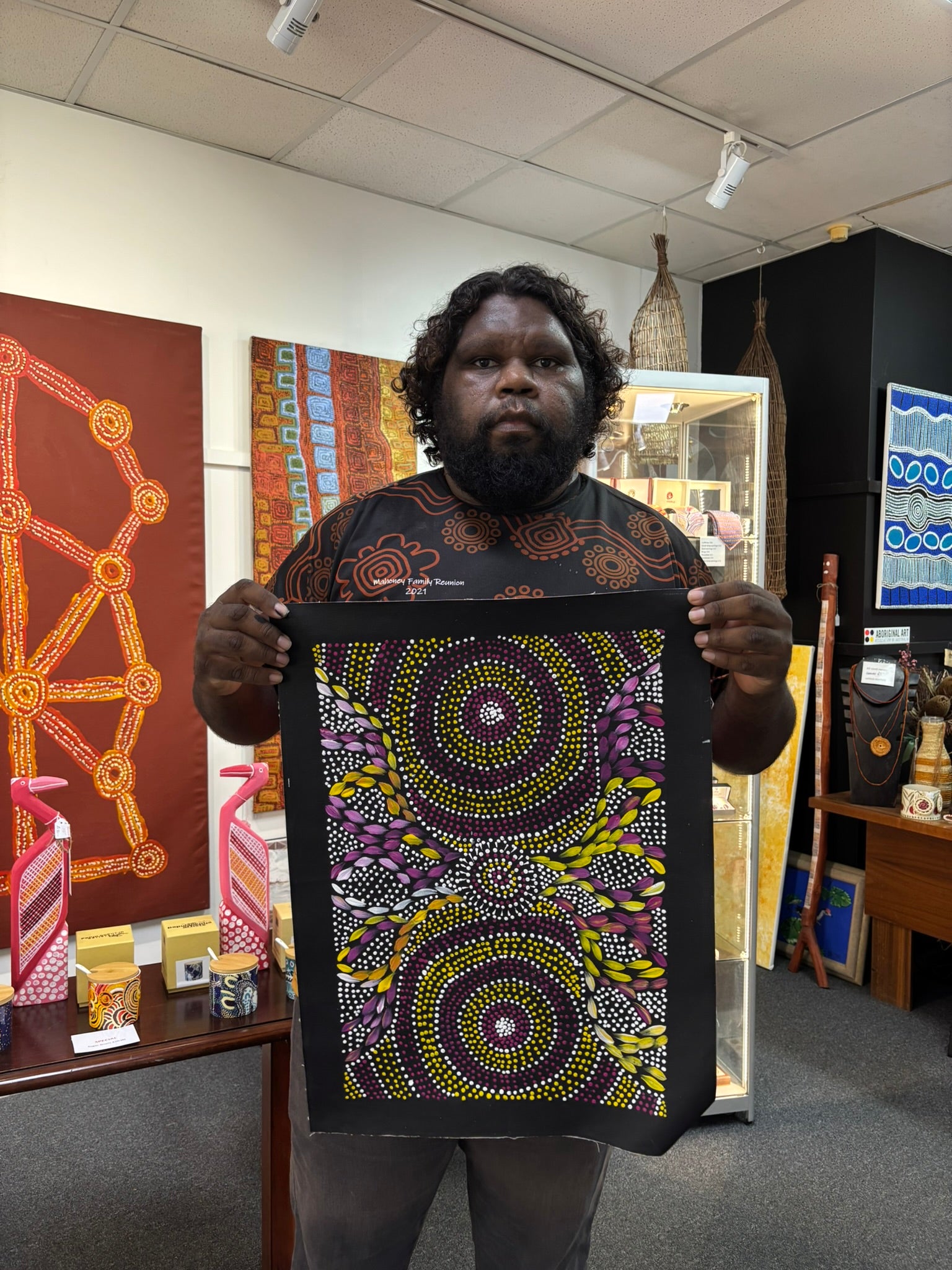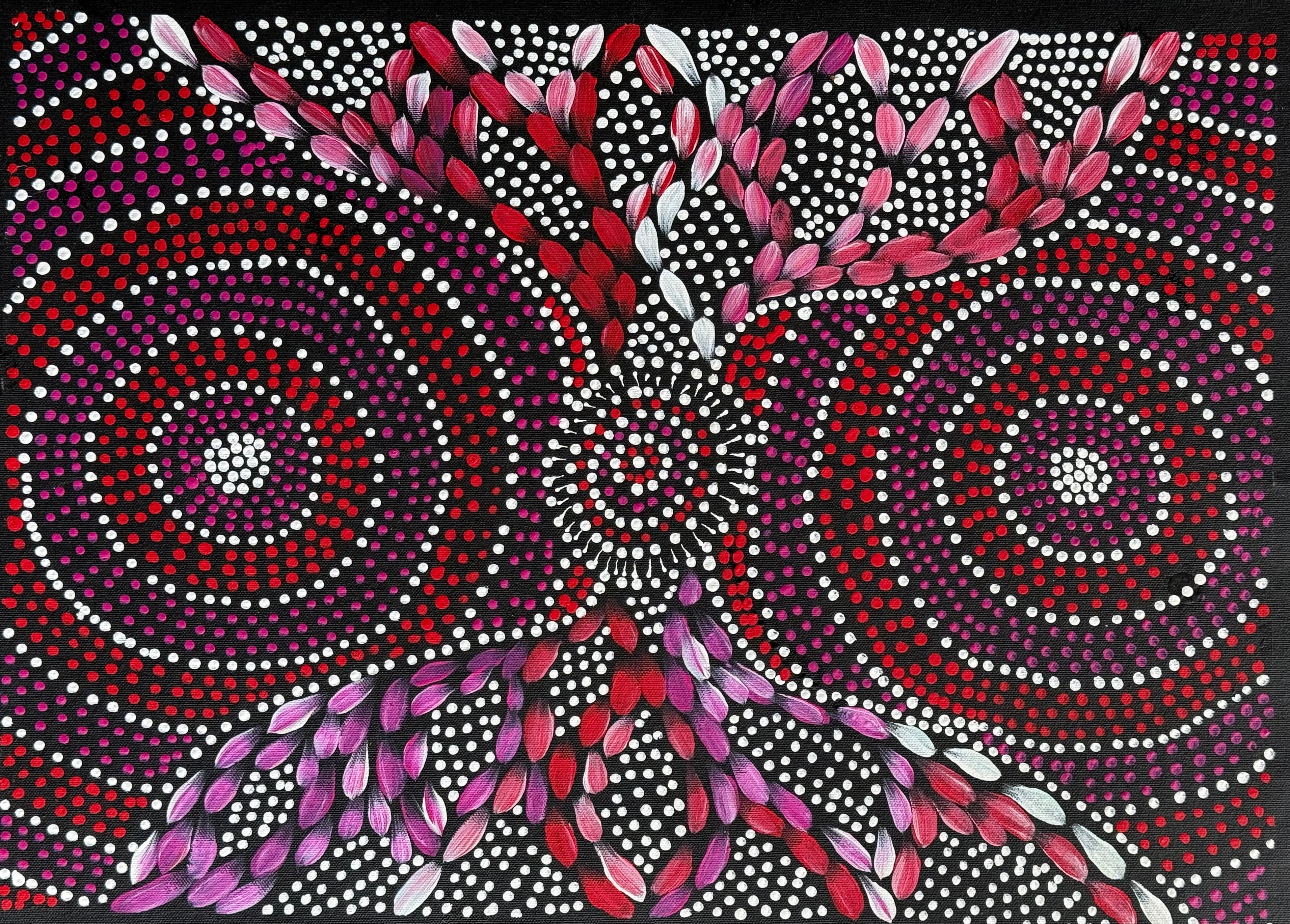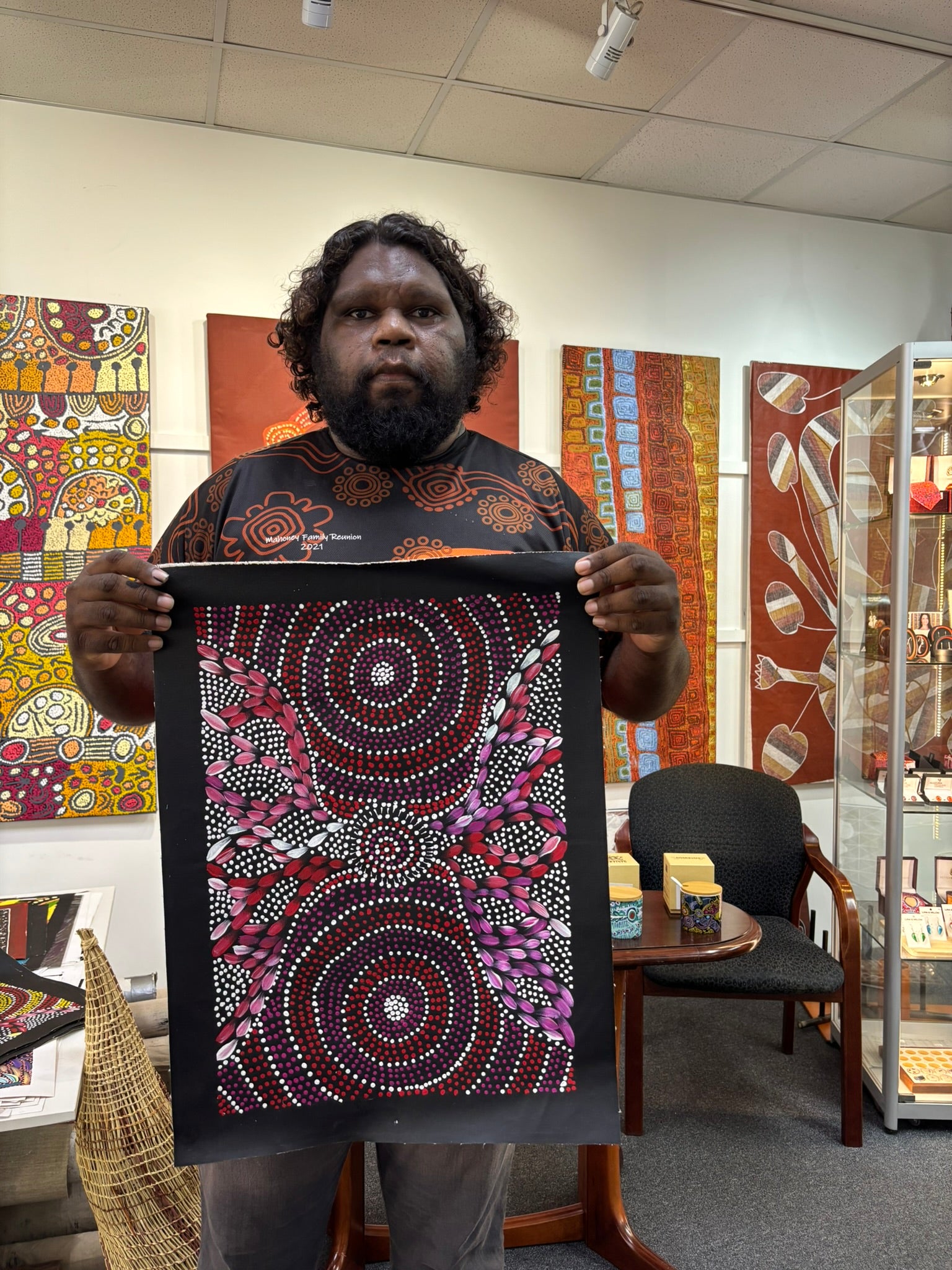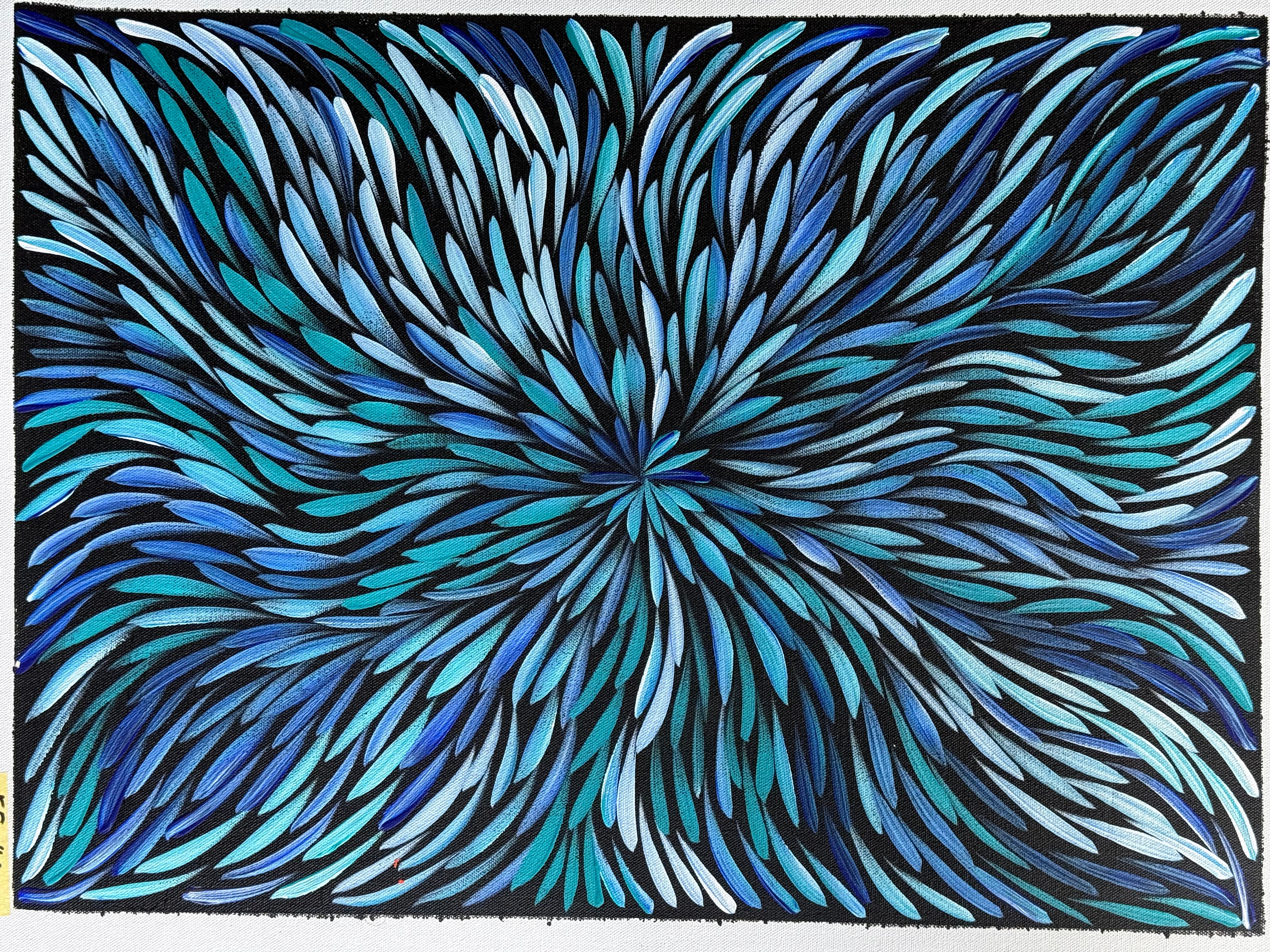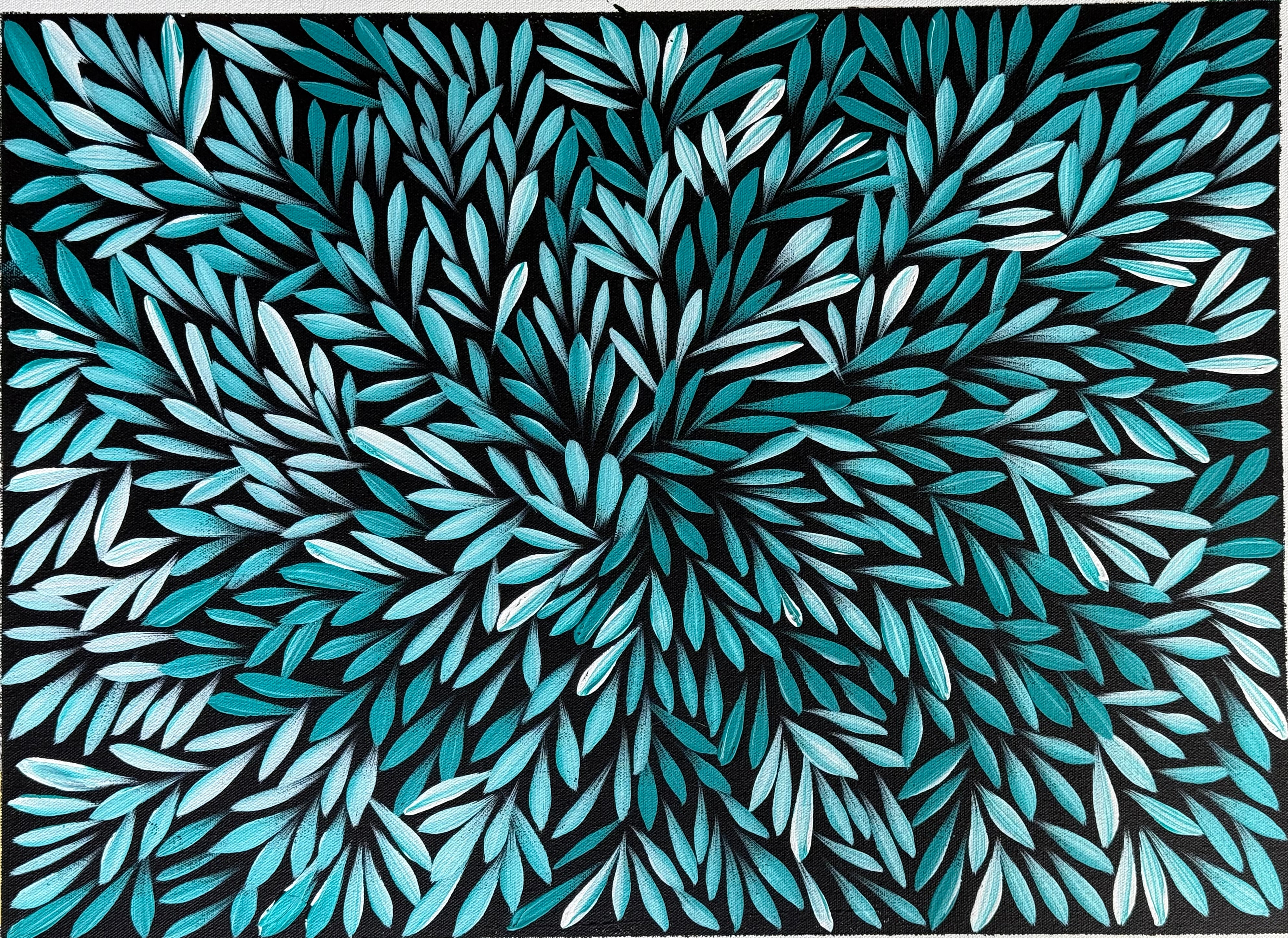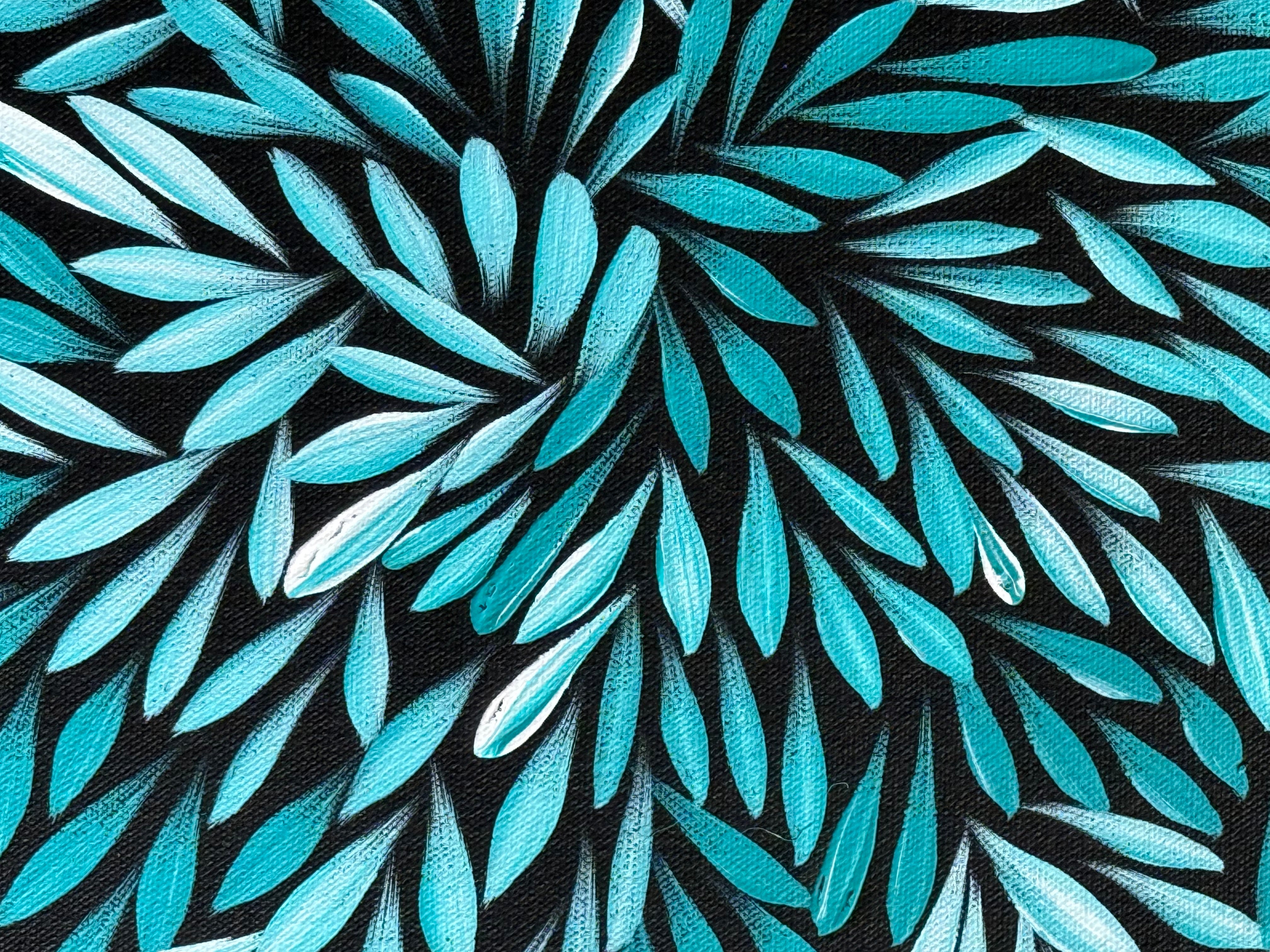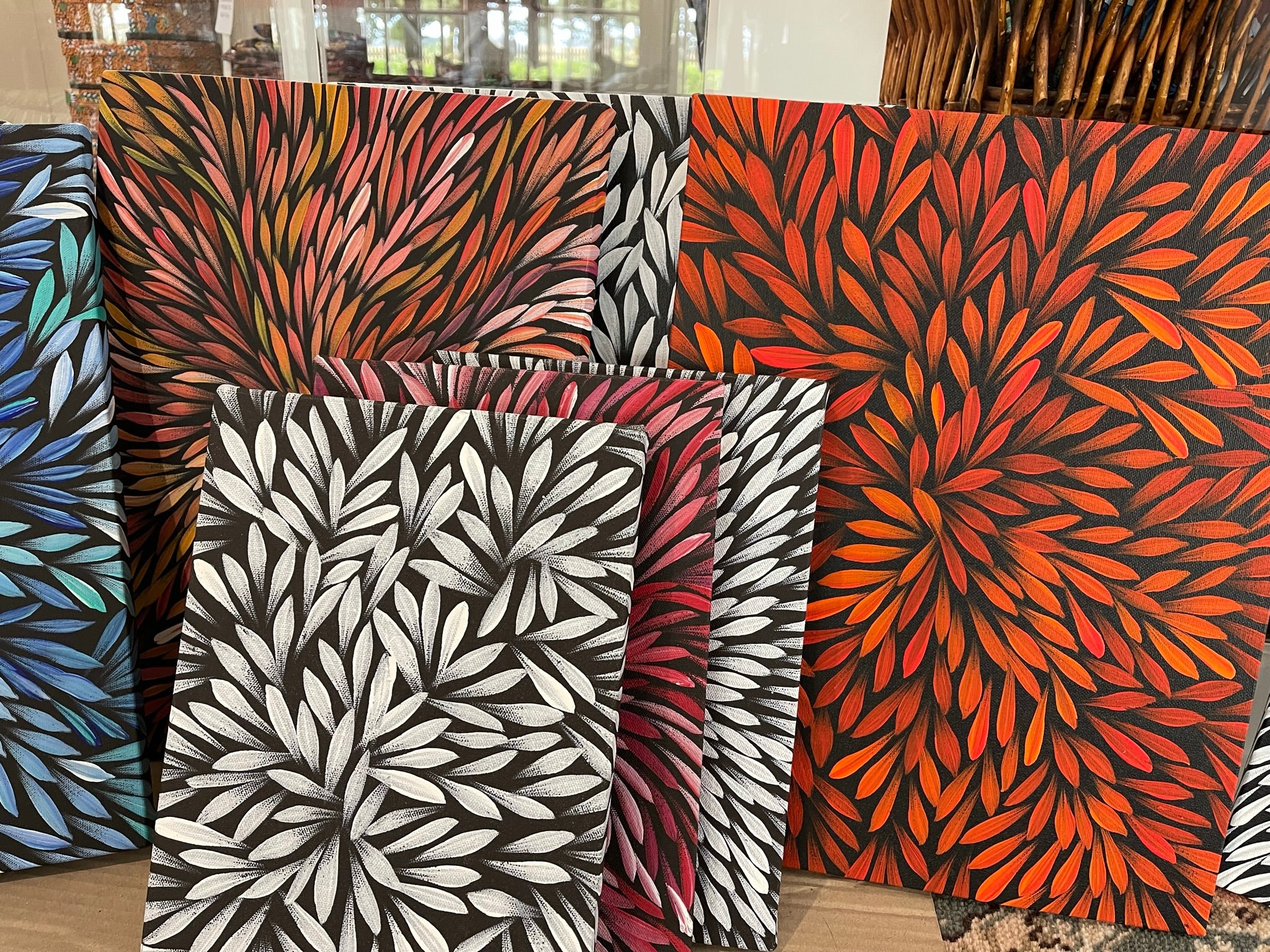
Aboriginal Art/Paintings
Filters
619 products
How was Australian Aboriginal Art created?
The Aboriginal Art we see today is a contemporary incarnation of ancient storytelling traditions. Australian Aboriginal people (also known as Indigenous and First Nations people) across the Australian continent have been using art as a form of creative expression in important ceremonies, storytelling, and to communicate and explain ideas and concepts for over 60,000 years. Australia’s Indigenous people are considered to be the oldest surviving continual civilization in the world.
In the 1970s, Aboriginal people began to adapt modern and contemporary painting mediums and techniques to their traditional art and storytelling. This created an important connection to Aboriginal culture for
non-Indigenous Australians, and as a means for Aboriginal communities to share their stories and ancient traditions more widely, and generate income to support their careers as artists, and their large families. These aspects of contemporary Aboriginal Art are the foundation of the celebrated and widely-acclaimed Australian Aboriginal Art movement for the artists, galleries and the customers who purchase pieces for their homes.
Why do Aboriginal Artists use dots?
The origins of Central and Western Desert ‘dot art’ are deeply rooted in cultural practices and traditions. Even though this popular and instantly recognisable style emerged as a modern form of expression in the 20th Century, it is connected to ancient traditions of storytelling and cultural preservation. Before the use of canvas and acrylics, storytellers and revered keepers of culture and story shared the details of these sacred stories directly into the surface of the desert using their hands and sticks to create epic Dreamtime stories of their ancestors, the landscape, and ceremony – designs that were, and are, an essential part of a deeply held spiritual connection to the land.
The symbols used in dot art predate the art style itself and have been integral to Aboriginal culture for tens of thousands of years. The patterns and designs in dot art represent more than aesthetic choices – they are maps of Country, narratives of ancestral journeys, and reflections of the artists’ cultural identities. They often depict tracks, waterholes, and other elements of the natural and spiritual world. Dots were also used to obscure sacred symbols and meanings, ensuring that uninitiated viewers could not fully interpret the spiritual and cultural significance of the stories for whom they were not intended.
Did Geoffrey Bardon invent Aboriginal Art in the 1970s?
The short answer is no, of course he didn’t. What he did do was introduce canvas and acrylic paint to indigenous culture.
To explain this in a bit more detail, it’s important to note that dot art, as we recognise it today, began with the Papunya Tula Art Movement in 1971. Geoffrey Bardon, a schoolteacher at Papunya, encouraged the local Aboriginal men to paint their traditional stories on canvas and board. This initiative gave rise to the first dot paintings. Early artists included Clifford Possum Tjapaltjarri, Kaapa Tjampitjinpa, and Johnny Warangkula Tjupurrula, and their work brought attention to Aboriginal art as an important and valuable form of cultural expression.
Before acrylics, natural pigments like ochres were used, but they were less durable and therefore prone to disintegration over time. The acrylic paints introduced by Bardon allowed the artists to explore the integration of more vibrant colours that could reflect a vast range of ecological and environmental elements of their storytelling, while also ensuring the longevity and preservation of these important works. Today, dot art continues to evolve, blending traditional and contemporary elements, but the essential elements of each story remain connected to their cultural origins.
When Aboriginal people first started creating art to be purchased by outsiders, dots became a tool that was used to mask sacred symbols in the artwork. Dots were of course used prior to the 1970s, but this is when they became more abundant. The reason for this is that Aboriginal Art carries a lot of power, a kind of power that most non-Indigenous people are not familiar with, a sacred power linked to Country. This is not the kind of symbolism to which anyone could simply have access.
Although some symbolism has become more explicit in Aboriginal Art, and in some instances the dots serve as more of a cultural-visual language, they are still used at times to obscure sacred knowledge.
Why is provenance important?
Establishing provenance is critical for a number of reasons. The most important of these is to establish the work’s authenticity. This involves verifying that the work is genuine and created by the artist to whom it is credited. While this would be impossible in the non-Indigenous Art world (with arguably some European exceptions), the stories shared throughout the Aboriginal Art Movement are ‘signature pieces’, and the permission to paint often quite specific stories rests, forever, with particular artists and their families. The late, great Gloria Petyarre, for example, was the first artist to paint the ‘Bush Medicine Leaves’ women’s ceremony, for which she would become the first Indigenous Artist to win the prestigious Wynne Landscape Prize in 1999. Throughout the evolution of the Aboriginal Art Movement after Gloria, it was, and is, only ever the female members of Gloria’s biological and extended family by association who are able to paint the details of this ceremony. The provenance, then, when examining a painting about the leaves used in this ceremony, involves tracing the origins of the piece back to Gloria.
Why is the cultural significance of Aboriginal Art important?
The cultural significance of a painting is vital when establishing provenance. Defining a piece’s cultural significance within the Movement or the artist’s career, provides the context about the artwork’s cultural background, historical significance, and the artist’s intent, which enhances our appreciation and understanding of its place in the Movement. Defining a piece’s cultural significance can sometimes be as straightforward as recognising the subject of the painting as sharing details of a significant Dreamtime story, or how the artist had permission to paint a particular story. On other occasions, it can be about the artist sharing the choice of their colour palette, which is often associated with the colours of their Dreaming.
Defining a work’s cultural significance often extends beyond the cursory first glance and becomes about the place of the work within the trajectory of the artist’s career, where the piece was painted, and why. When
Caroline Numina, for example, returns to Darwin from her regular visits to her home (the Utopian Aboriginal Lands of the Eastern Desert), her paintings, by her own admission, take on a profound and deep connection to her Country. This is not to say that these paintings are any more important or valuable, but they represent a stronger connection to Country and to the ancestral subjects that inform and speak to us through Caroline’s work.
Why are ethics important?
The ethics relating to acquisition and ownership of a particular piece is the cornerstone of the establishment of provenance. In the case of the Aboriginal Art Movement, ethical concerns about acquisition, representation, ownership, and cultural appropriation are critical to securing a piece’s rightful place in museums, galleries and private collections in Australia and around the world. Examining the ethics of acquisition begins with the moment the painting is brought to the point of initial sale/exchange. This can have occurred through a number of means, including, but not limited to, art galleries, artist’s studios (including their homes and/or established studios in towns and regional centres, established Aboriginal Community Art Centres on Country, and/or auction houses).
At the point of first exchange, the buyer must determine who the painting is by, the title, the story that is represented in the work, when it was painted, what medium, what material, and the measurements. The convention, then, is to attempt to ascertain as much information about the subject of the painting as is possible and permissible, and to clearly document these details on a ‘Certificate of Authenticity’ or ‘Certificate of Authentication’. These details can include the artist’s date of birth, their Country, and their language group. It is also at this point that the work will be given a dedicated catalogue number – a unique identifier for that particular painting as it begins its journey to market. A ‘Holding shot’ of the Artist displaying their painting for the camera is then taken (if the Artist agrees), and this photograph is then included on the Certificate of Authenticity. It is this Certificate of Authenticity that will, for the life of the painting, accompany it for prosperity and documented proof of the work’s authenticity.
Why is Aboriginal Art important?
Today, non-Indigenous collectors of Aboriginal Art have more insight than ever into the stories behind the paint, but much of the knowledge that forms the core of these stories is still sacred, and the creation of the artwork comes from something far deeper than pure aesthetic value.
When we think about how big the Australian Aboriginal Art movement has become, and how prolific contemporary Aboriginal artists are, it is often suggested that Aboriginal Art is now simply a money maker, and that the sacredness has been swallowed by consumerism. This is absolutely not the case. The style presented in authentic Aboriginal Art has indeed been appropriated by non-Aboriginal people who are simply trying to make money by generating inauthentic pieces.
But although the market for authentic Aboriginal Art has grown exponentially since the 1970s, and although generating income is still a really important part of Aboriginal Art, the stories that are depicted are no less sacred. Artists still paint from a place of connection to Country, they still draw from sacred knowledge. This is an aspect of Aboriginal Art that is increasingly crucial to realise, as preservation of these stories is critical for so many First Nations. The need to communicate through art is as vital as ever.
By collecting Aboriginal art, we not only enrich our lives with compelling and meaningful works, but we also play an important role in celebrating and sustaining the culture and legacy of the world’s oldest surviving civilisation. Aboriginal art is one of the oldest continuing artistic traditions in the world, dating back over 60,000 years. Collecting and preserving this art ensures that these traditions, stories, and cultural expressions are valued, present and admired in our daily lives, and passed on through our families to future generations.
This is why Aboriginal Art is, and will continue to be, important.

Ethically Sourced
All of our artwork is ethically sourced and created by Australian artists
Unique Designs
We offer a wide range of Aboriginal Art from paintings to homeware
Customer service
Please use 'Chat with us' if you have any questions
Worldwide shipping
Tel your customers about your payment methods.


